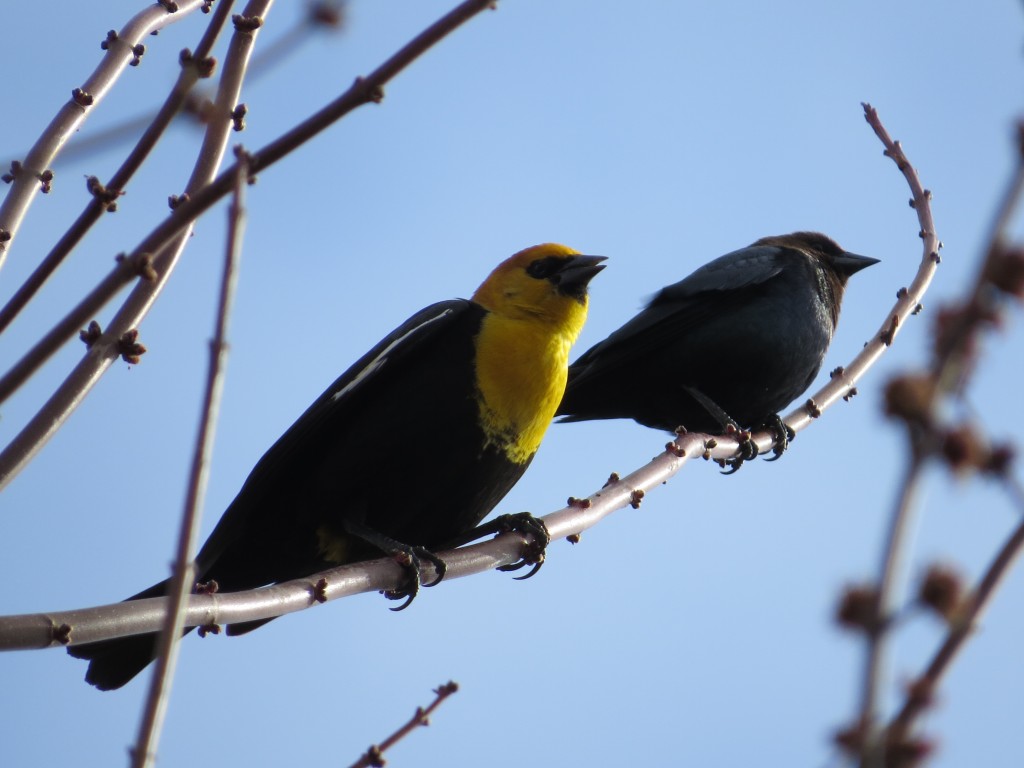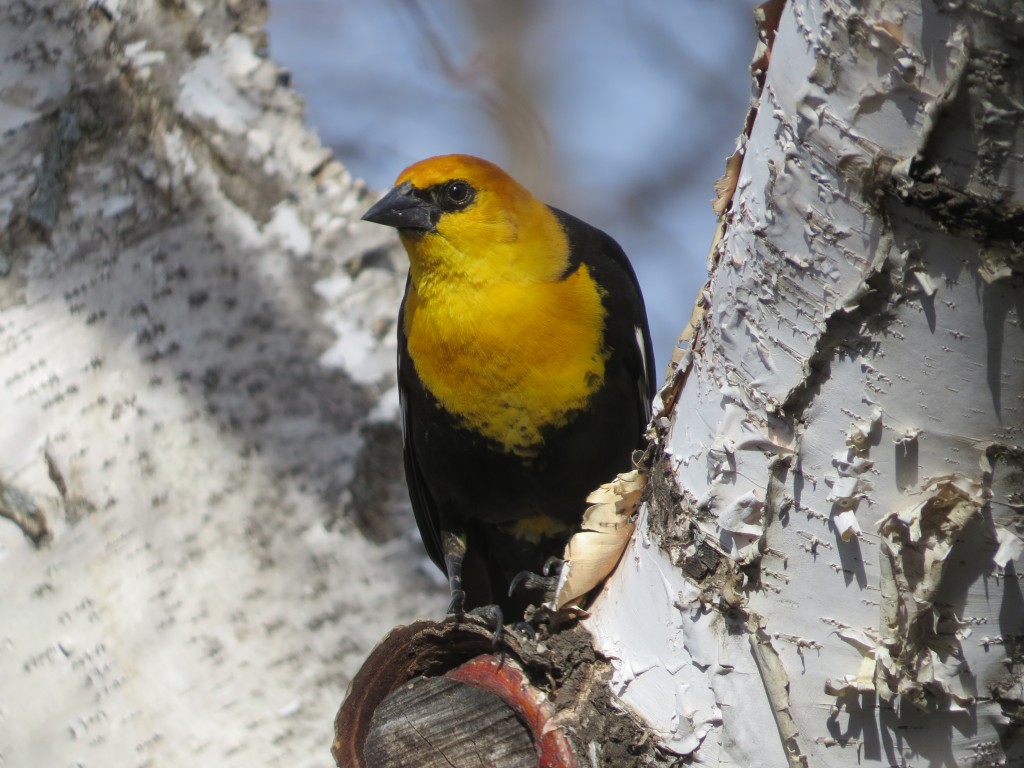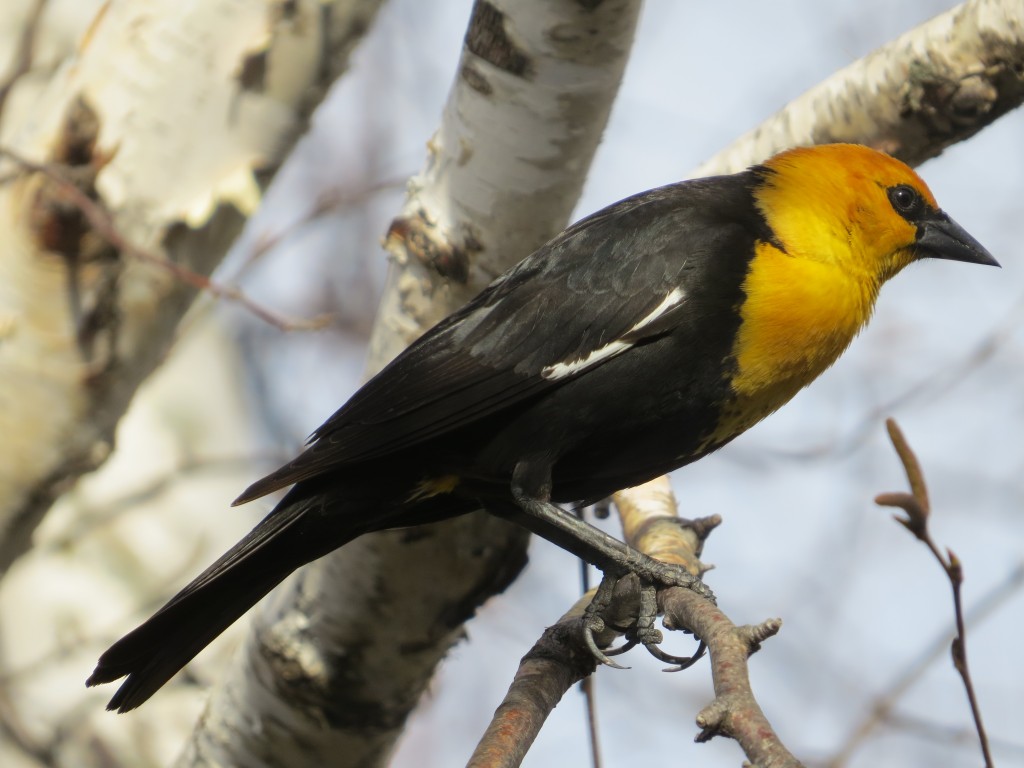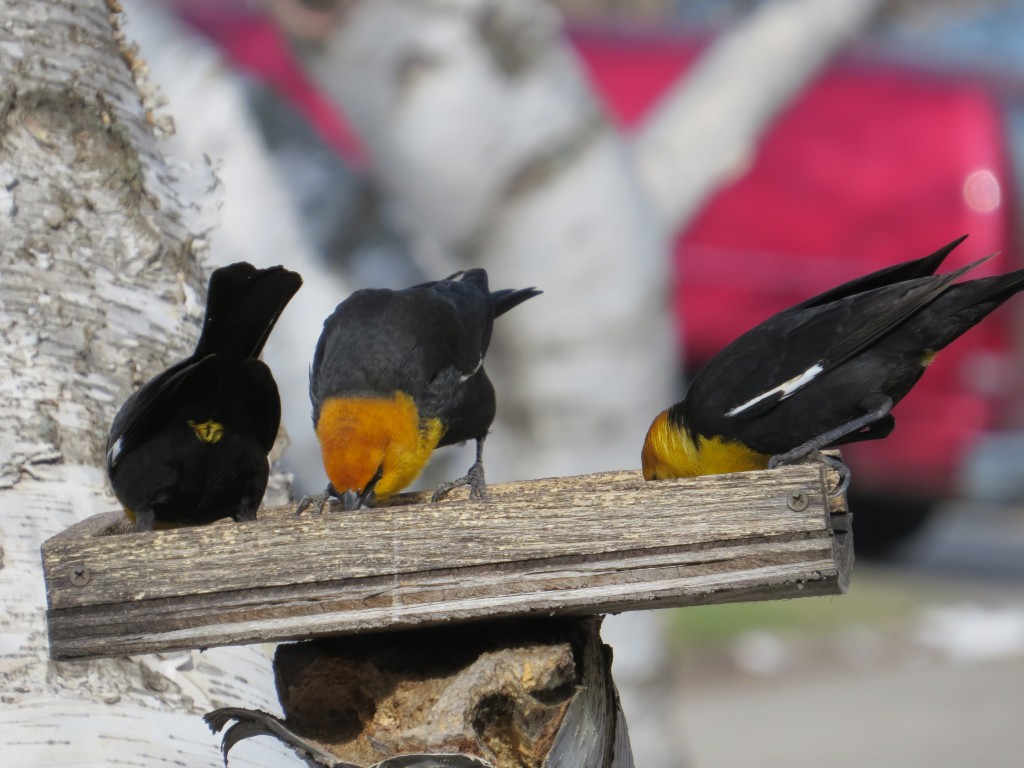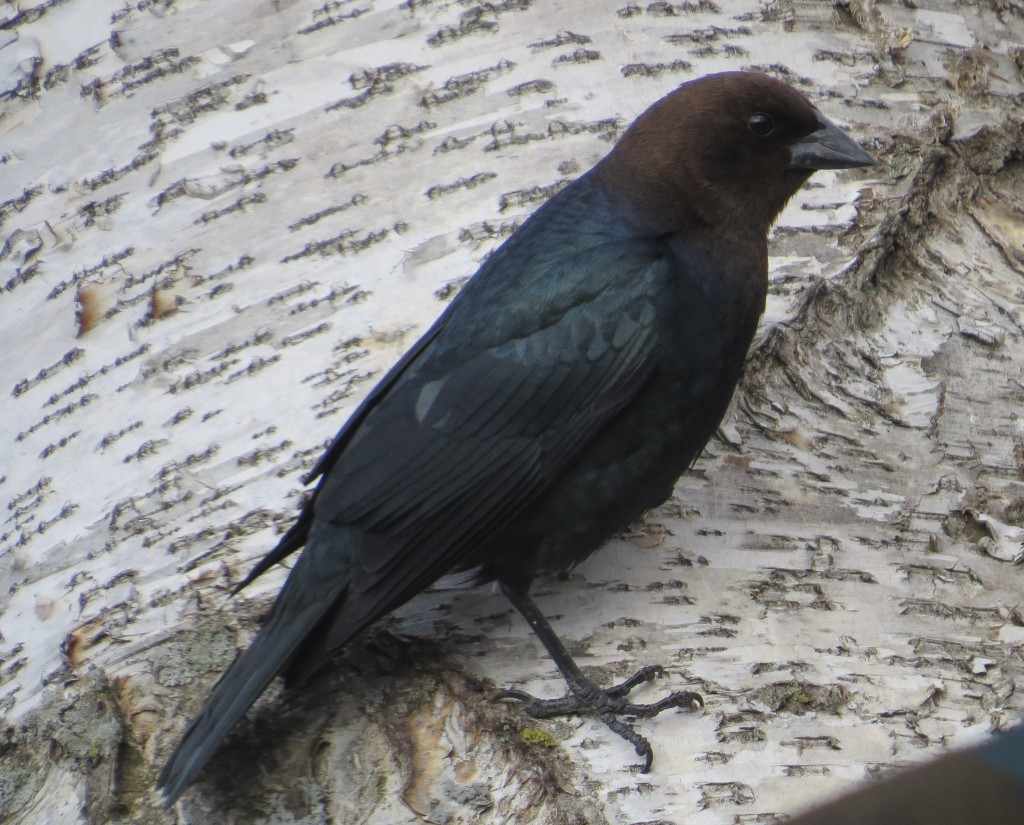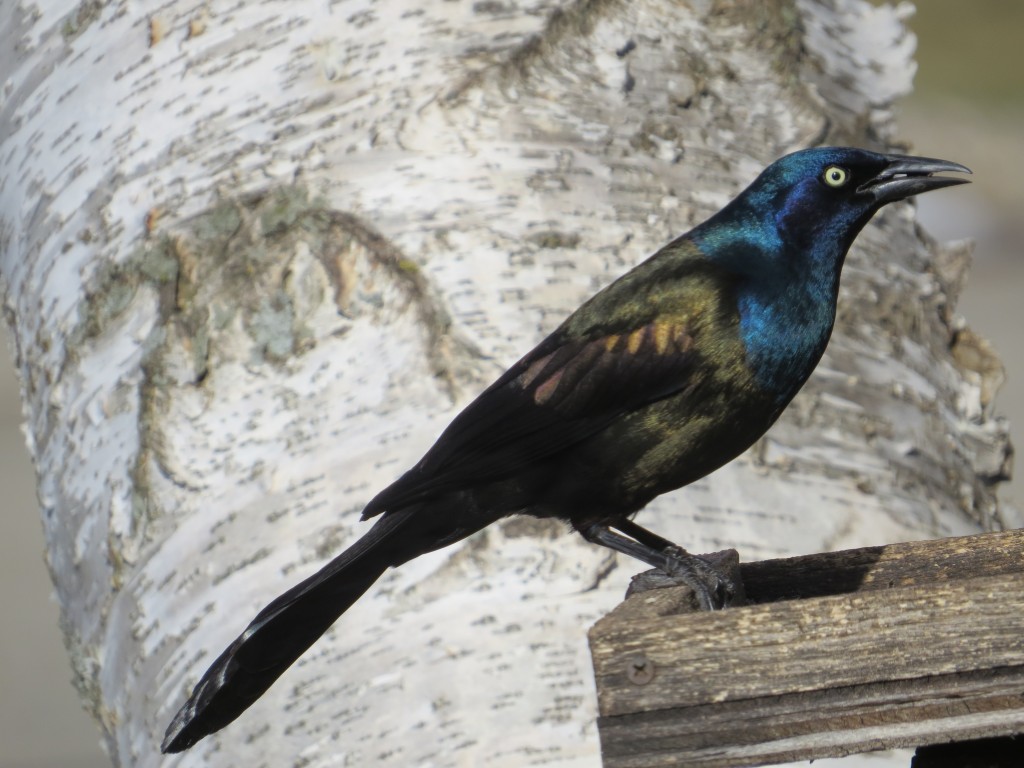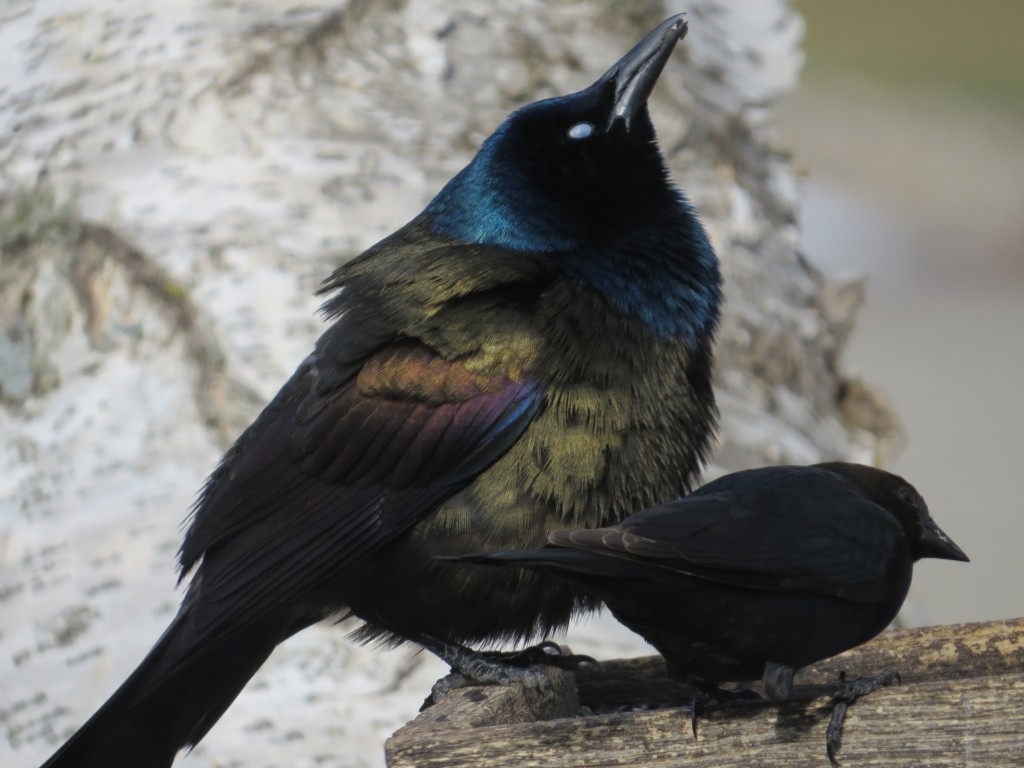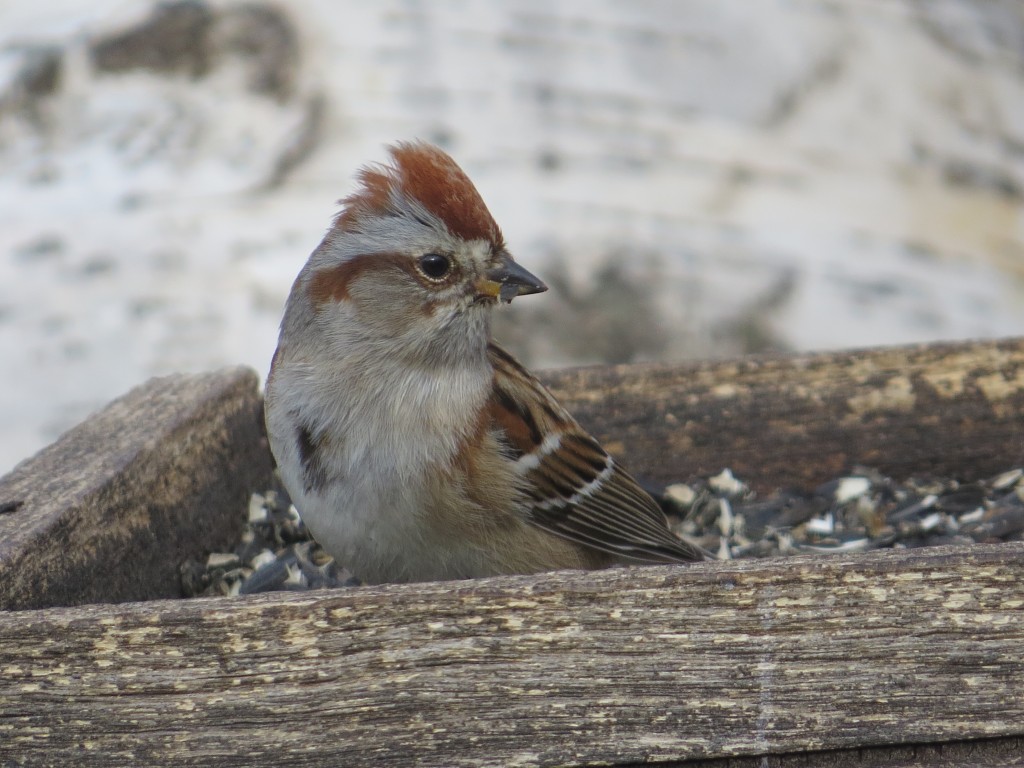There was much rejoicing in the neighborhood this weekend – I finally made it up on to the roof to take down the Christmas lights. Though I would have rather been birding on this gorgeous day, June was fast approaching and I was getting dangerously close to leaving them up and boasting about how prepared I was for next Christmas. It turns out, though, that birding from the roof was pretty good. Two male American Goldfinches in the midst of a dogfight nearly crashed into my face, and later I had a stunning bird pull a “Maverick” as it buzzed the tower at eye-level. The burnt orange and glossy black were unmistakable – no binoculars were needed to see this was an adult male Orchard Oriole! I’ve only seen a flash of one before, and we had an immature male at the feeder once last year. The kids were playing outside, so I hollered for Evan to get my camera out of the car while I kept an eye on the bird. It probably would have been faster for me to go myself, but after some communication misfires, two trips to the vehicle, losing the bird, and refinding the bird, I finally got a picture of this scarce oriole. The shot was from a long way off, and the bird was gone before I could get more.
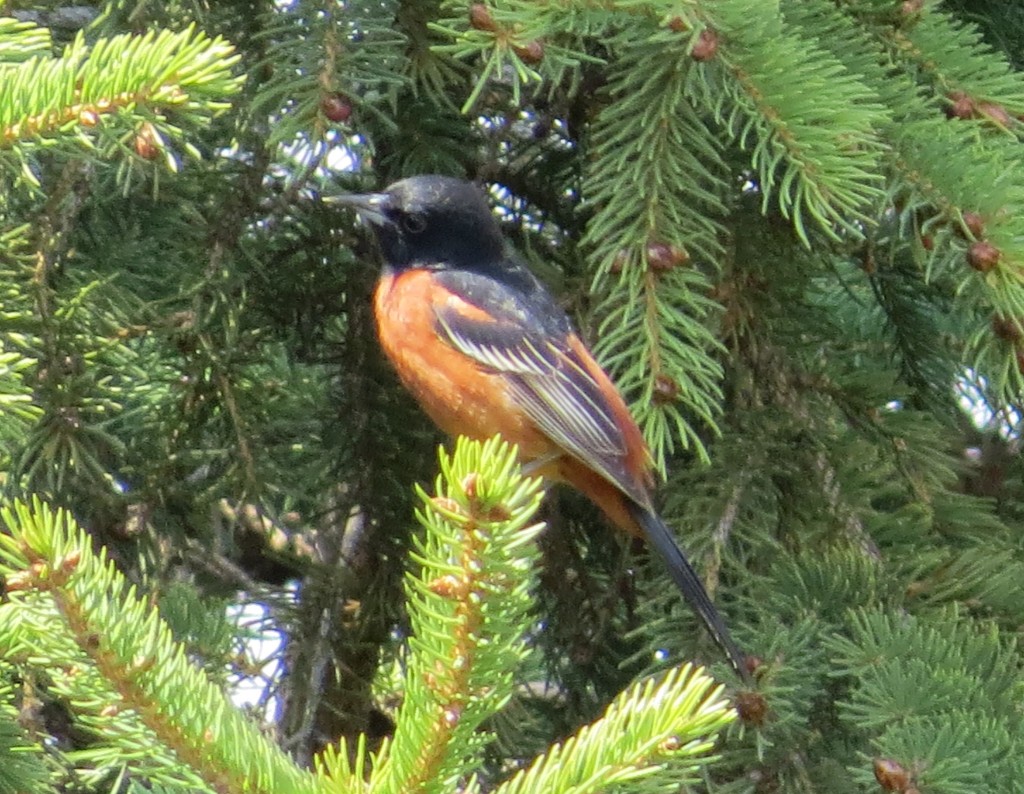
Adult male Orchard Oriole
The Orchard Oriole wasn’t the only yard-bird excitement this weekend. As Evan and I were getting ready to go on a Cub Scout camping outing, I was trying to grab a photo of a new yard bird, the Nashville Warbler. This isn’t an exciting warbler, but any bird takes on a new level of importance when it visits your yard for the first time, especially a warbler. Since we aren’t near water and don’t have many mature trees here, we rarely get warblers in the yard.
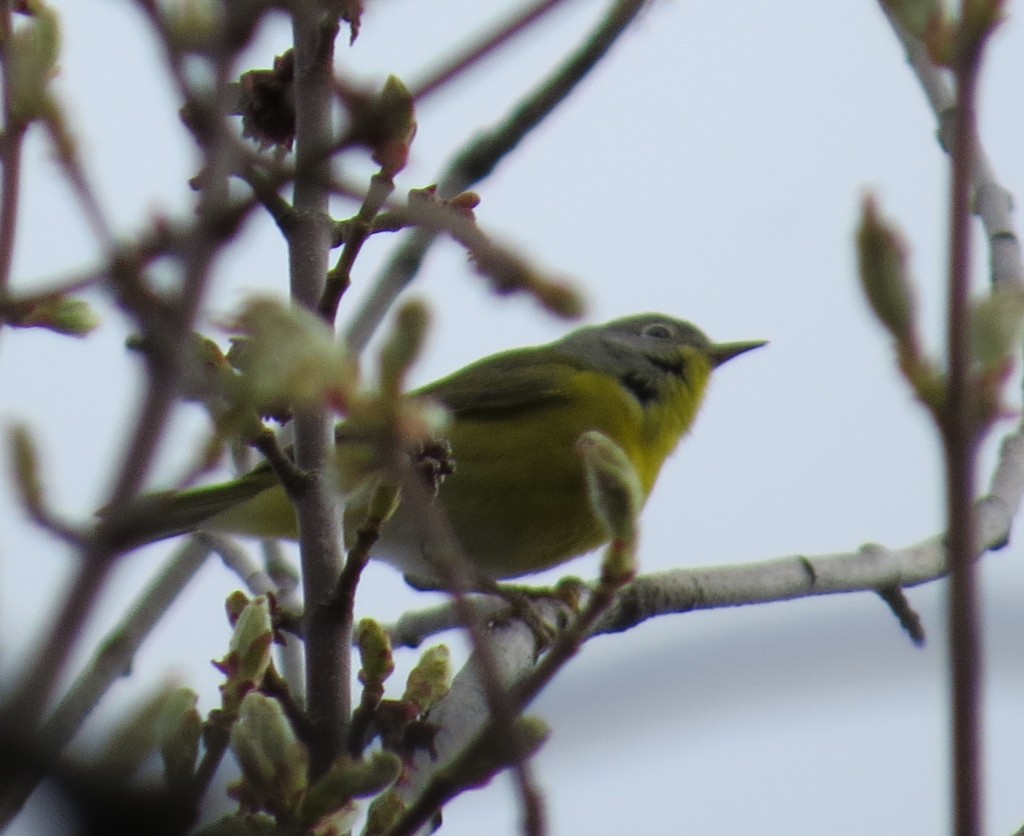
Nashville Warbler
As I was maneuvering to photograph this warbler and holding up the camping weekend, another new yard-bird warbler popped in front of my face, the Black-and-White Warbler!
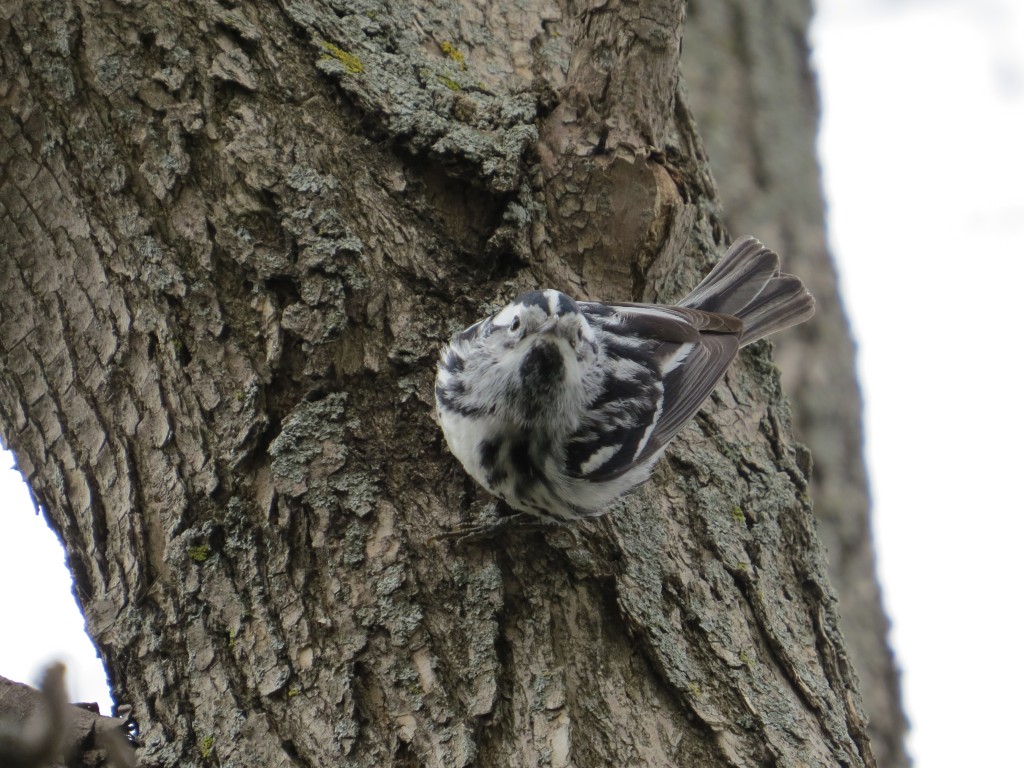
Black-and-White Warbler
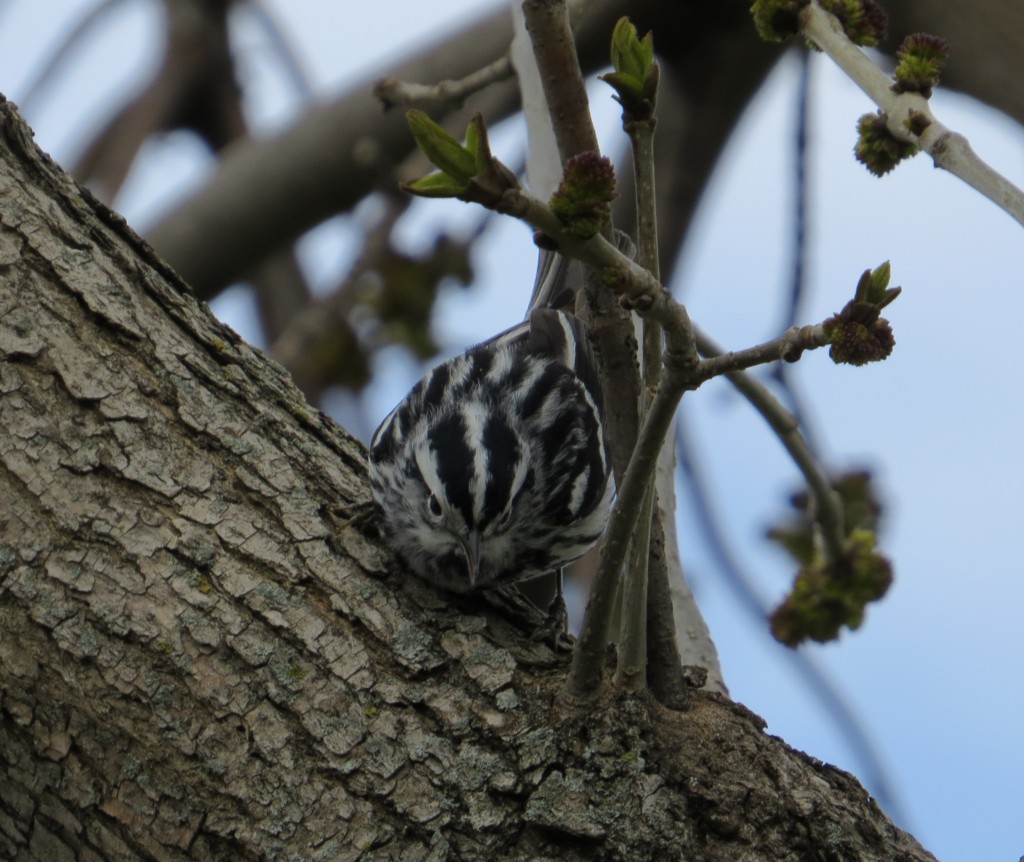 And then I noticed a third warbler, the Yellow-rumped! Though none of these warblers were terribly exciting, it was a thrill to have them invade our very own trees. I wondered what else was with this mini warbler wave, but we had to get to scout camp.
And then I noticed a third warbler, the Yellow-rumped! Though none of these warblers were terribly exciting, it was a thrill to have them invade our very own trees. I wondered what else was with this mini warbler wave, but we had to get to scout camp.
Scout camp was a lot of fun made even more so because Evan and I opted to spend the night back at home instead of huddling in a tent for an overnight low of 37°. We participated in the activities Friday evening, went home, and then drove back for the activities Saturday morning. I should point out that we also never missed a meal with the scouts. Priorities.
The location of camp was on 600 acres of beatifully wooded private land complete with two private lakes. There were birds galore. One of the predominant species was the Wood Duck. I visited with one of the other scout dads who helps maintain the Wood Duck boxes on the property, and he told me there were about 100 boxes and that 85% of them were occupied this spring!
I didn’t photograph any of the Woodies, though, and instead picked out a couple species that have evaded my photography efforts, like the ground-skulking Palm Warbler.
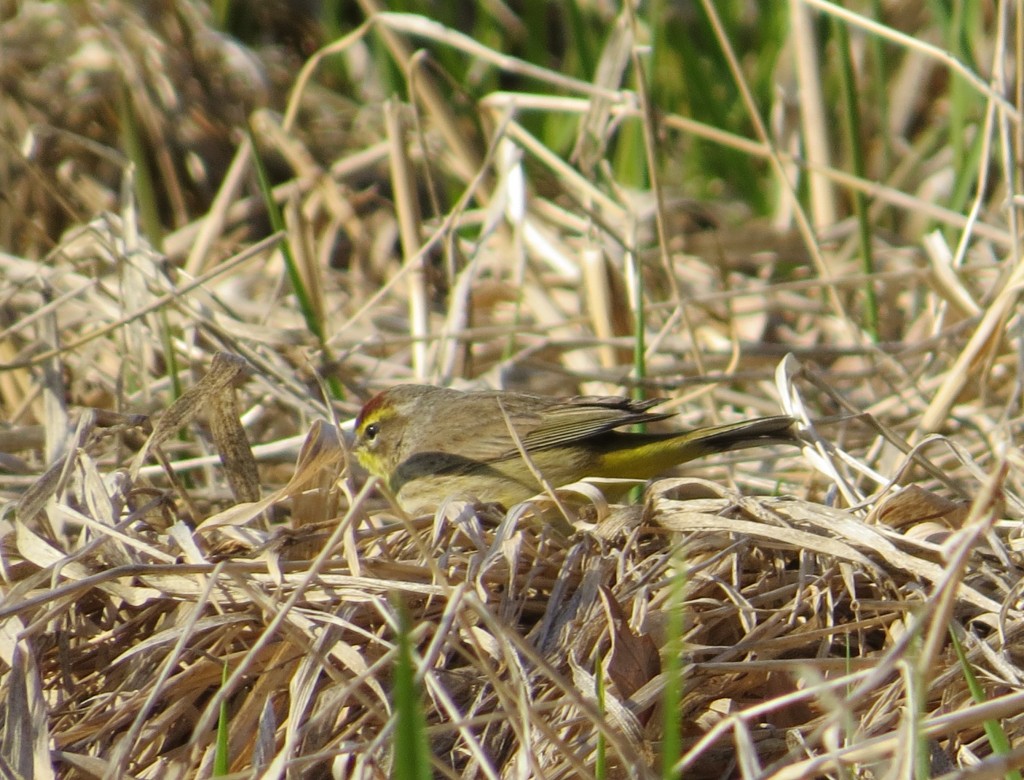
Palm Warbler
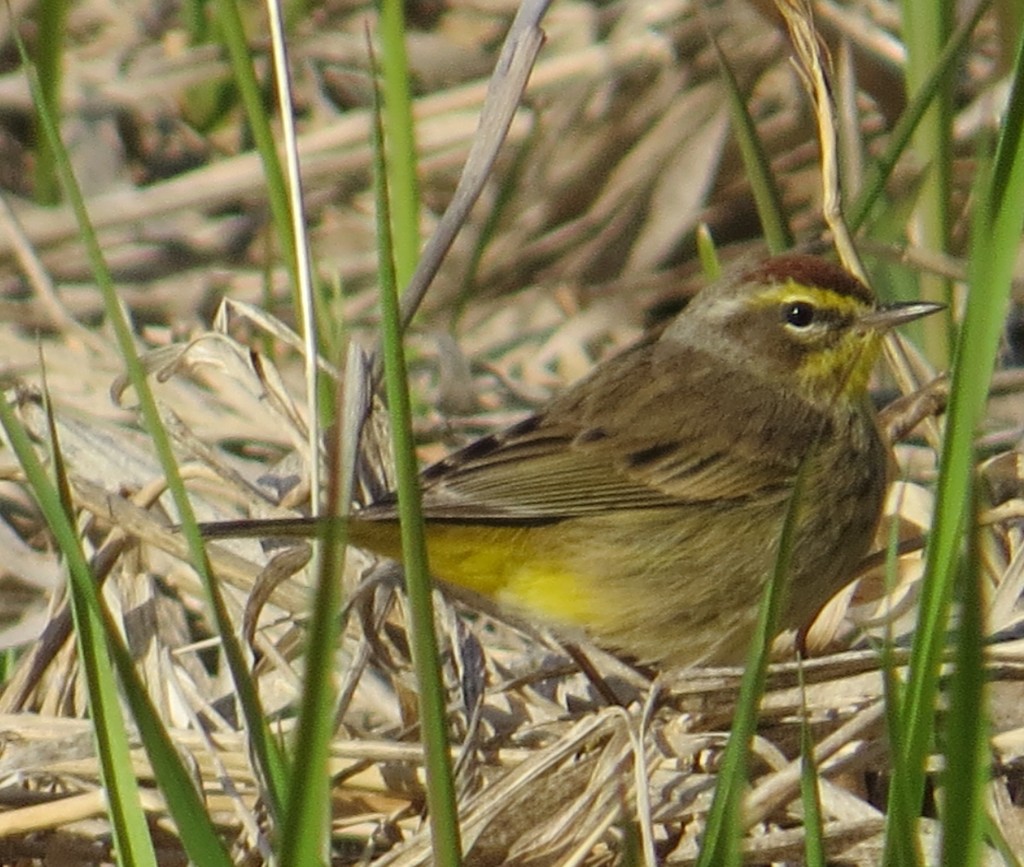
Warblers are tough to photograph, and I’m deciding that ground-skulking warblers may pose just as much of a challenge as the ones that flit about the treetops. It’s a good thing there are birds that pose, like this Veery.
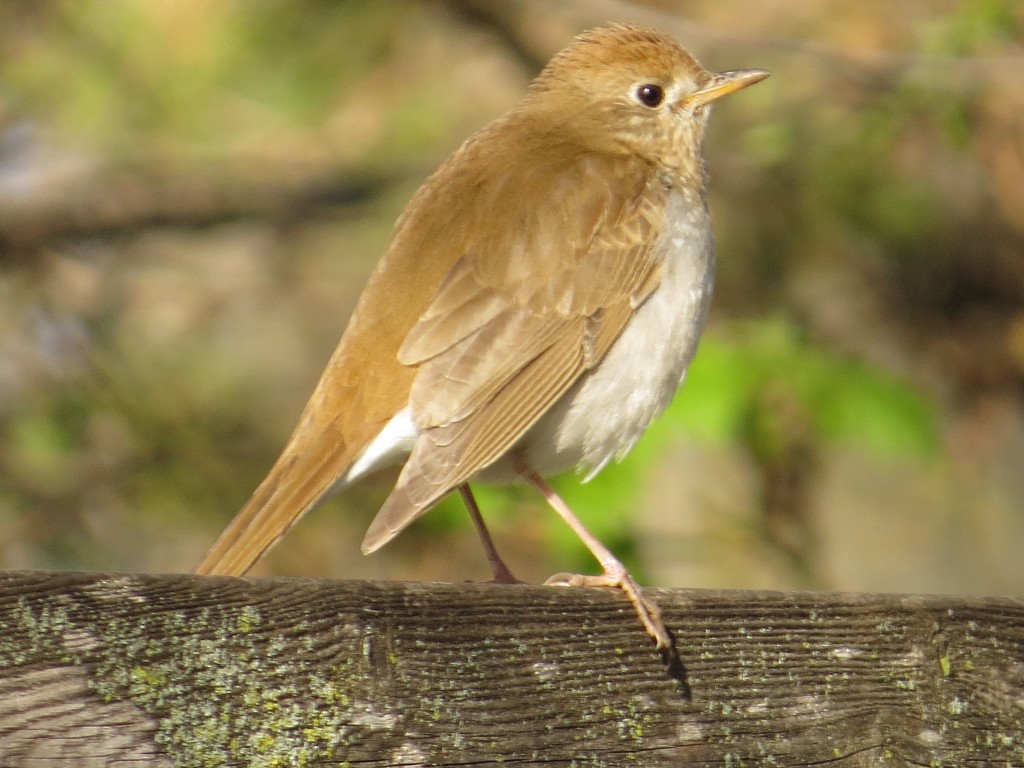
Veery
While I practiced bird photography, Evan was working on much more manly skills.
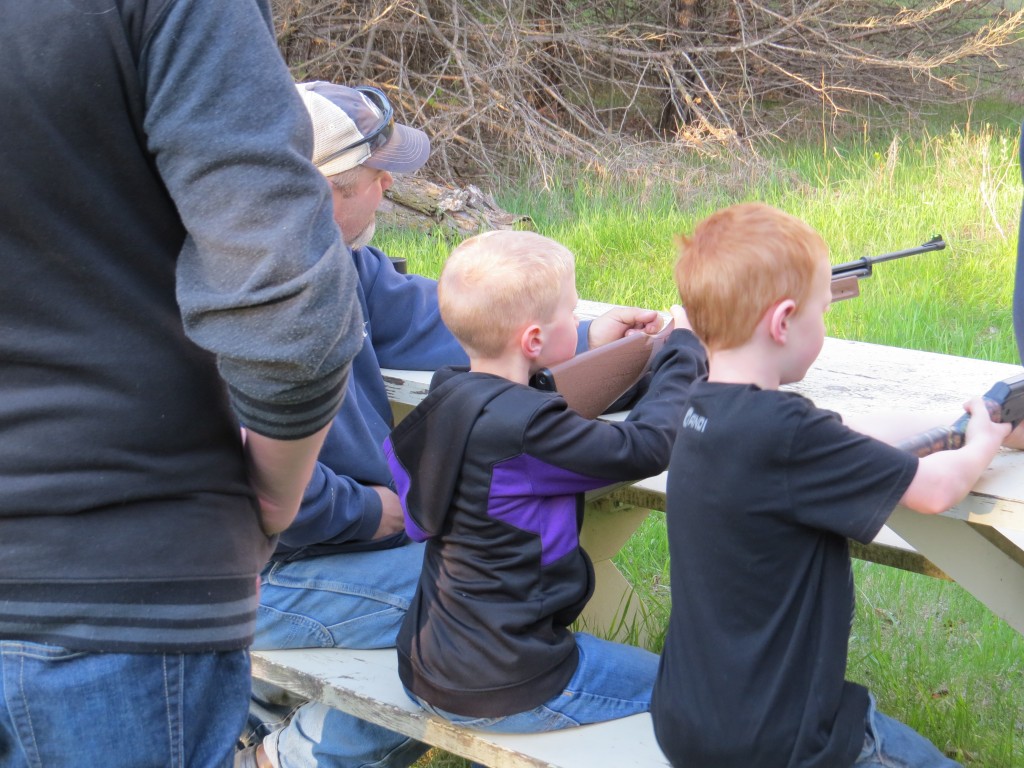
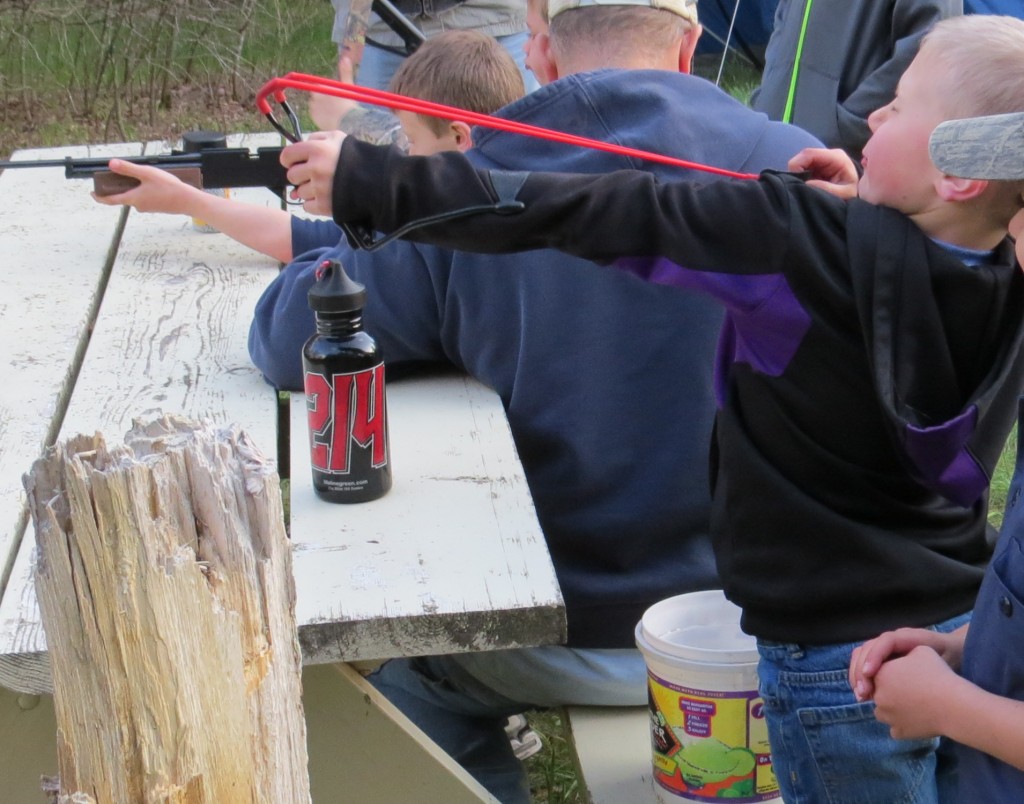
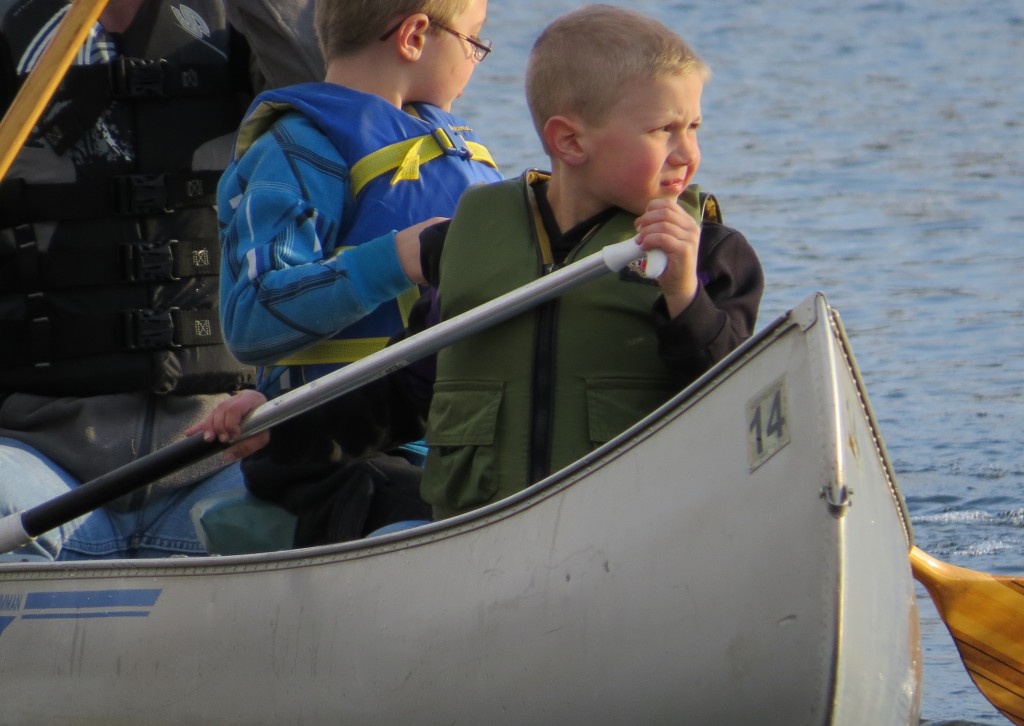
Though I took the picture above, I had taken Evan out earlier for a canoe ride. We were both thrilled to have four species of swallows buzzing right by our heads as they fed above the surface of the water. It got me thinking that I should dig out my canoe from behind the shed and do some birding with it. It’s a totally new perspective.
On Saturday at scout camp we headed to Sibley State Park for some geocaching. It was a mediocre experience considering we were in a group of about 12 people, over half of which were not scouts. I did get my Gray-cheeked Thrush lifer, but out of hesitation that I might actually be seeing a Swainson’s Thrush and that I was the only binocular-toting bird-nerd in the crowd, I opted not to draw more attention to myself by photographing the bird or pointing it out to Evan. I later regretted both decisions.
The “cache” that we located was quite appropriate – a bird card with the Yellow-throated Warbler. The very first pair of nesting Yellow-throated Warblers in Minnesota occurred at our very own Sibley State Park and were discovered by our friend, Randy.
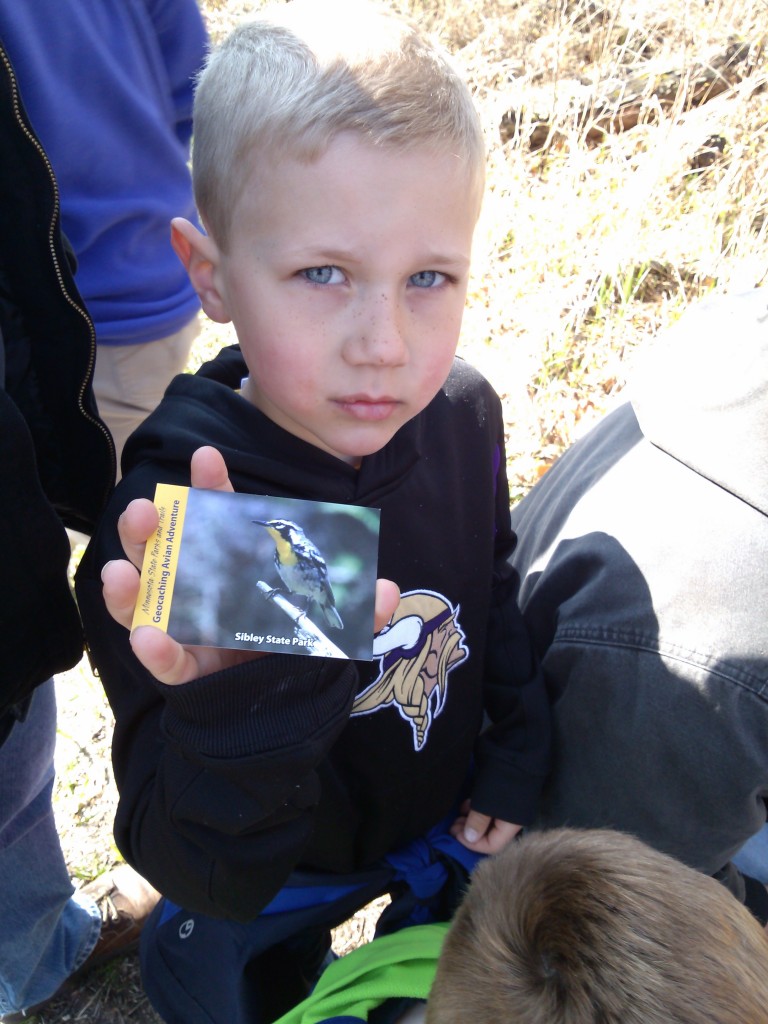
We saw some good birds at Sibley – Brown Thrasher, Yellow Warblers, Blackpoll Warbler, Golden-winged Warbler, Yellow-bellied Sapsucker, and quite possibly a Red-shouldered Hawk.
After scout weekend, Evan and I did our daily check of Bergquist Wildlife Area – a spot that can be walked in ten minutes if there are no birds. This time of year, with the birds changing daily, it takes a good hour to explore.
This particular day, Blackpoll Warblers seemed to be stealing the show.
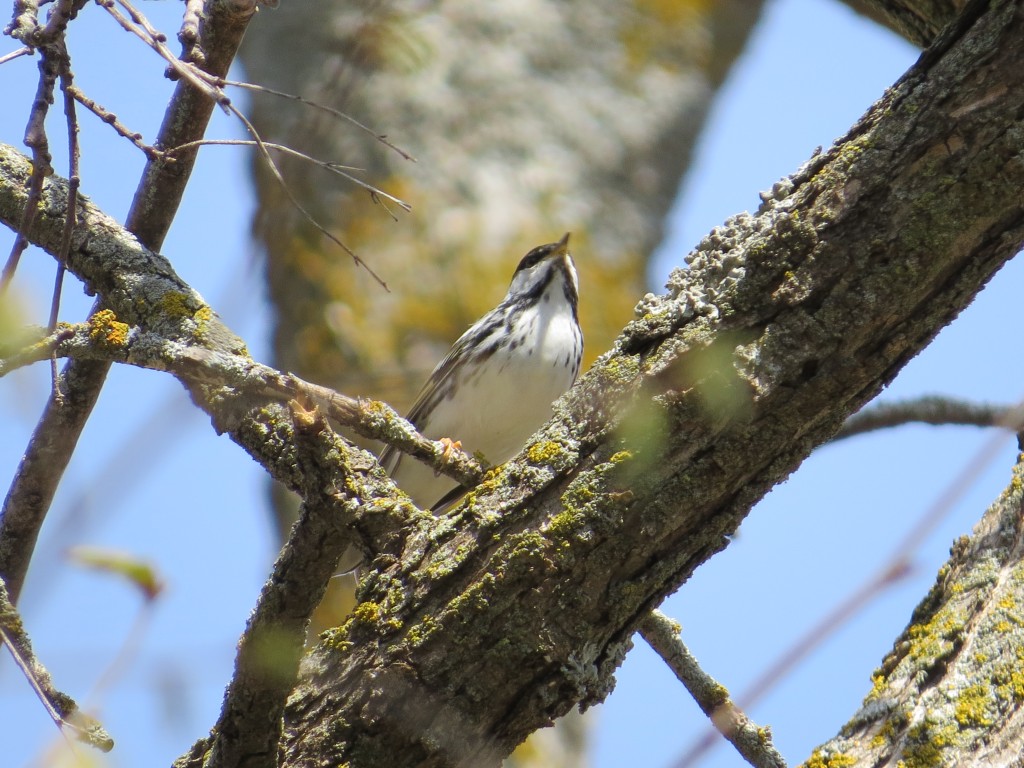
Blackpoll Warbler
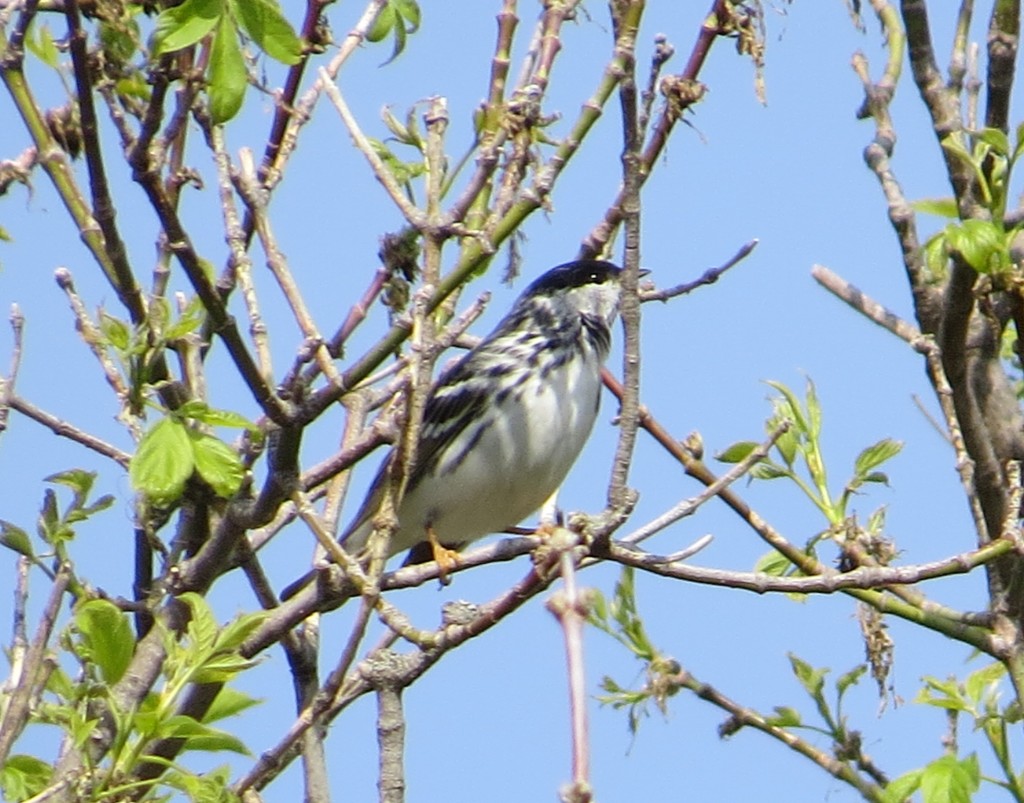
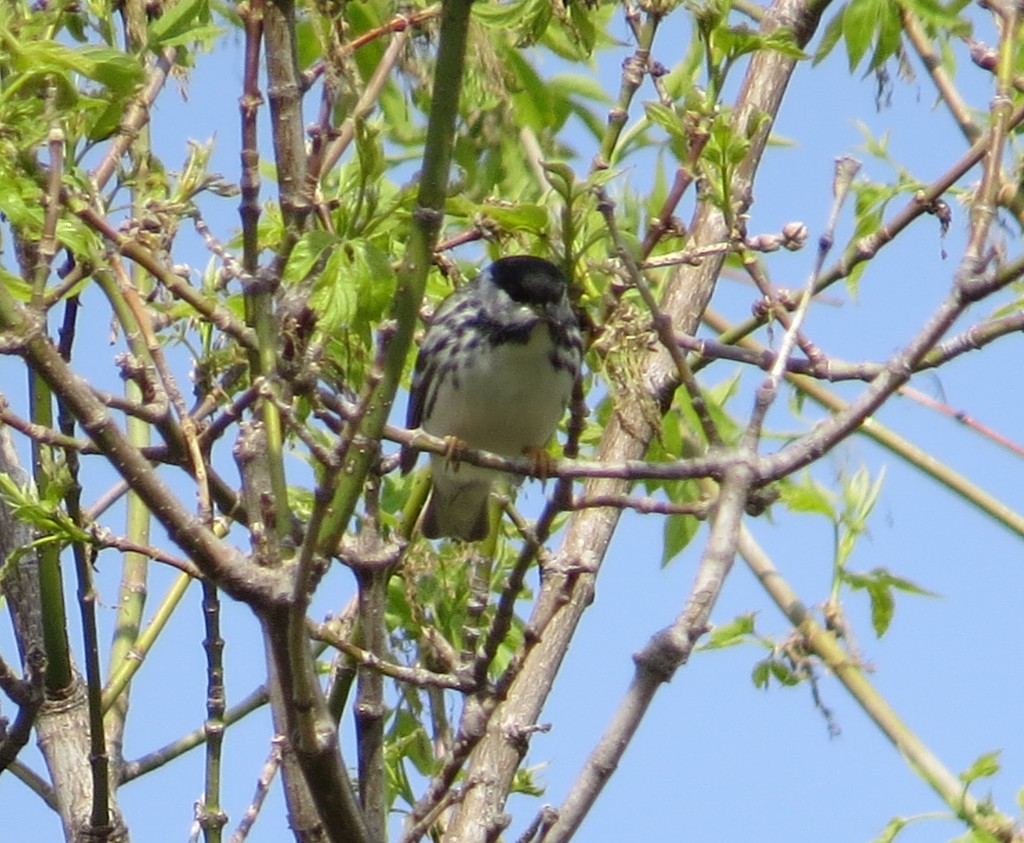
While I strained my neck looking at warblers in the treetops, Evan was again working on his warrior skills.
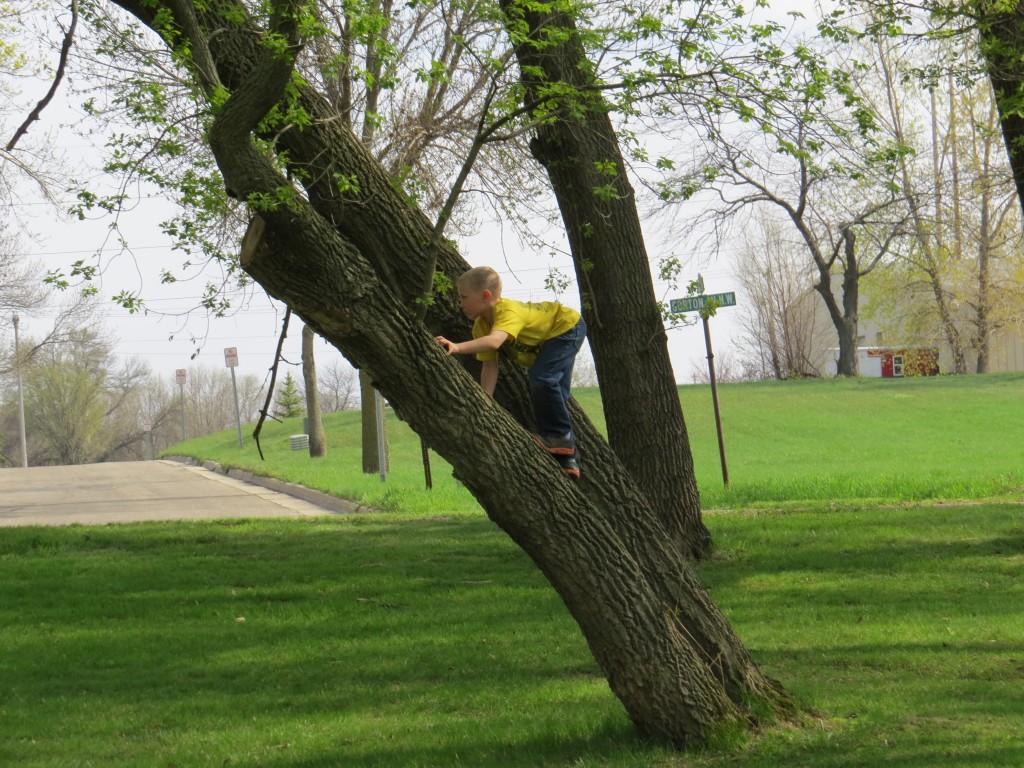
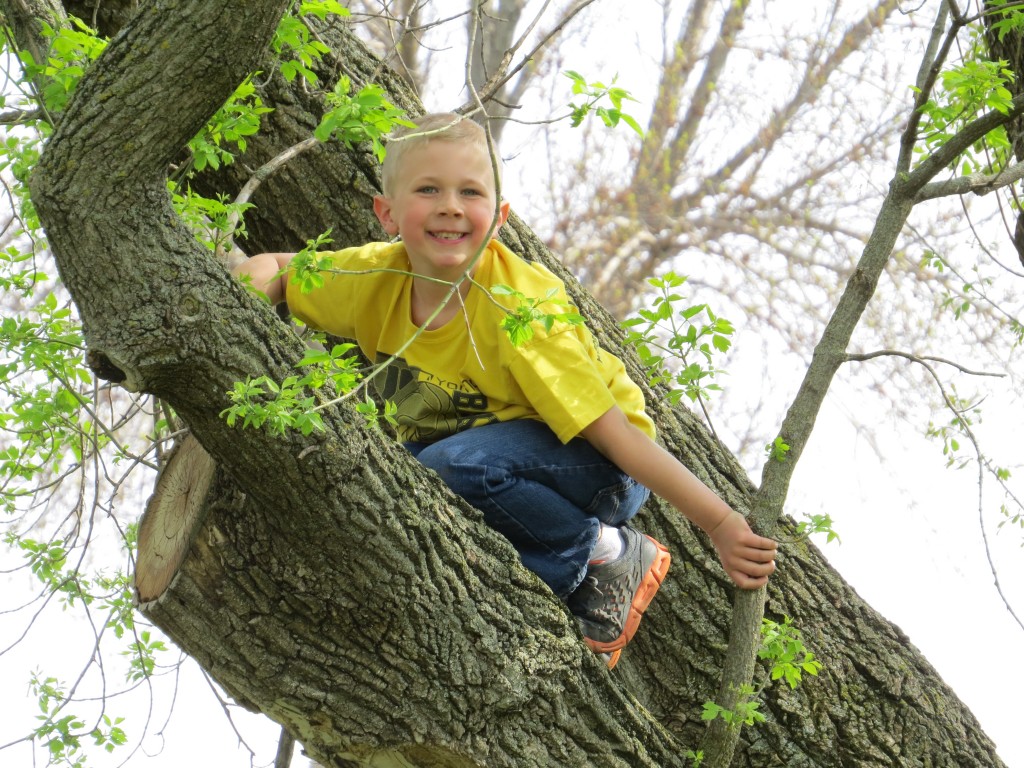
I was smiling like that too when I found one of my favorite warblers of all time – the Blackburnian Warbler who was more than willing to show off his flashy orange throat.
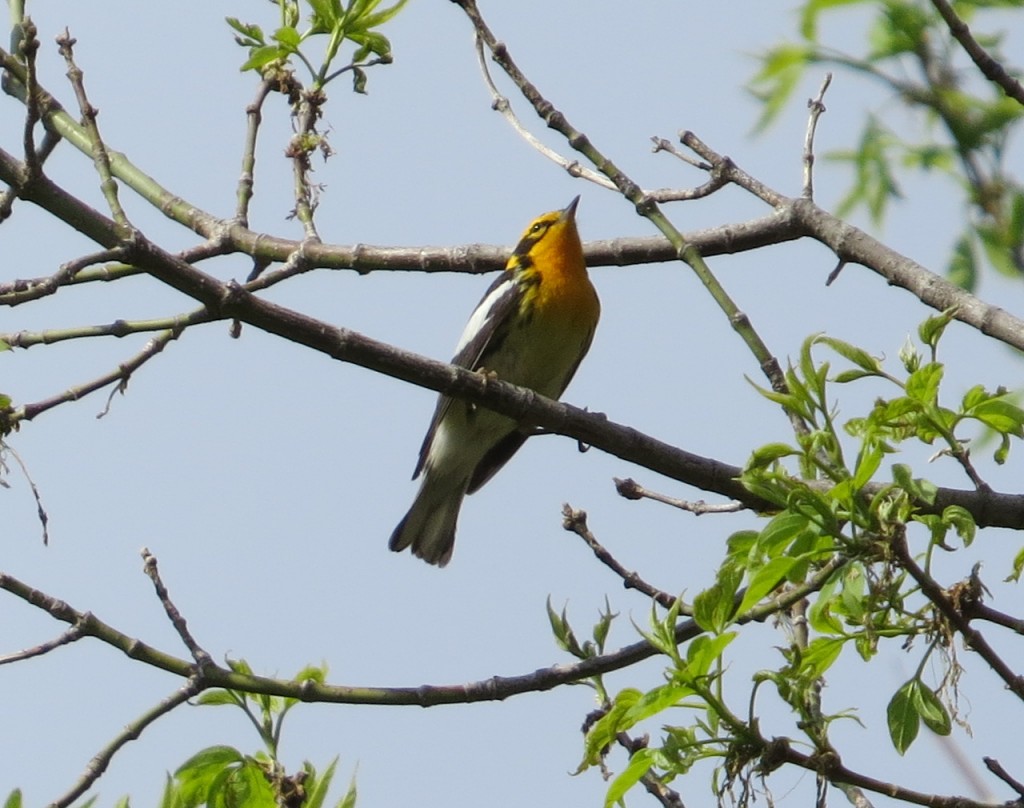
Blackburnian Warbler
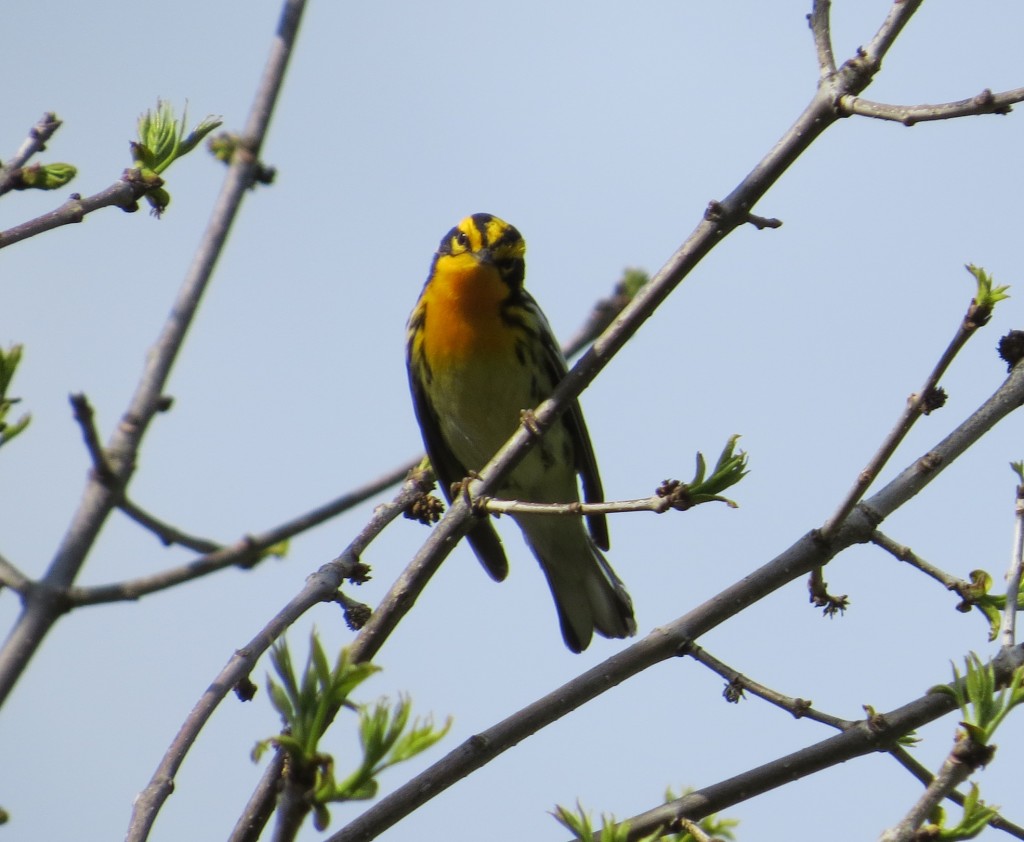 I wanted to keep photographing this bird, but it gave me the slip while I was checking on Hercules.
I wanted to keep photographing this bird, but it gave me the slip while I was checking on Hercules.
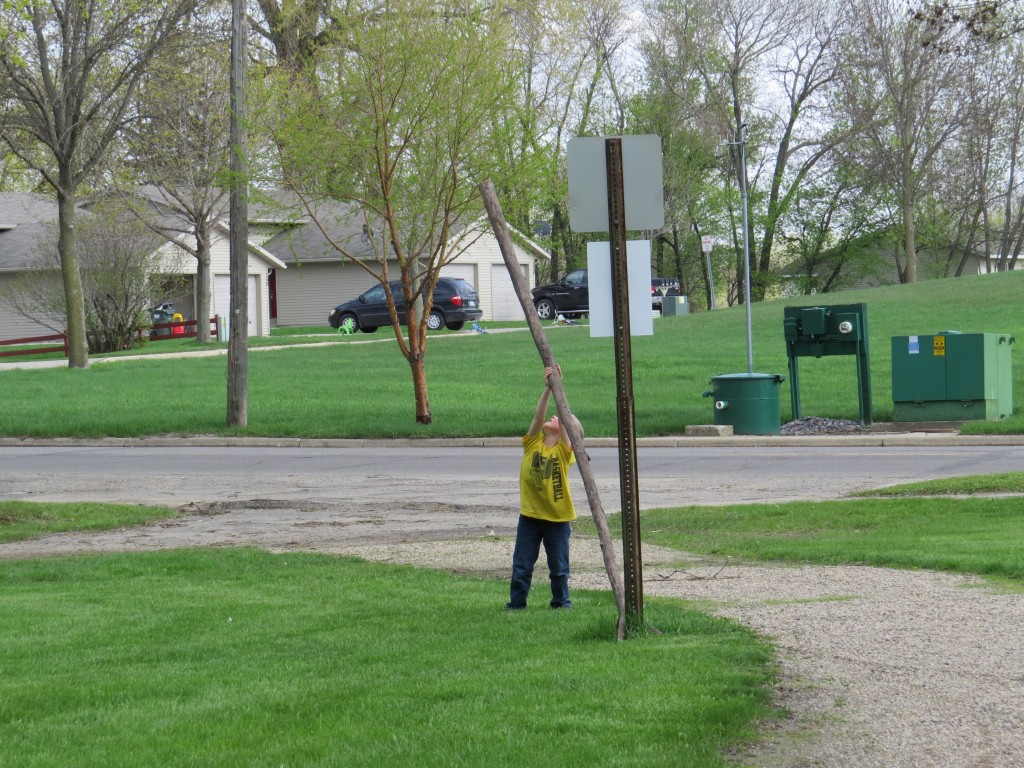 Though not as much fun as playing with dead wood, I photographed a couple of the more common warblers.
Though not as much fun as playing with dead wood, I photographed a couple of the more common warblers.
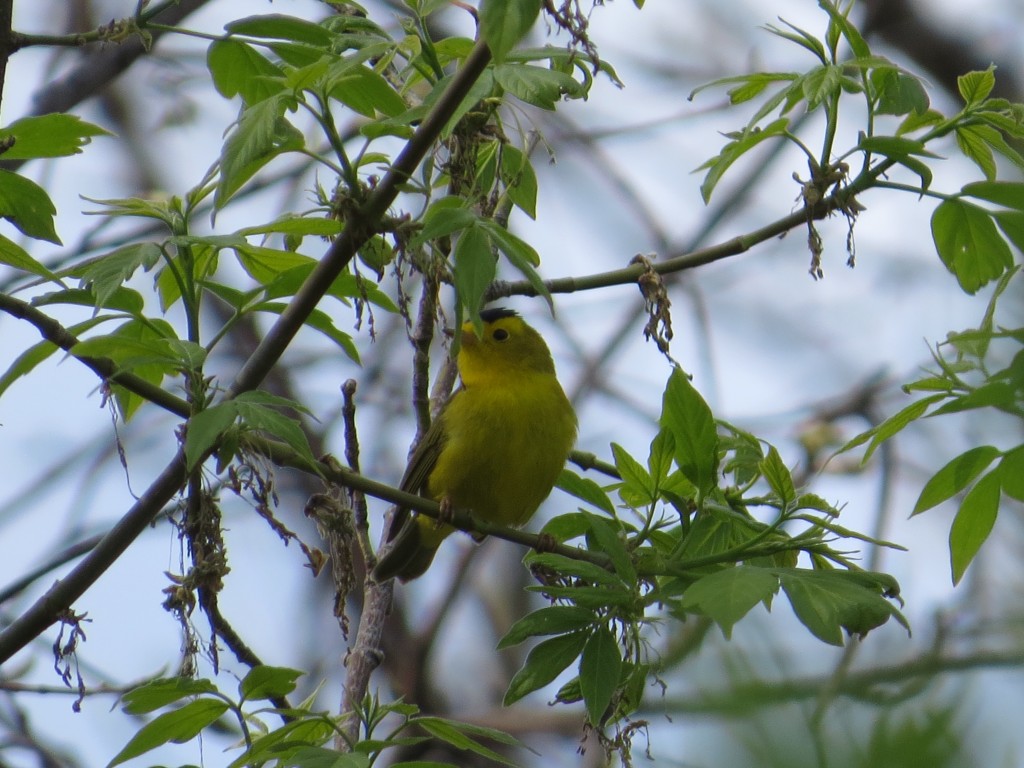
Wilson’s Warbler
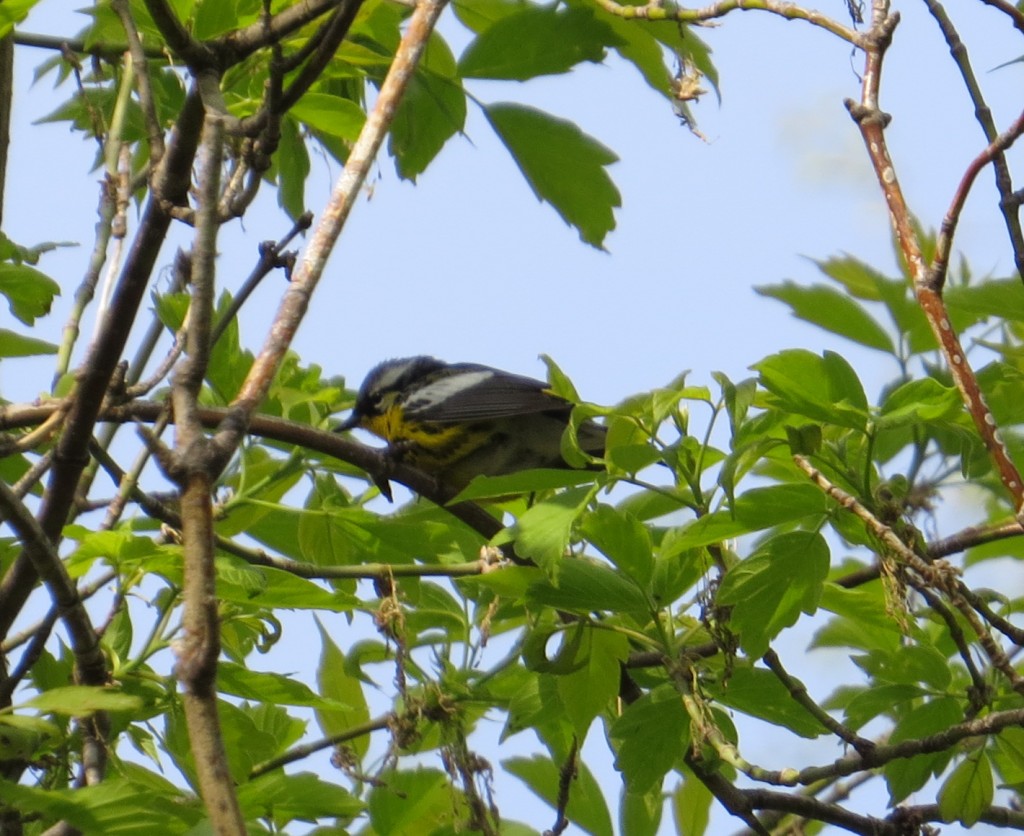
Magnolia Warbler
I was delighted to see that the Cape May pair is still hanging around in the same tree. It is getting very interesting that they are still here after two weeks and that there is a pair. We are way south of their breeding range.
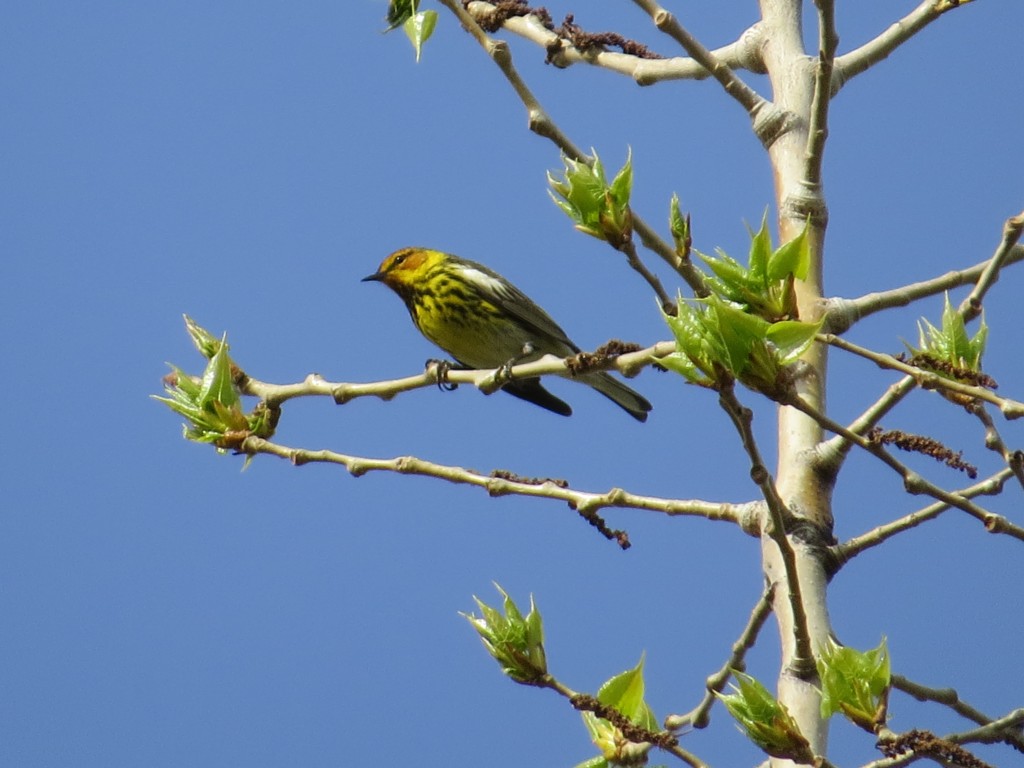
Cape May Warbler at Bergquist Wildlife Area
I’m still hoping to find a few last warblers at Bergquist before migration wraps up. They include Black-throated Green, Bay-breasted, Mourning, and Canada. Strangely we haven’t seen the ever-abundant Tennessee Warbler yet this year. I was finally able to catch up with a Northern Parula the other day. They are always a treat to see even if they aren’t very photogenic.
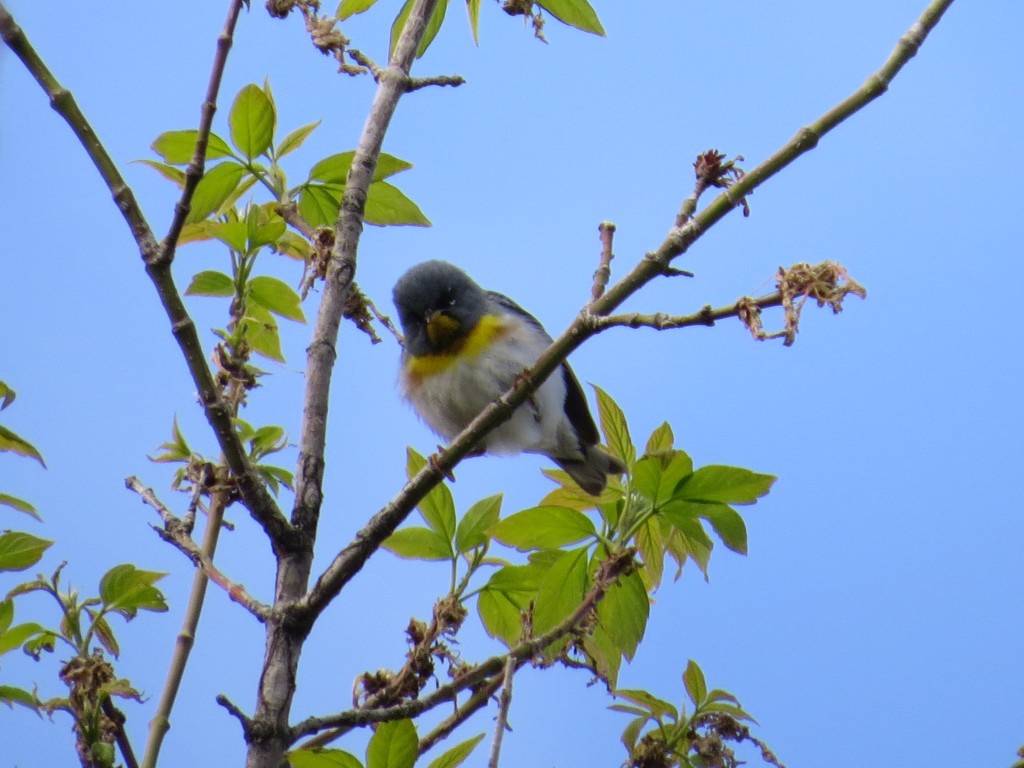
Northern Parula
We shall continue the hunt for more migrants for the next couple weeks. Then we will be putting Evan’s skills to the test as we go out camping this summer and hunting for warblers on territory. Stay tuned.

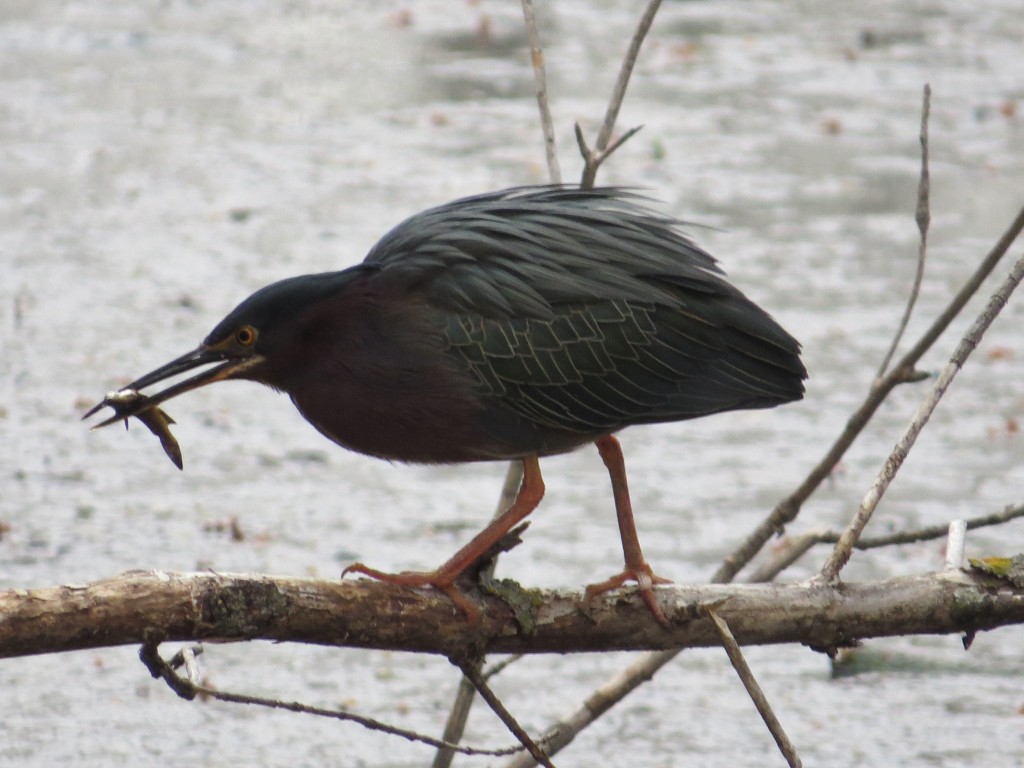
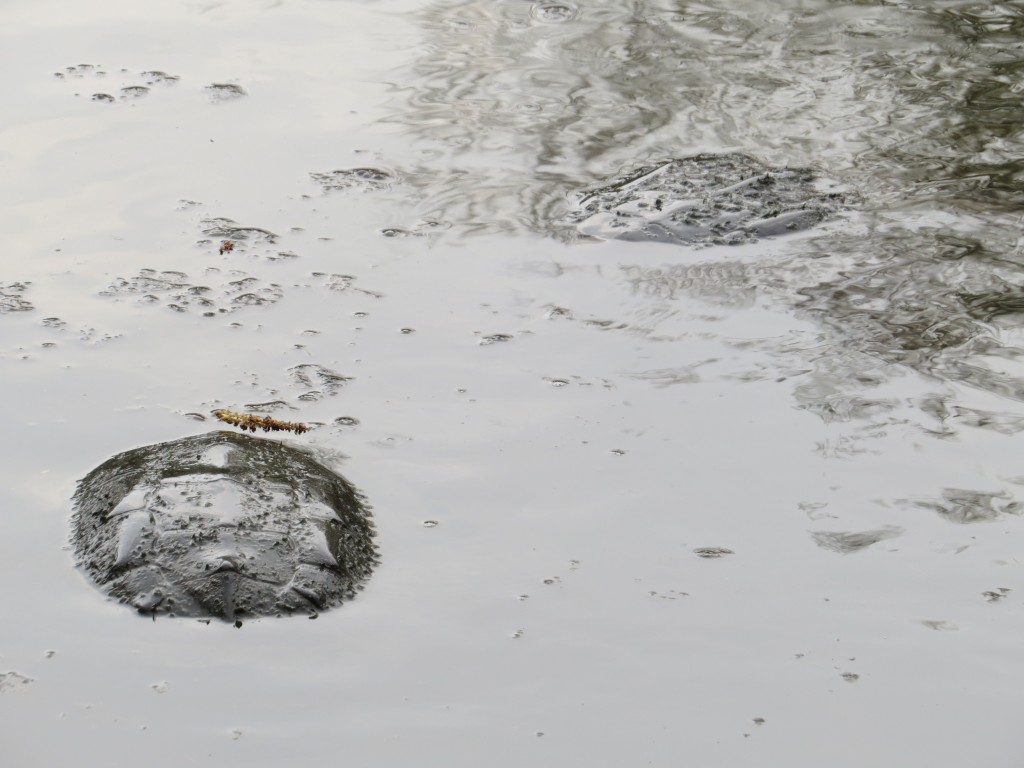
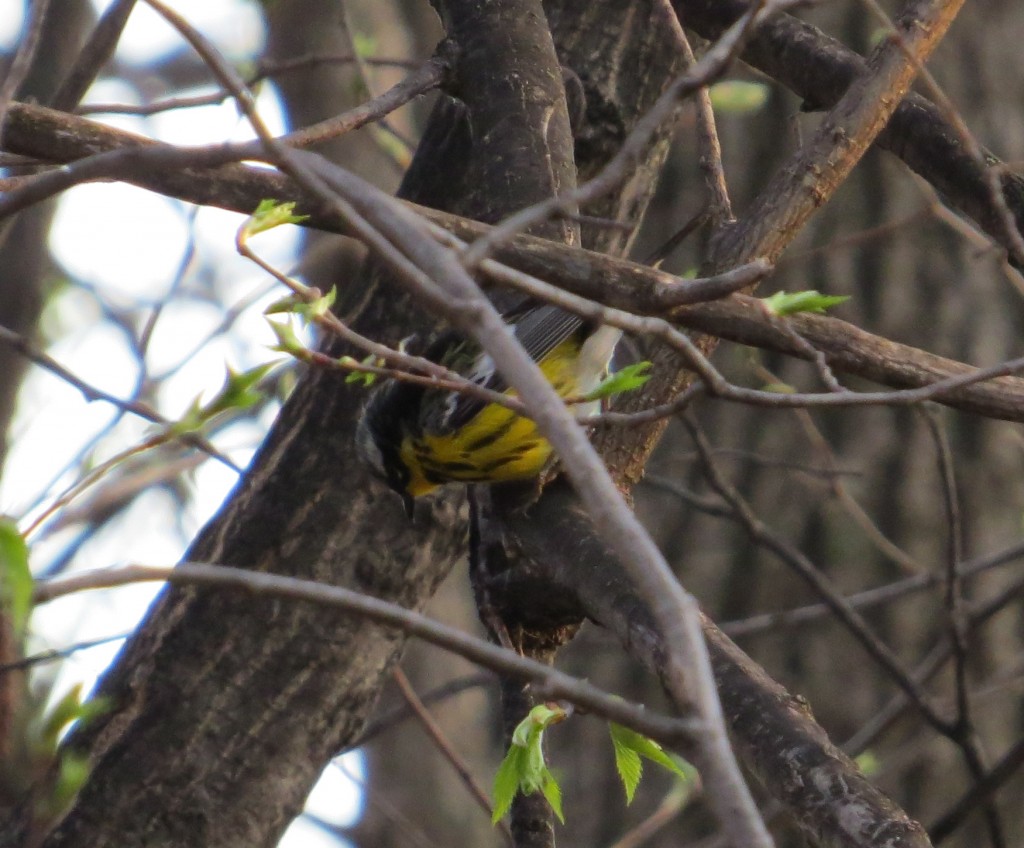
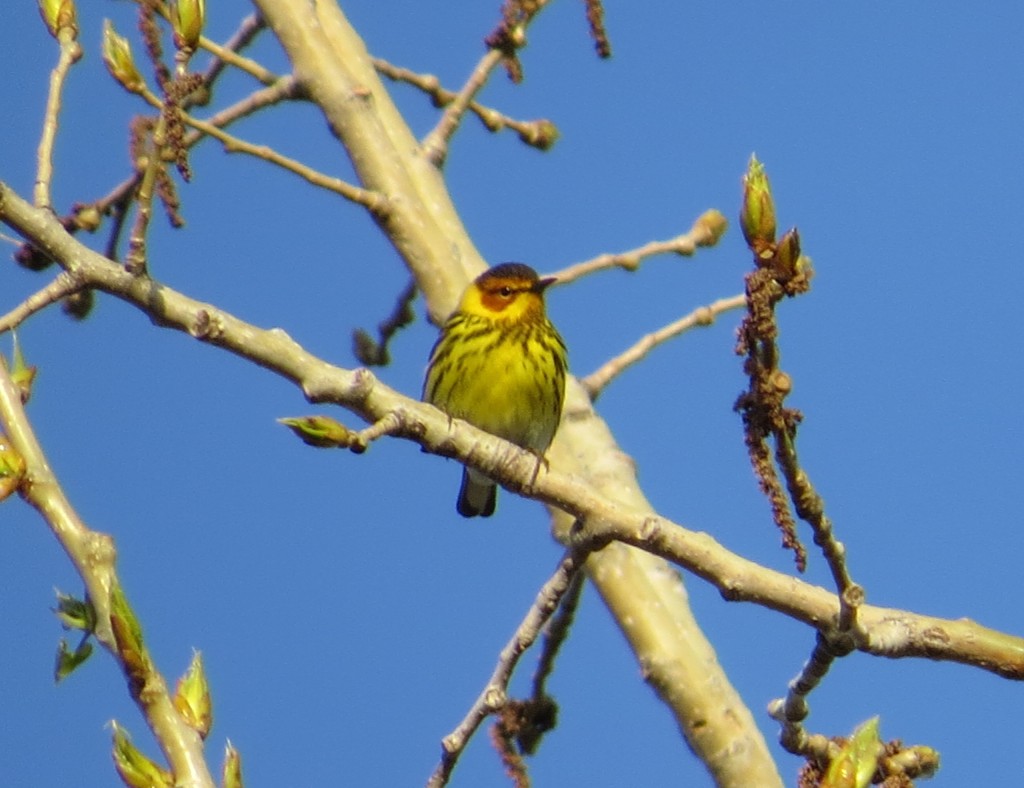
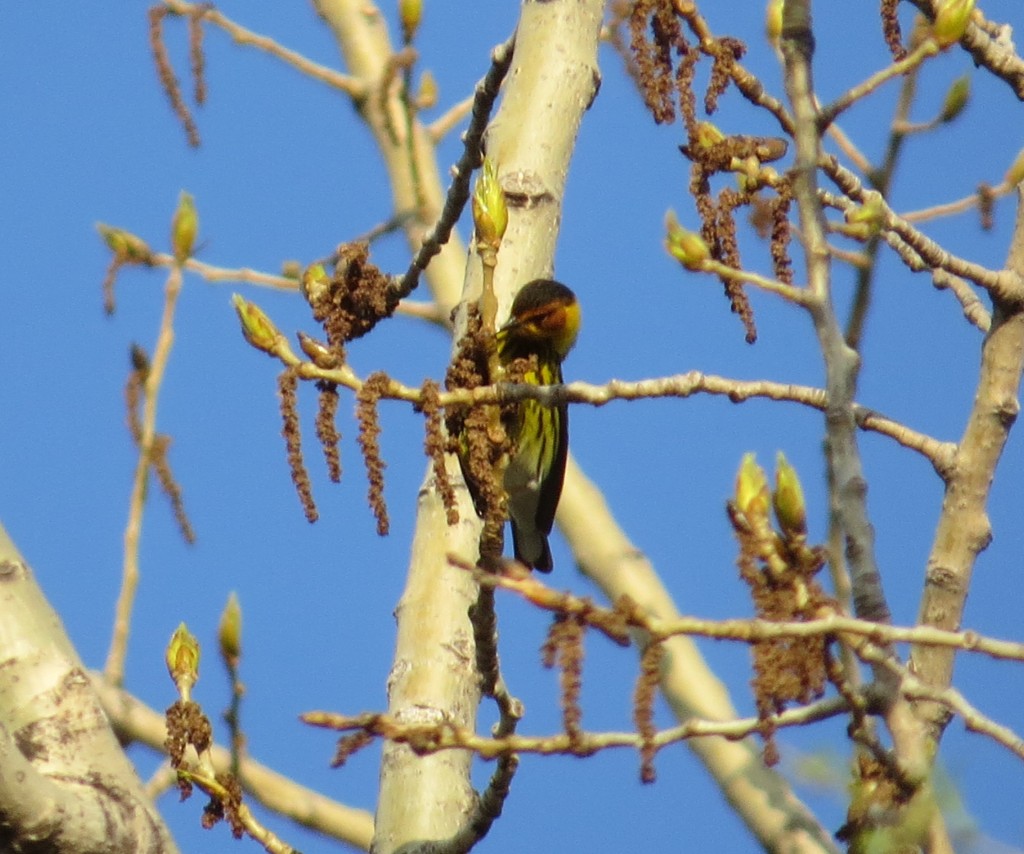
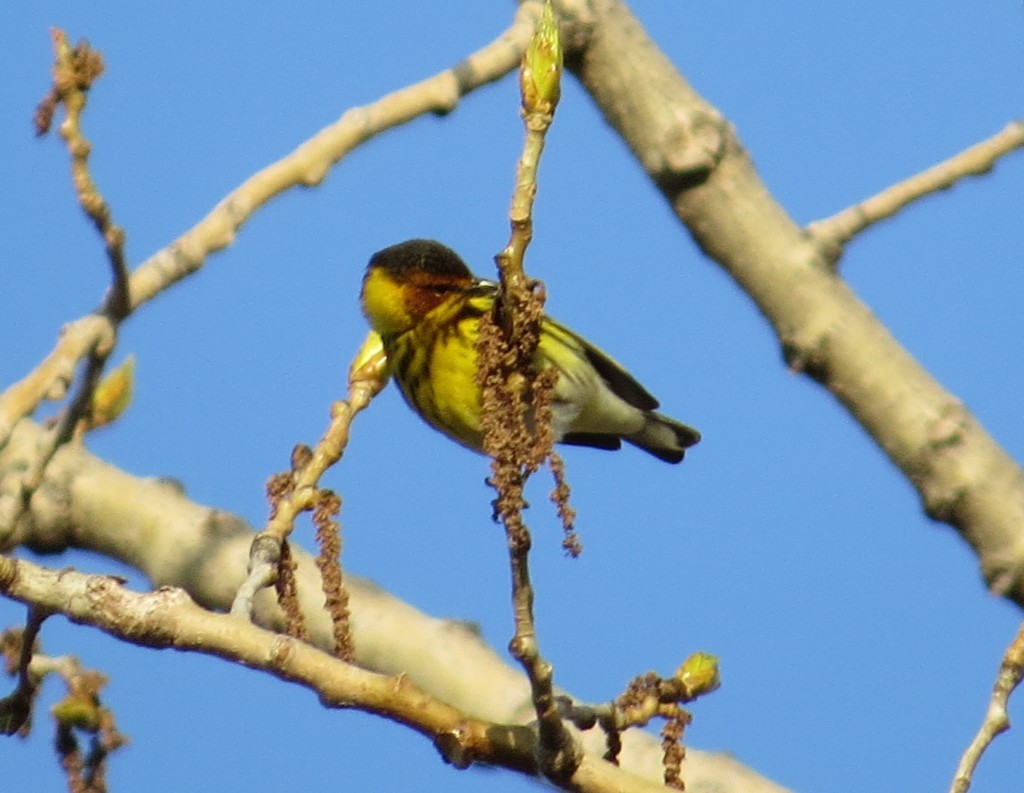
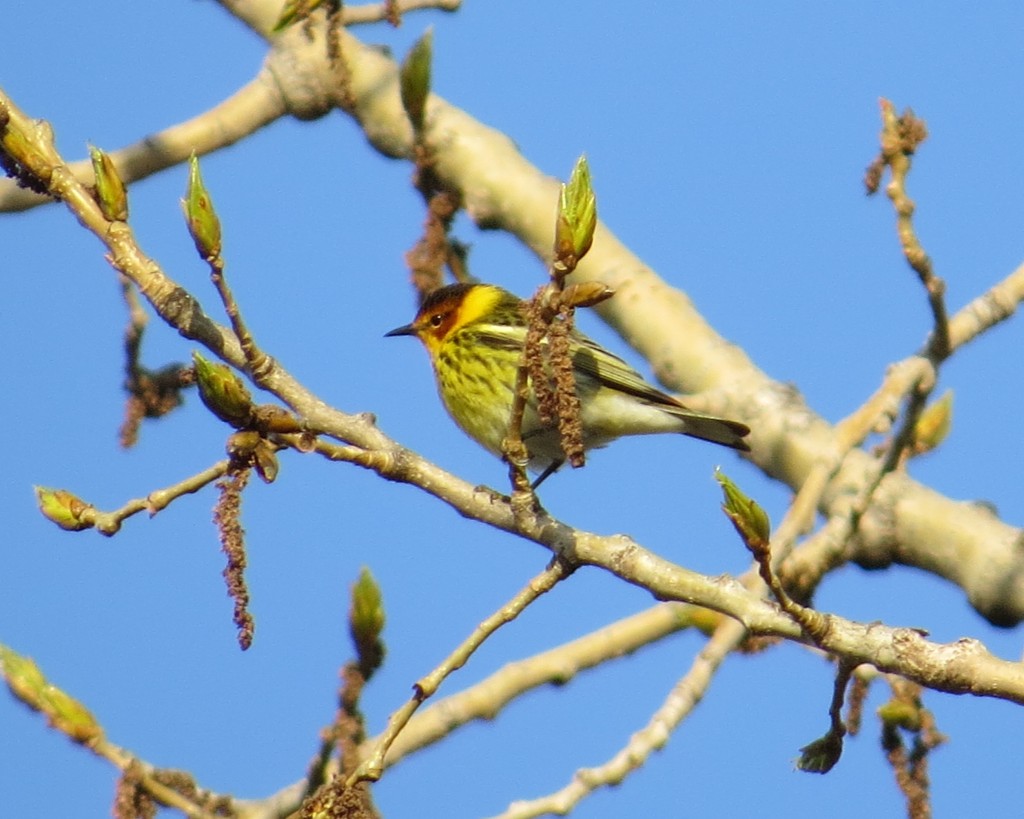 A Cape May is a darn nice bird and after getting some shots I was pleased with, I was feeling everything would be okay again even with round 2 of the recital on the horizon.
A Cape May is a darn nice bird and after getting some shots I was pleased with, I was feeling everything would be okay again even with round 2 of the recital on the horizon.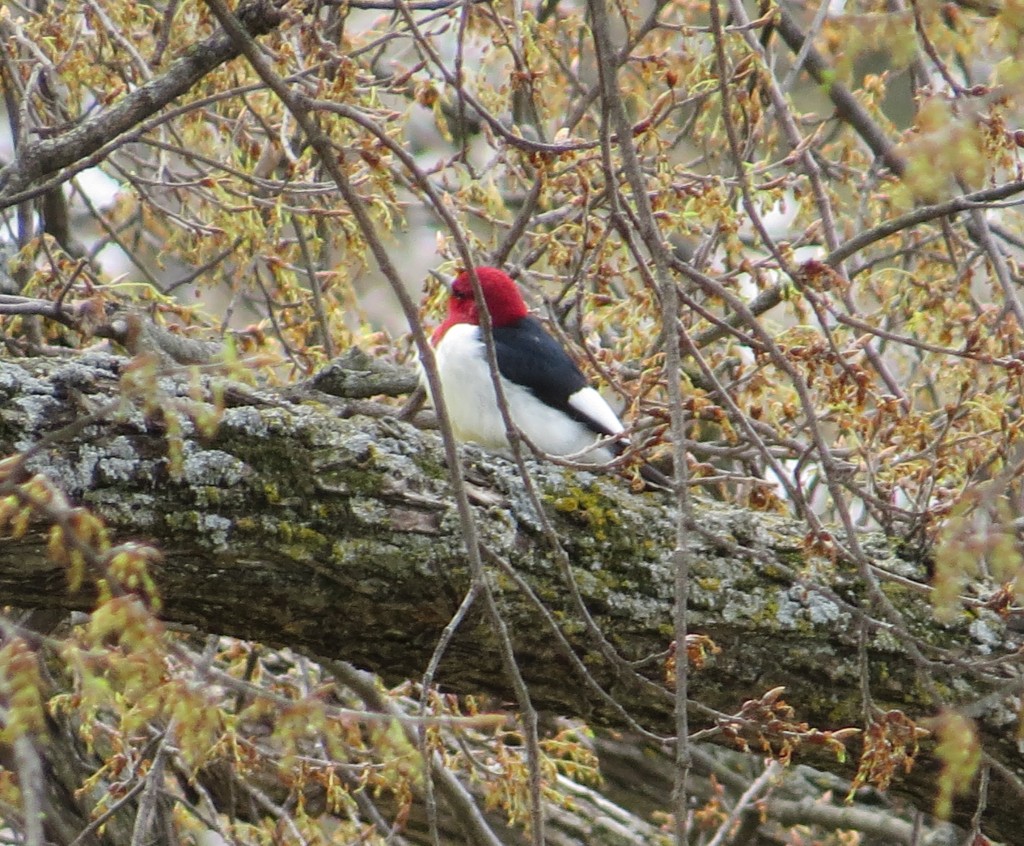
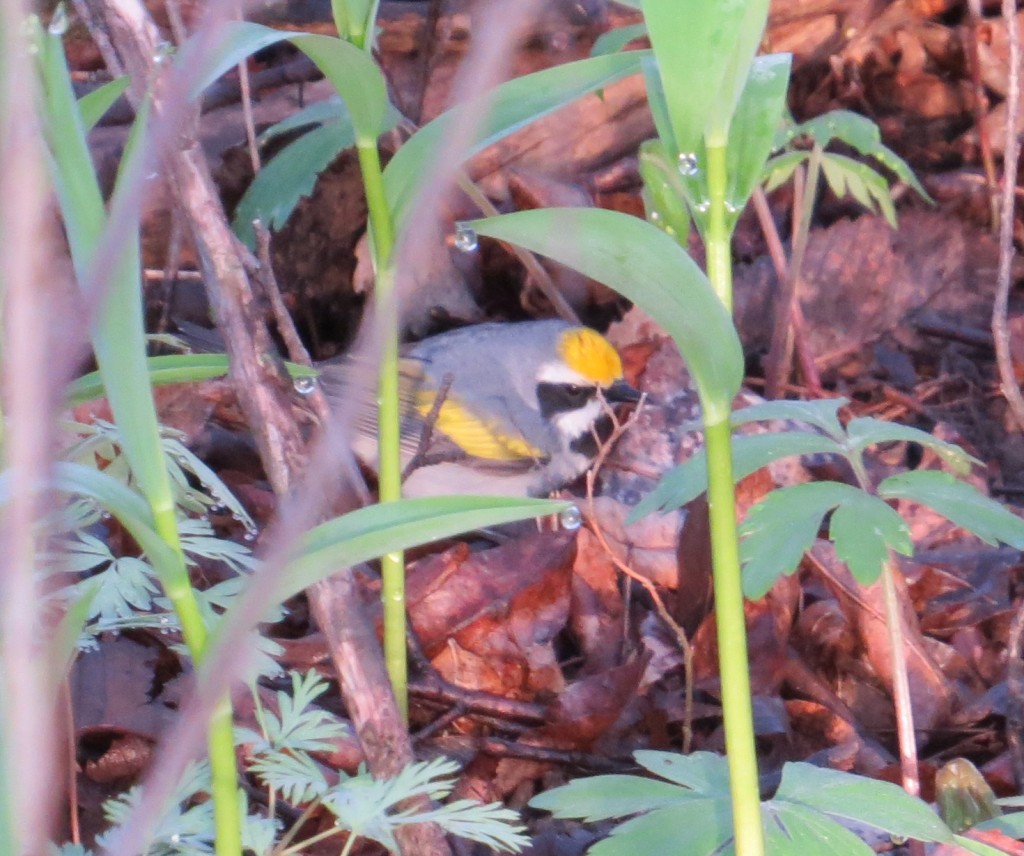
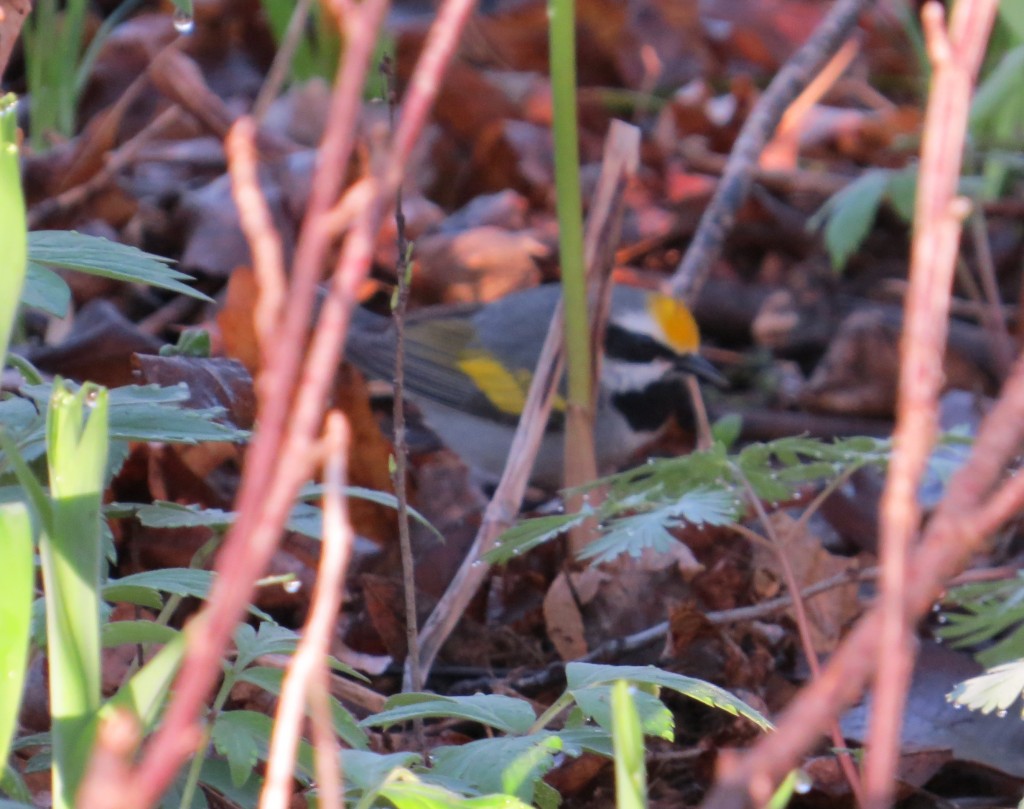
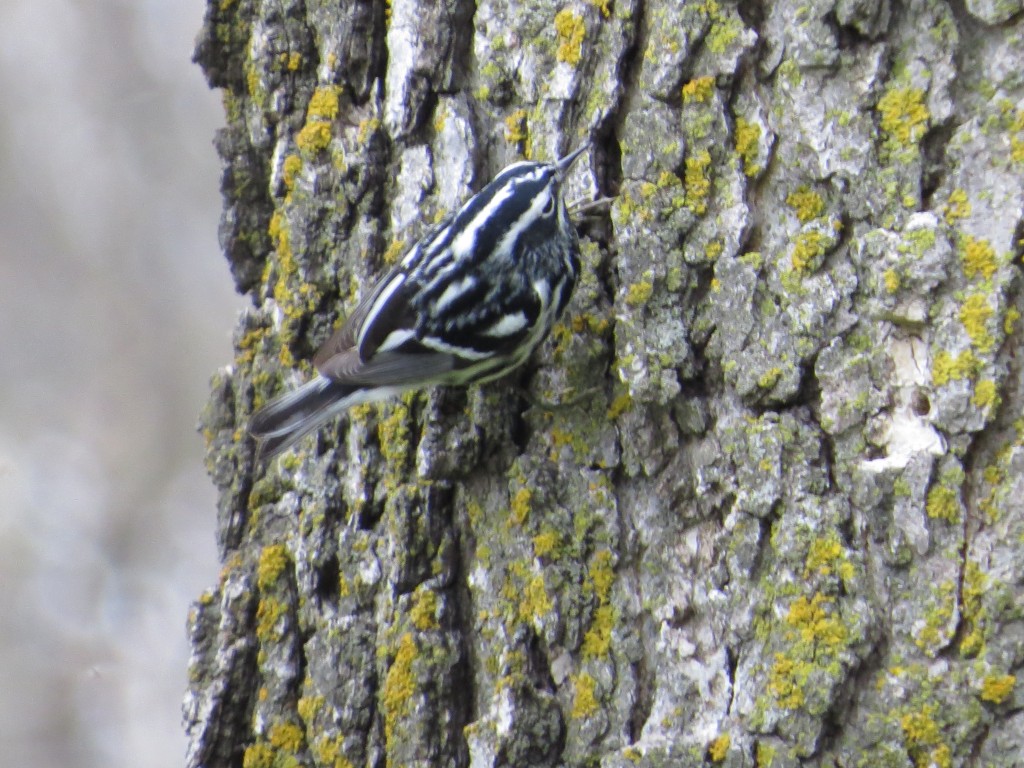
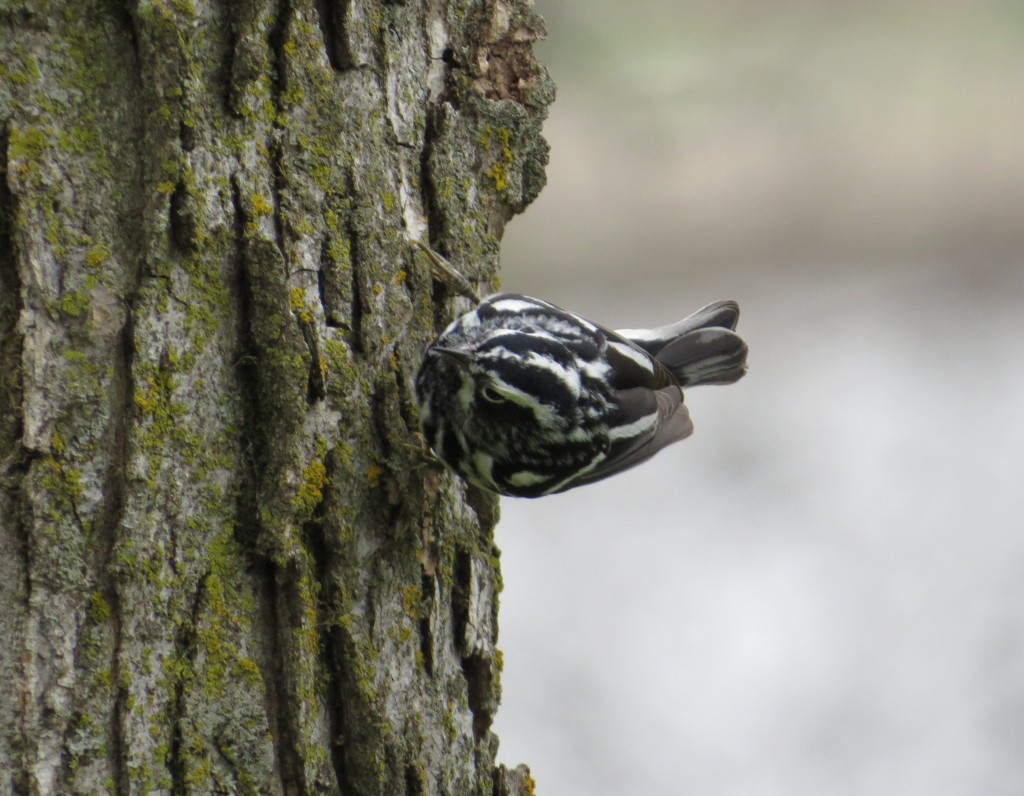 Sometimes the most unassuming dancers can hold your attention, like this Lincoln’s Sparrow. It is no warbler, but it is arguably one of the best sparrows.
Sometimes the most unassuming dancers can hold your attention, like this Lincoln’s Sparrow. It is no warbler, but it is arguably one of the best sparrows.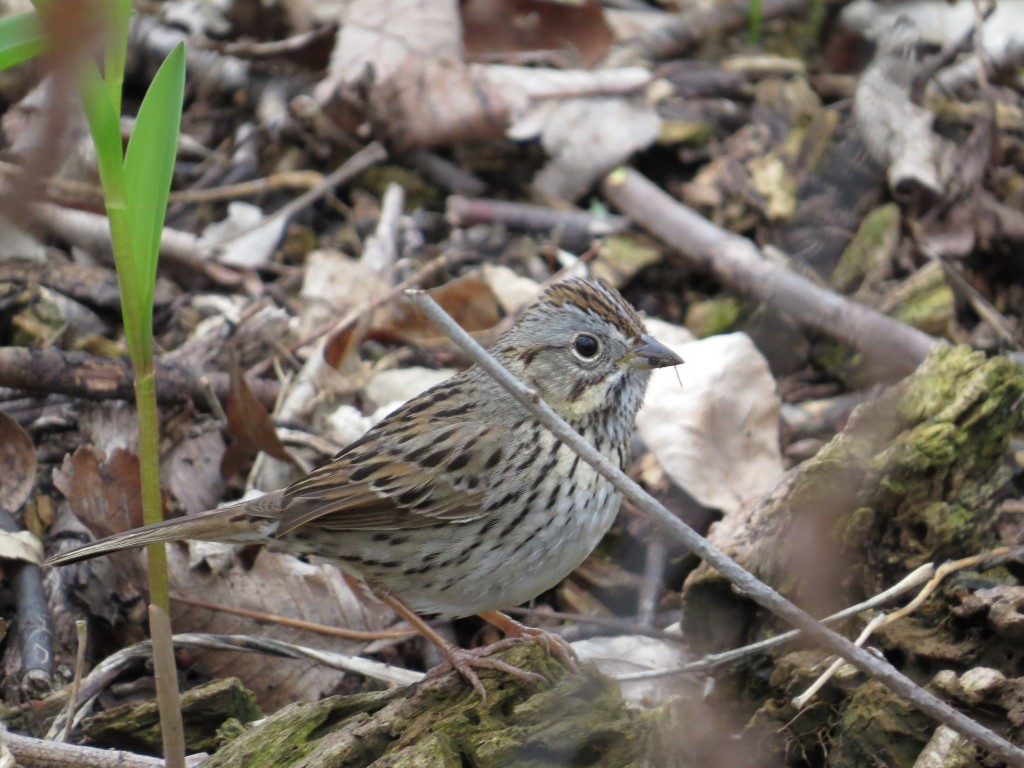
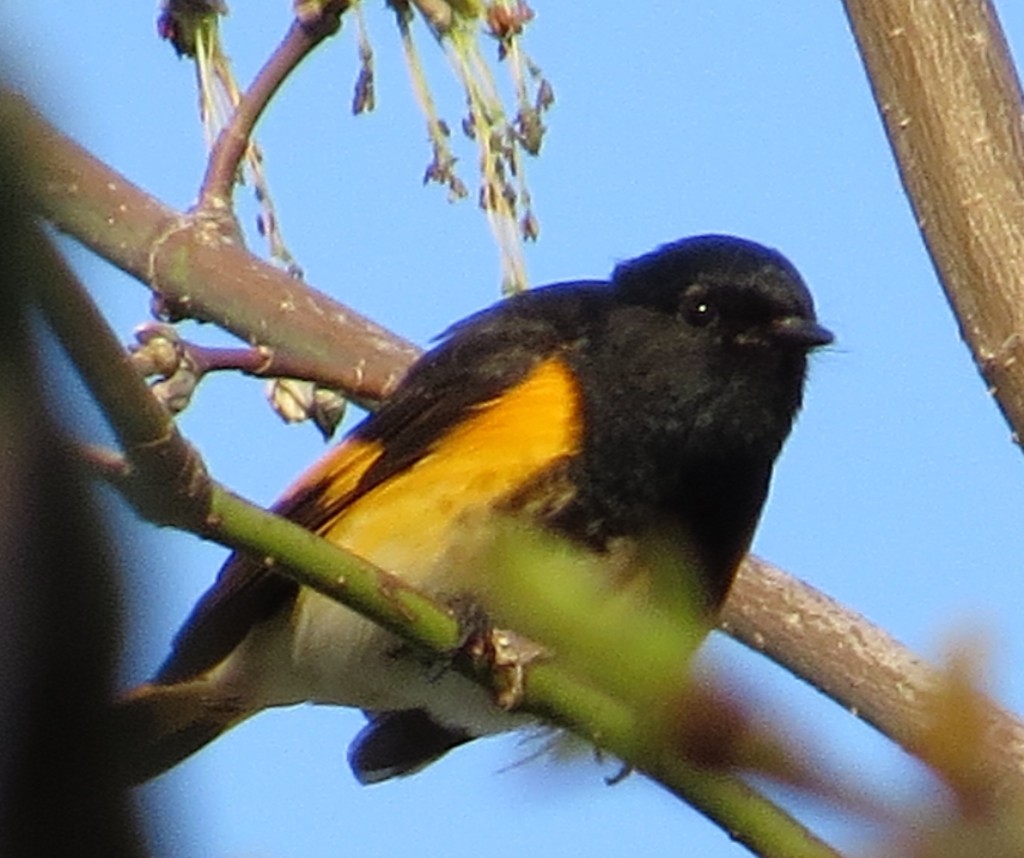
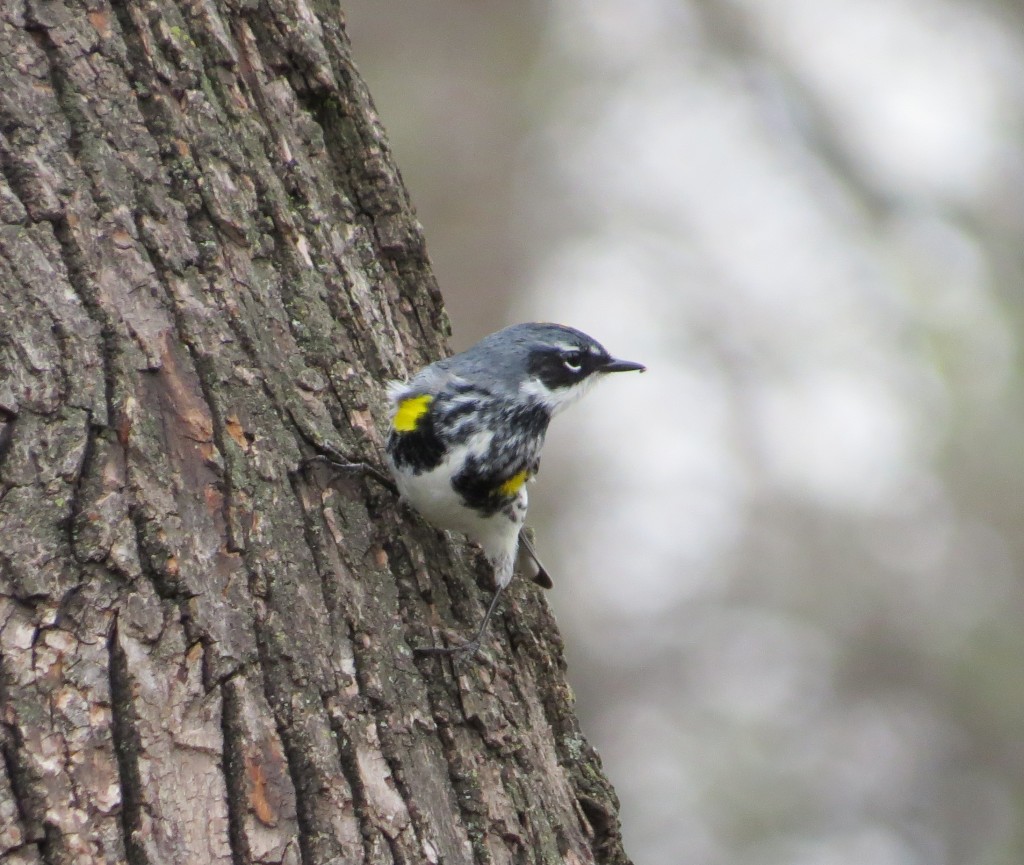

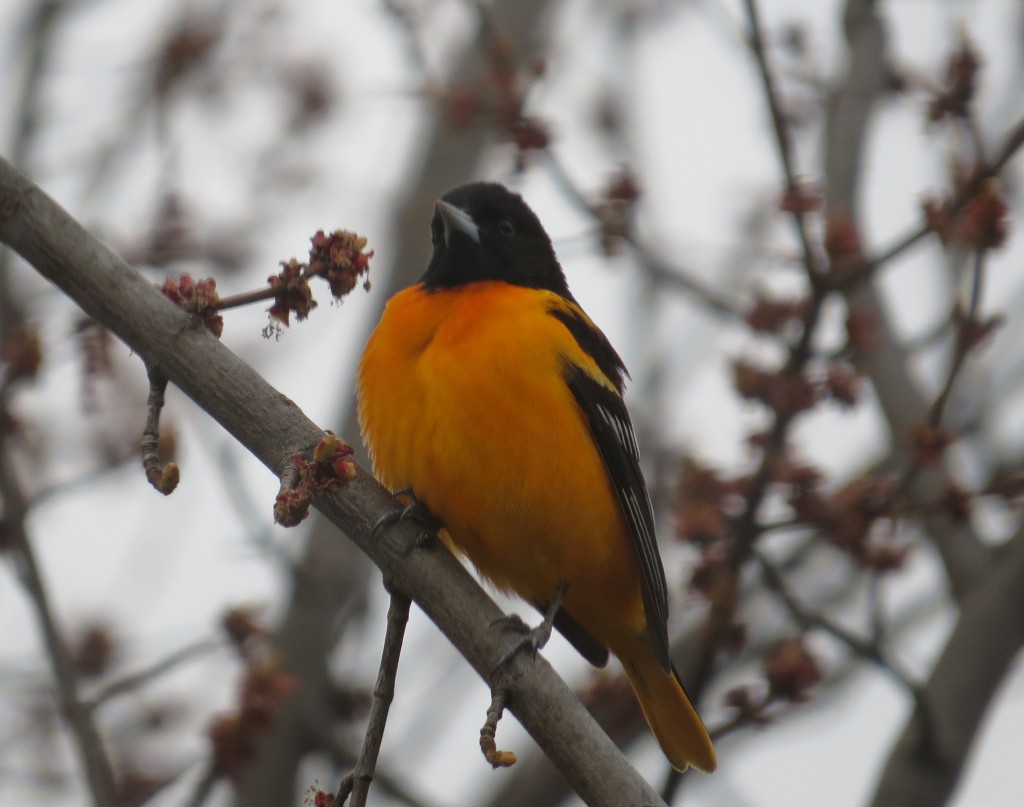
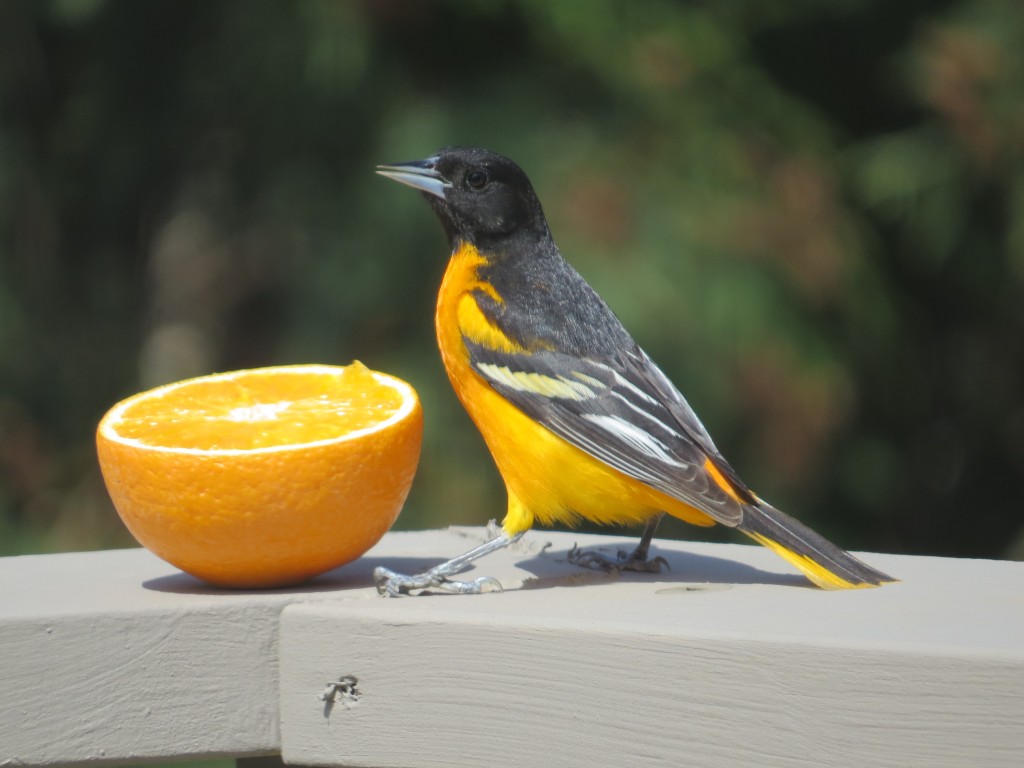 I might be out chasing birds, but Melissa makes sure the ones here on the ranch are taken care of. She bought lots of jars of cheap grape jelly and this cool, mess-free feeder. I know, I said you don’t need a fancy feeder. It’s true, you don’t. Welch’s will not like the following statement either: you don’t even need name-brand jelly.
I might be out chasing birds, but Melissa makes sure the ones here on the ranch are taken care of. She bought lots of jars of cheap grape jelly and this cool, mess-free feeder. I know, I said you don’t need a fancy feeder. It’s true, you don’t. Welch’s will not like the following statement either: you don’t even need name-brand jelly.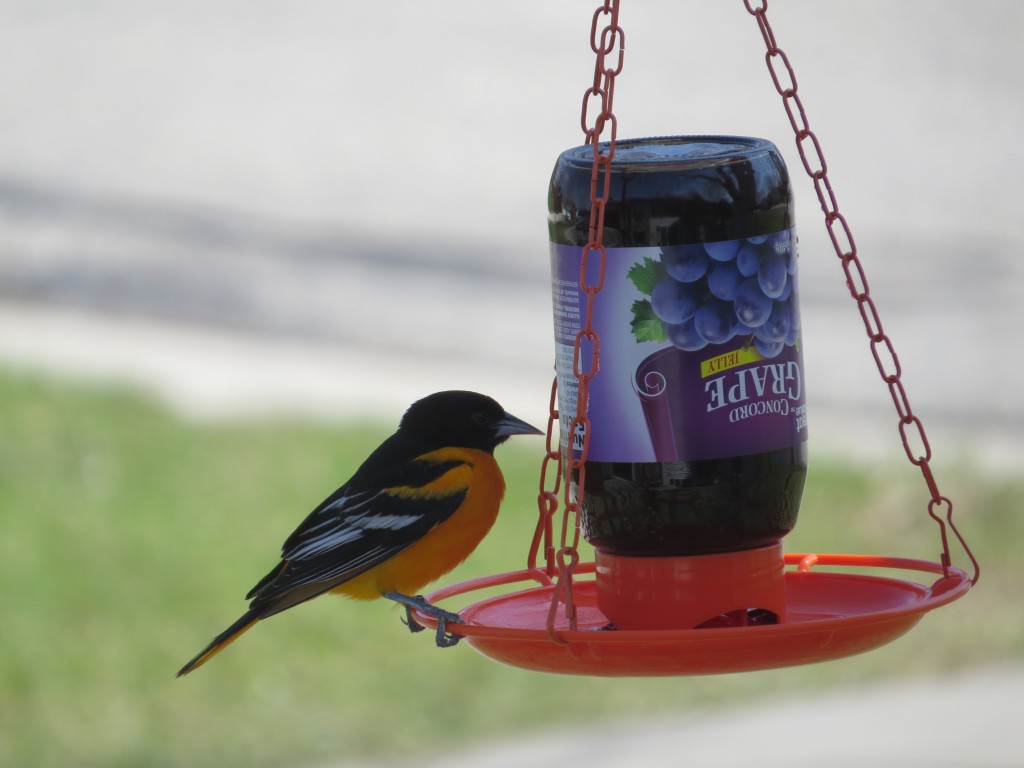 If you have kids I firmly think you should have a bird feeder of some sort. They are pretty exciting for everyone to watch. As Evan is in Cub Scouts and into birding, I’ve often thought that a great Eagle Scout project would be to erect and maintain bird feeders at a nursing home. If he’s still into both those activites in 10 years, I’ll suggest it.
If you have kids I firmly think you should have a bird feeder of some sort. They are pretty exciting for everyone to watch. As Evan is in Cub Scouts and into birding, I’ve often thought that a great Eagle Scout project would be to erect and maintain bird feeders at a nursing home. If he’s still into both those activites in 10 years, I’ll suggest it.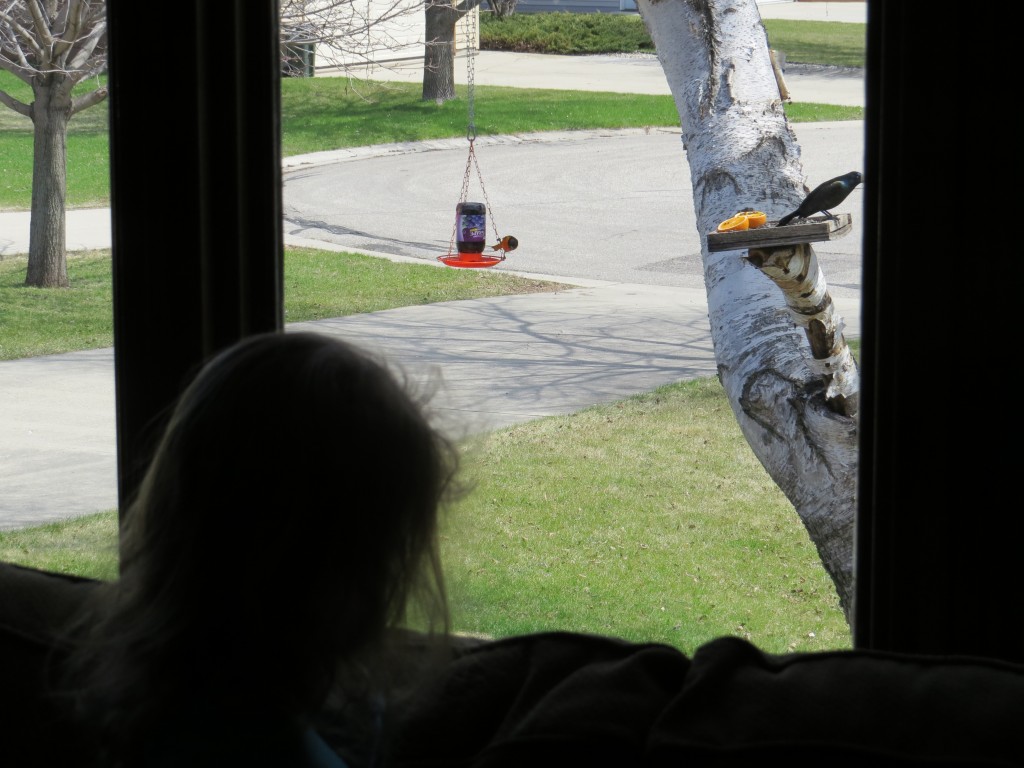
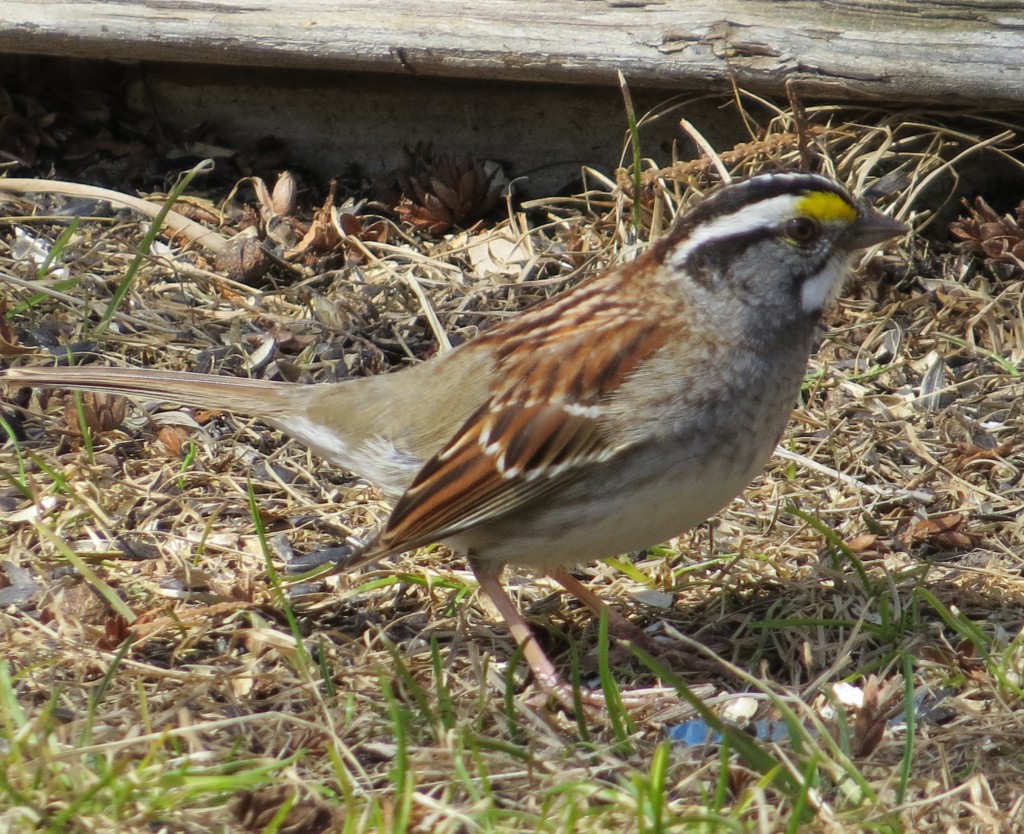
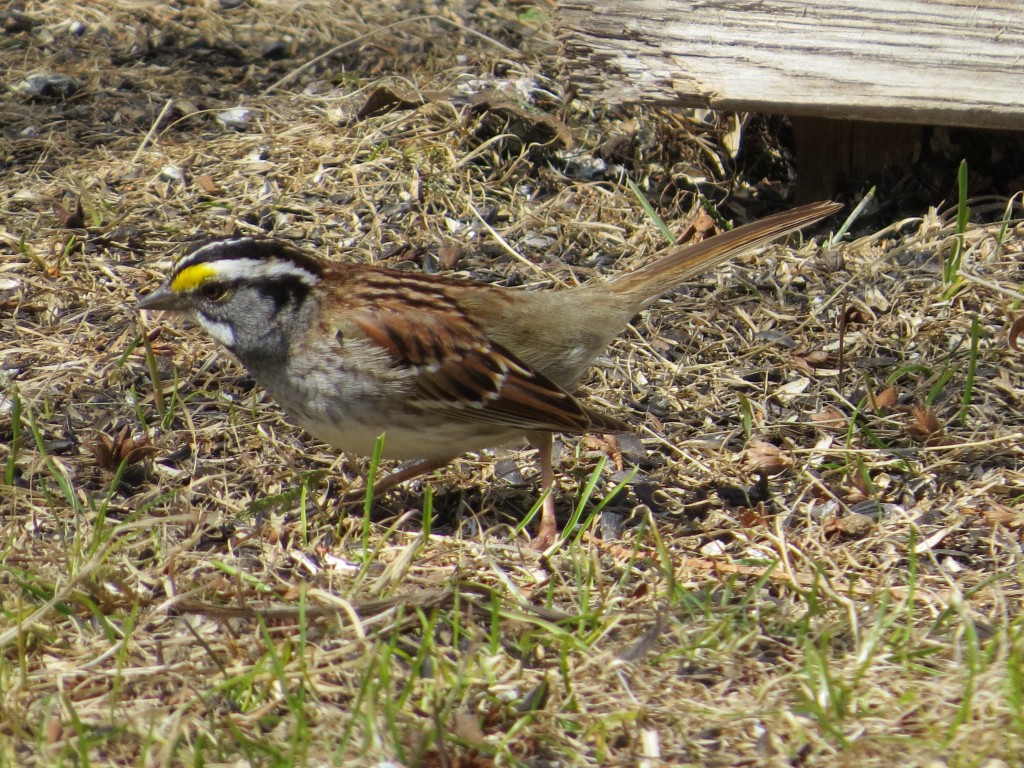
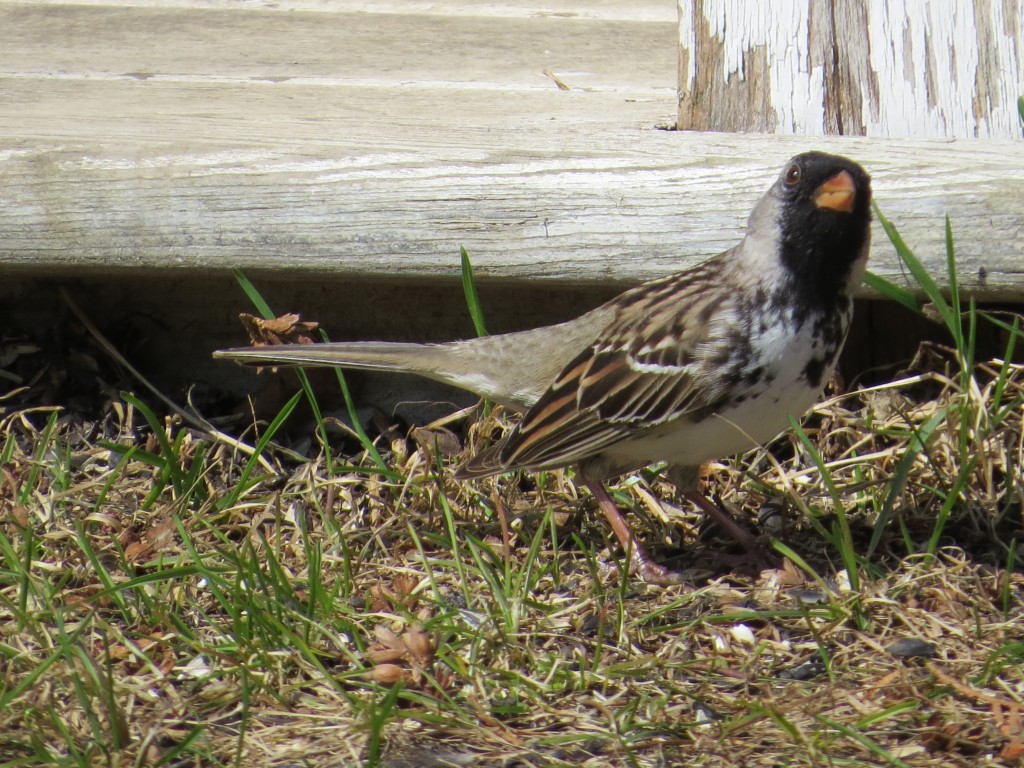
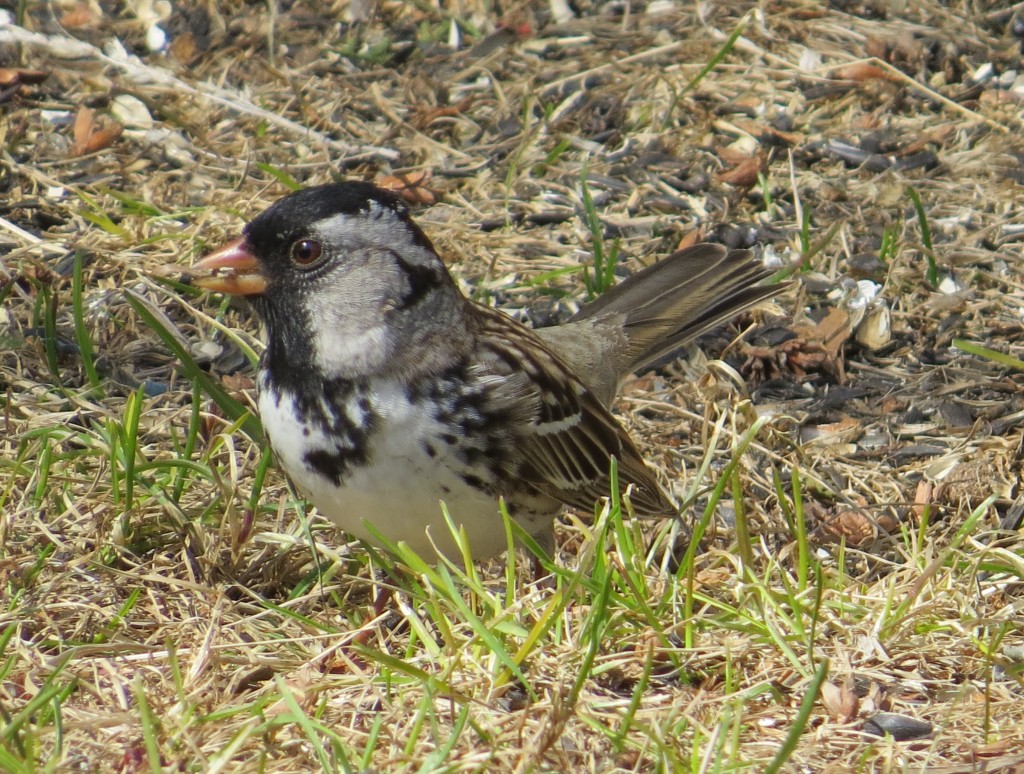
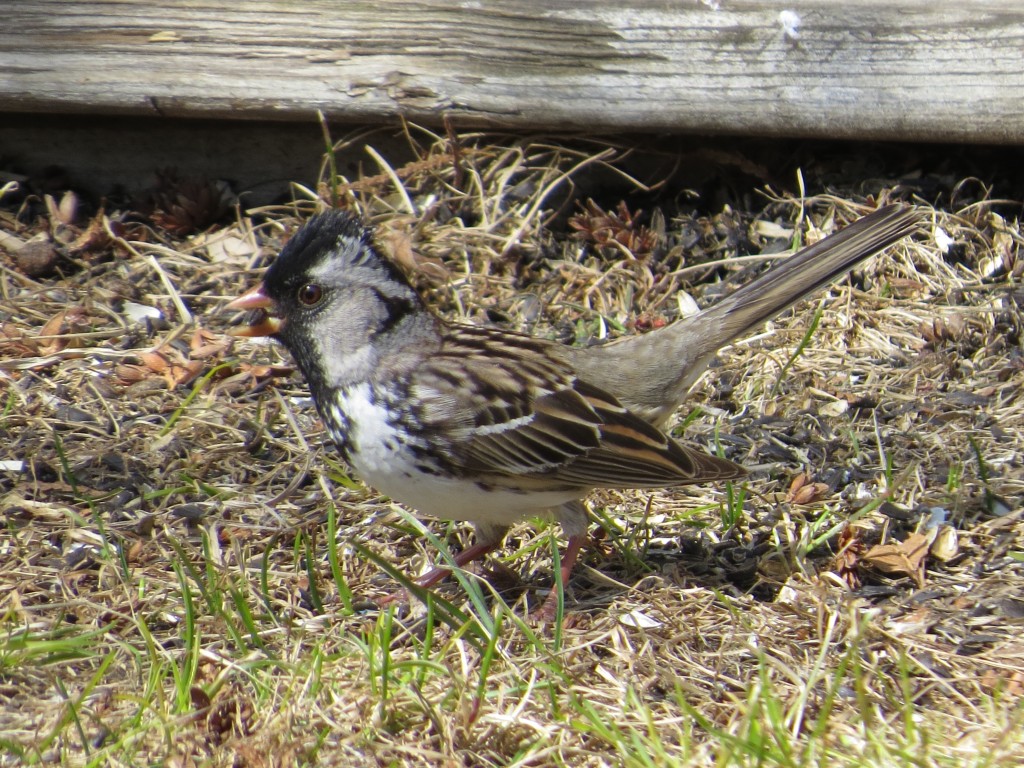 It was quite the sparrow-fest in the yard today.
It was quite the sparrow-fest in the yard today.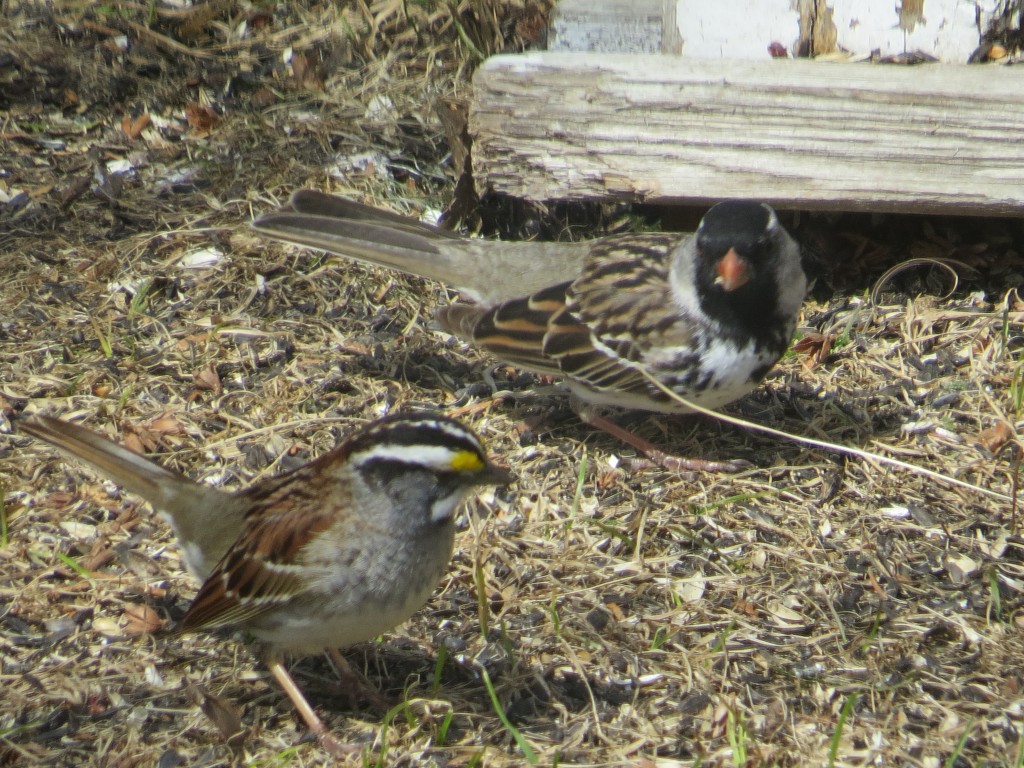 We even had a brief drop-in from a Clay-colored Sparrow.
We even had a brief drop-in from a Clay-colored Sparrow.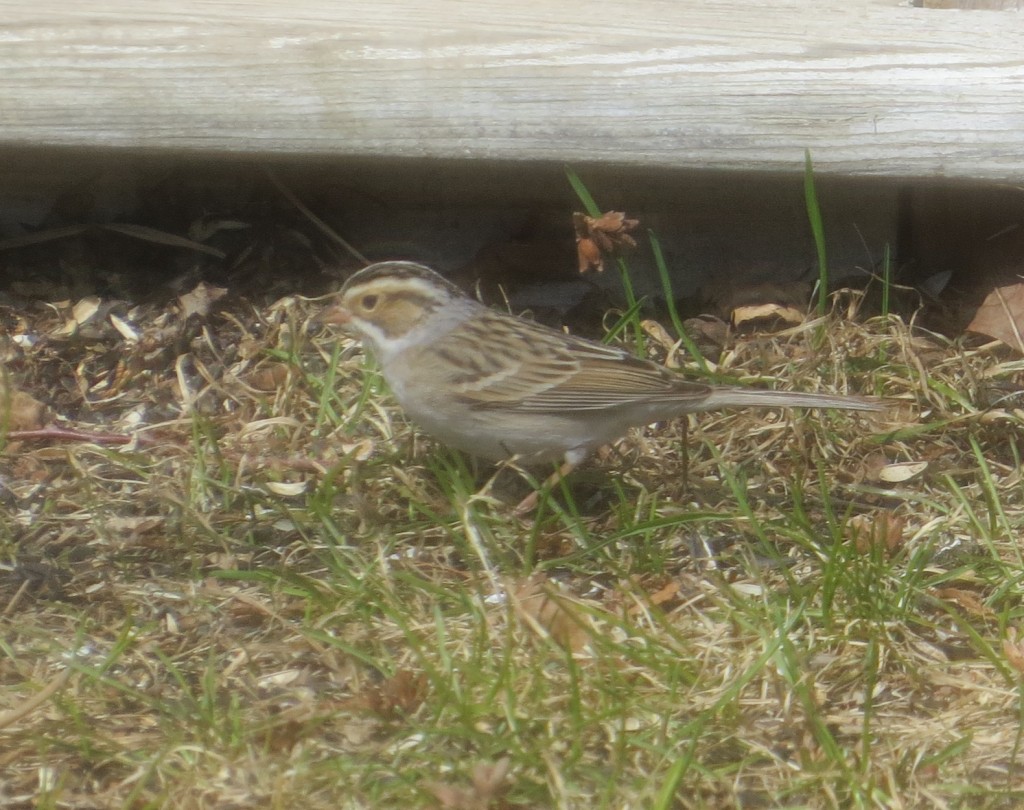
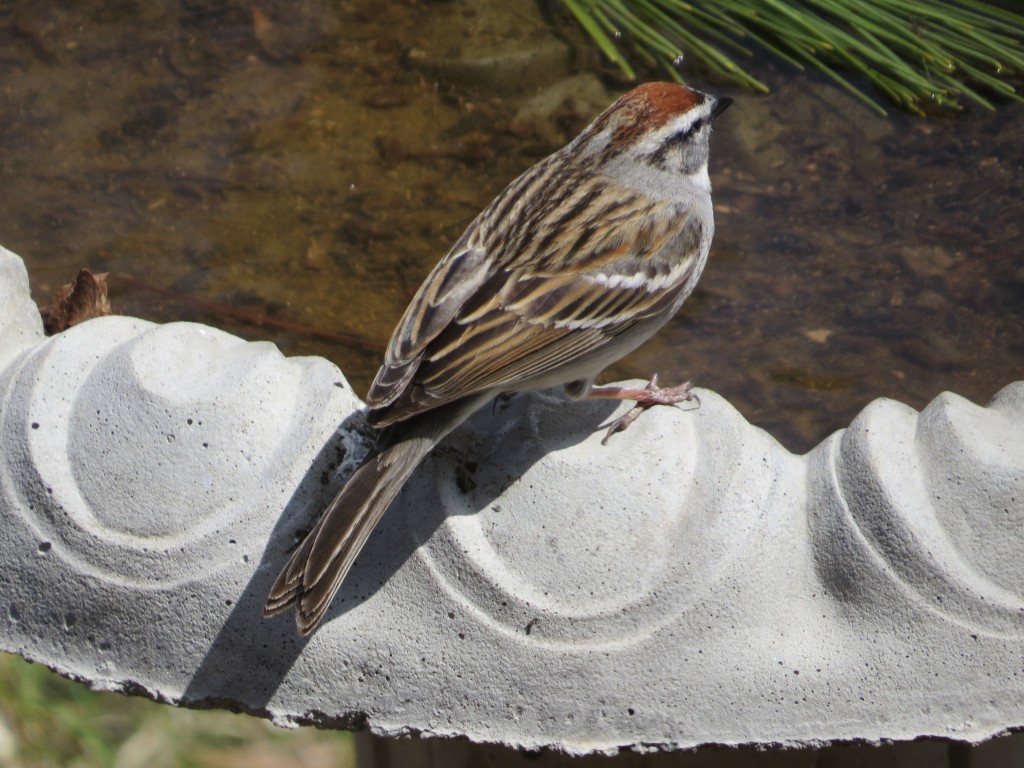
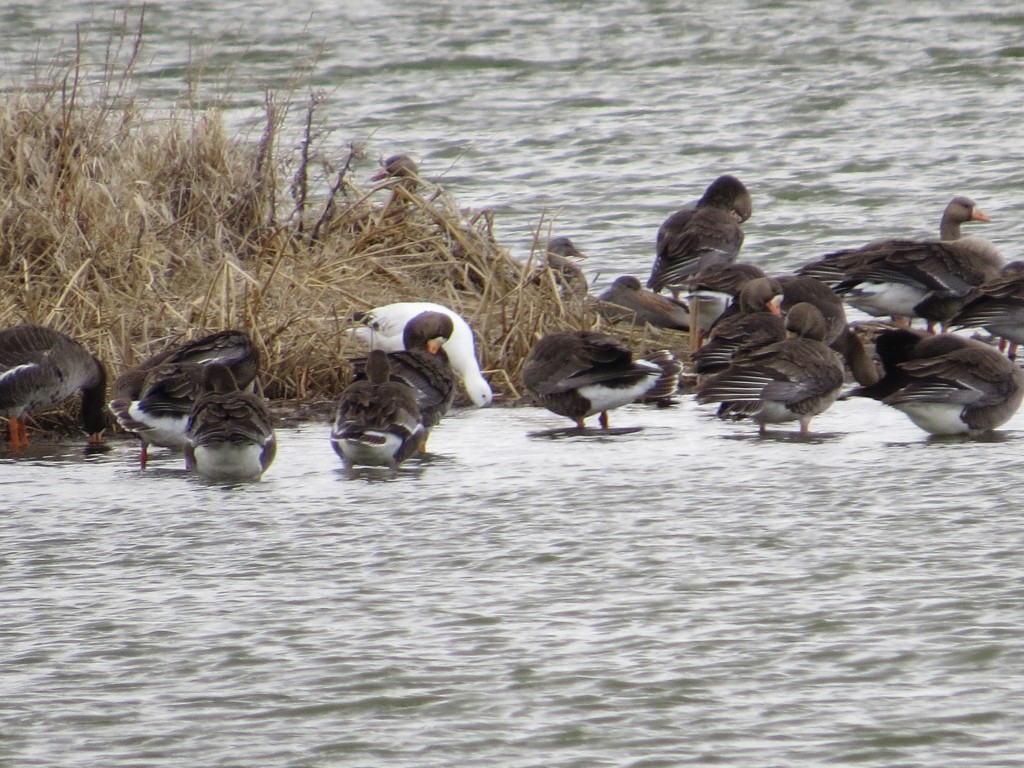
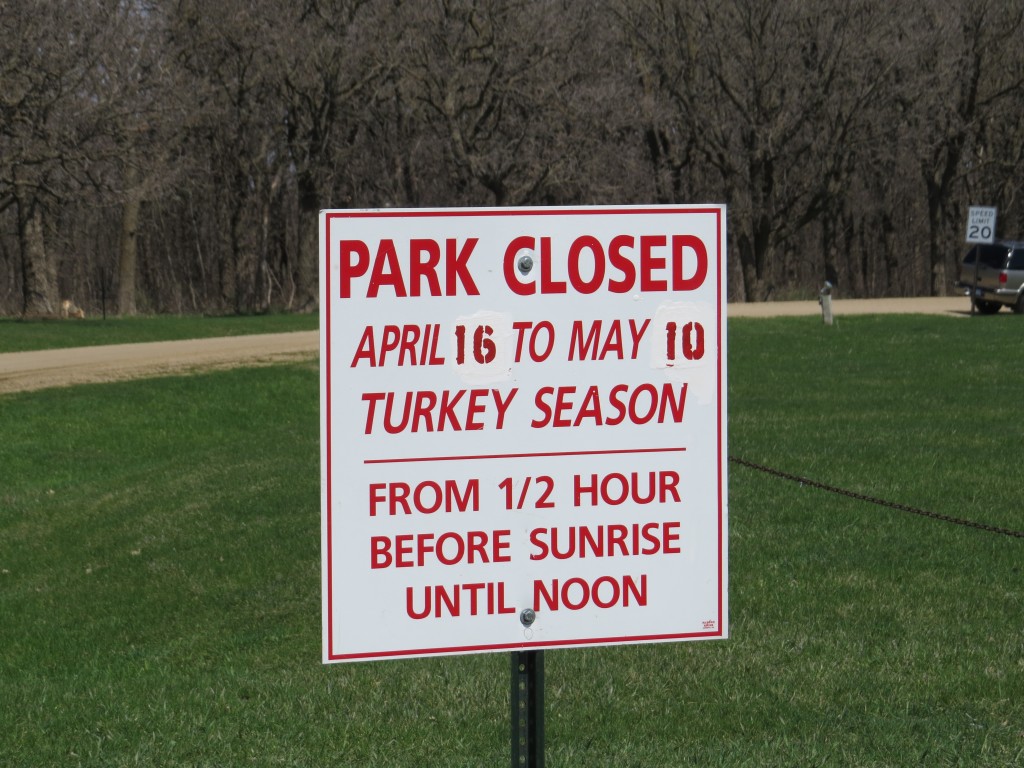 My goodness did those kids play hard and long in the chilly, windy weather. I was content to let them do so. Melissa was ill and bed-ridden all day back home, and I figured we’d have a better shot at those ibises on the return trip the closer it got to evening.
My goodness did those kids play hard and long in the chilly, windy weather. I was content to let them do so. Melissa was ill and bed-ridden all day back home, and I figured we’d have a better shot at those ibises on the return trip the closer it got to evening.
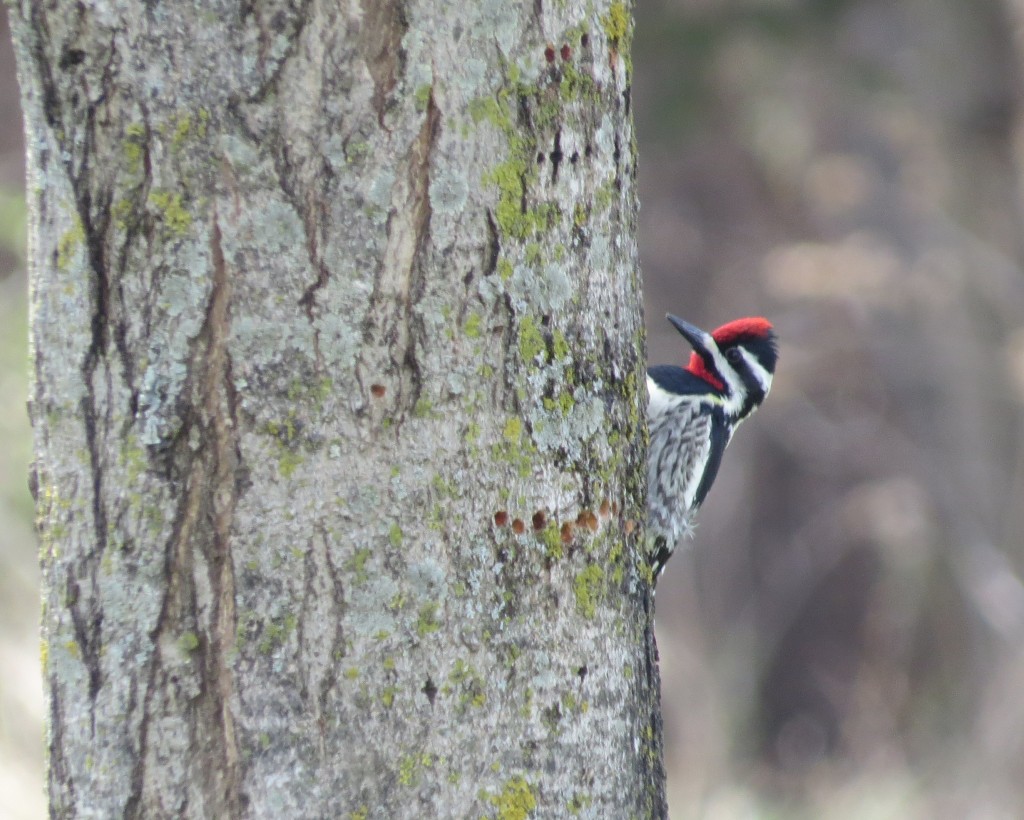
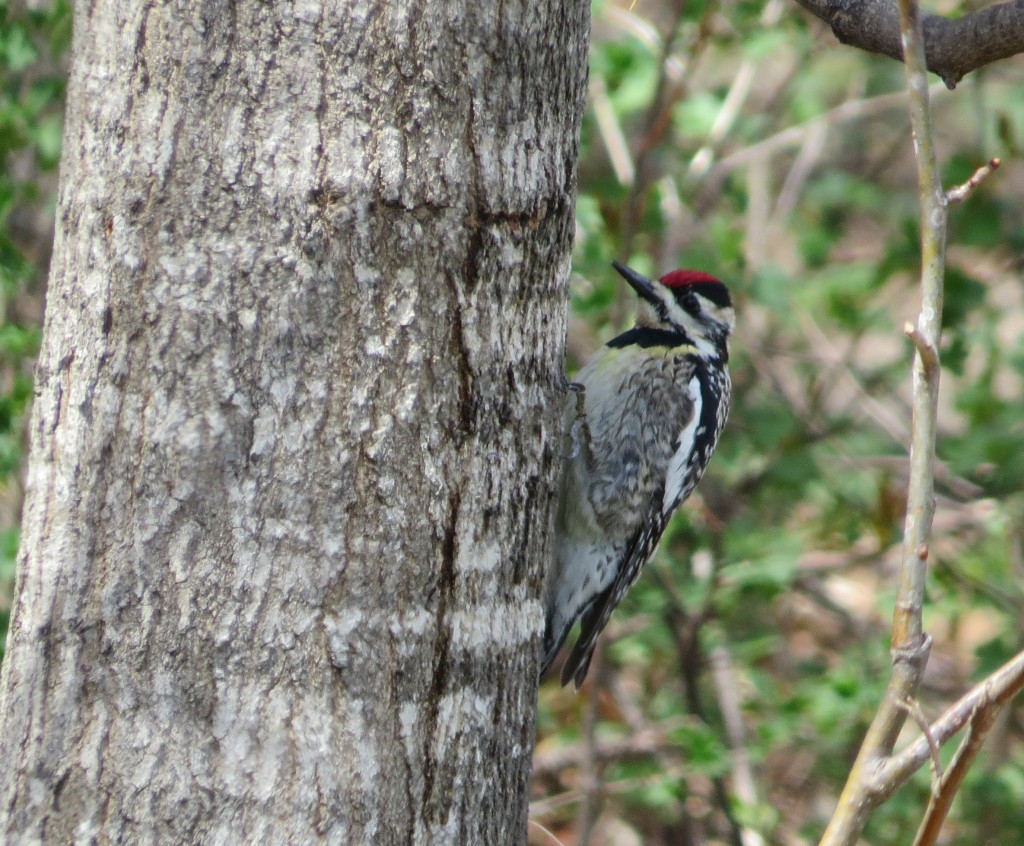 It was pretty neat to see him working so hard at his name-sake – sucking sap.
It was pretty neat to see him working so hard at his name-sake – sucking sap.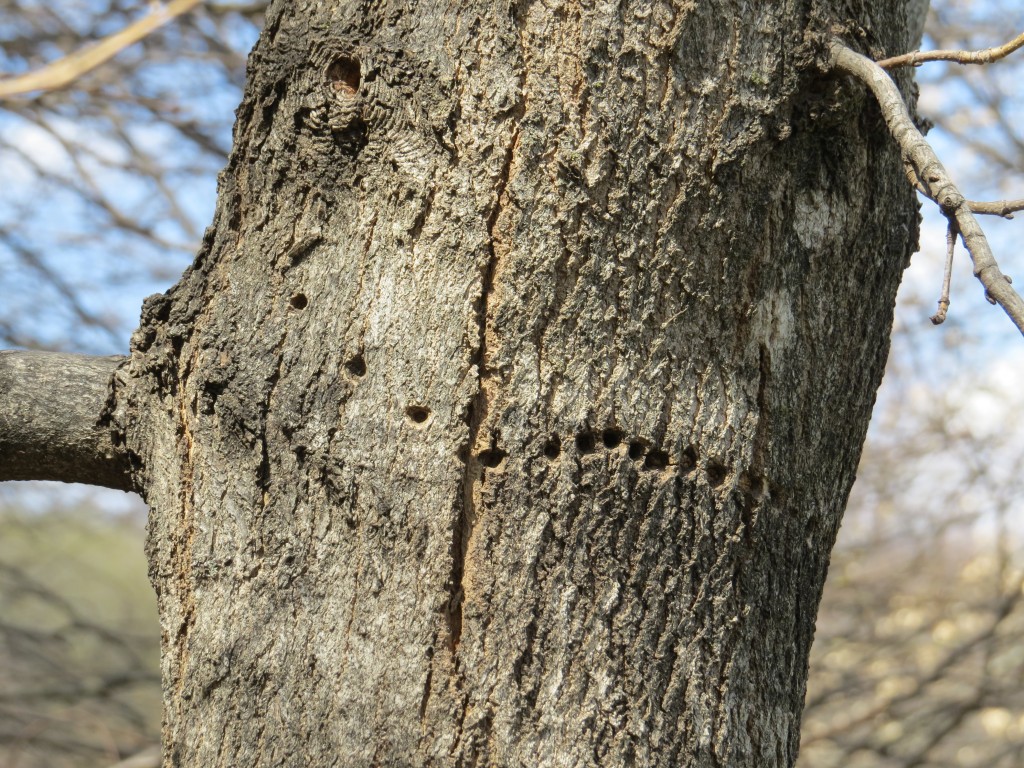 So, the blog post could very well have ended right here since we struck out on all three targets. Thankfully, though, it doesn’t.
So, the blog post could very well have ended right here since we struck out on all three targets. Thankfully, though, it doesn’t.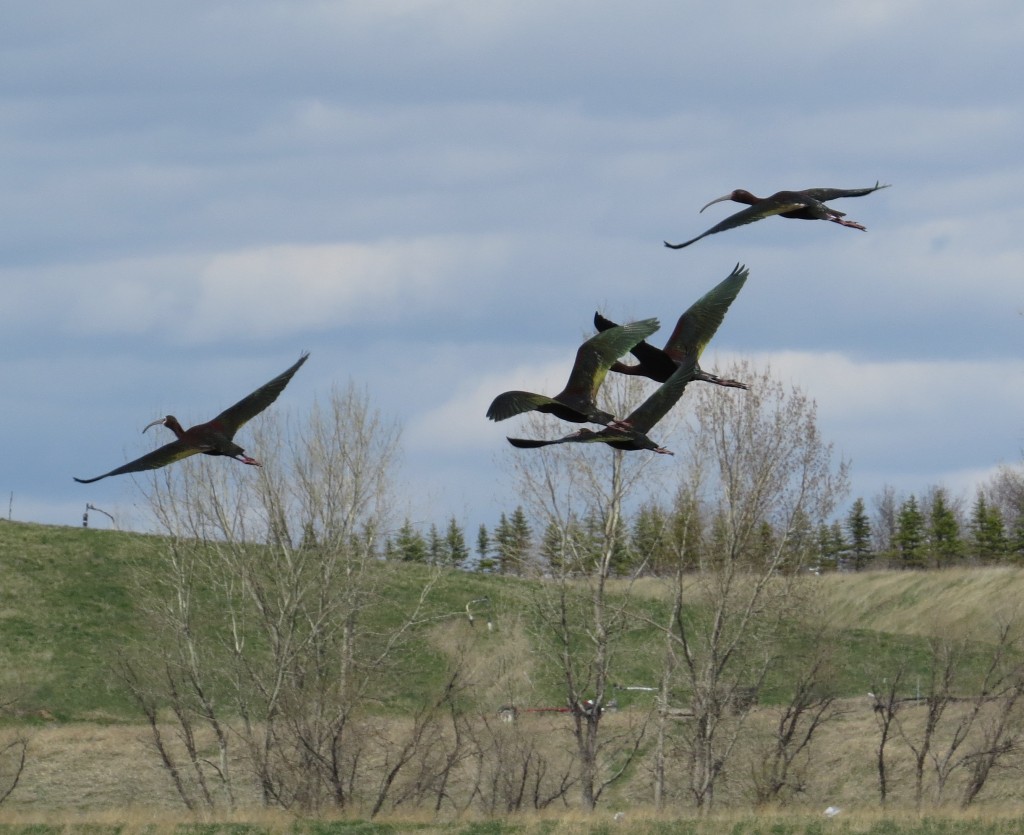
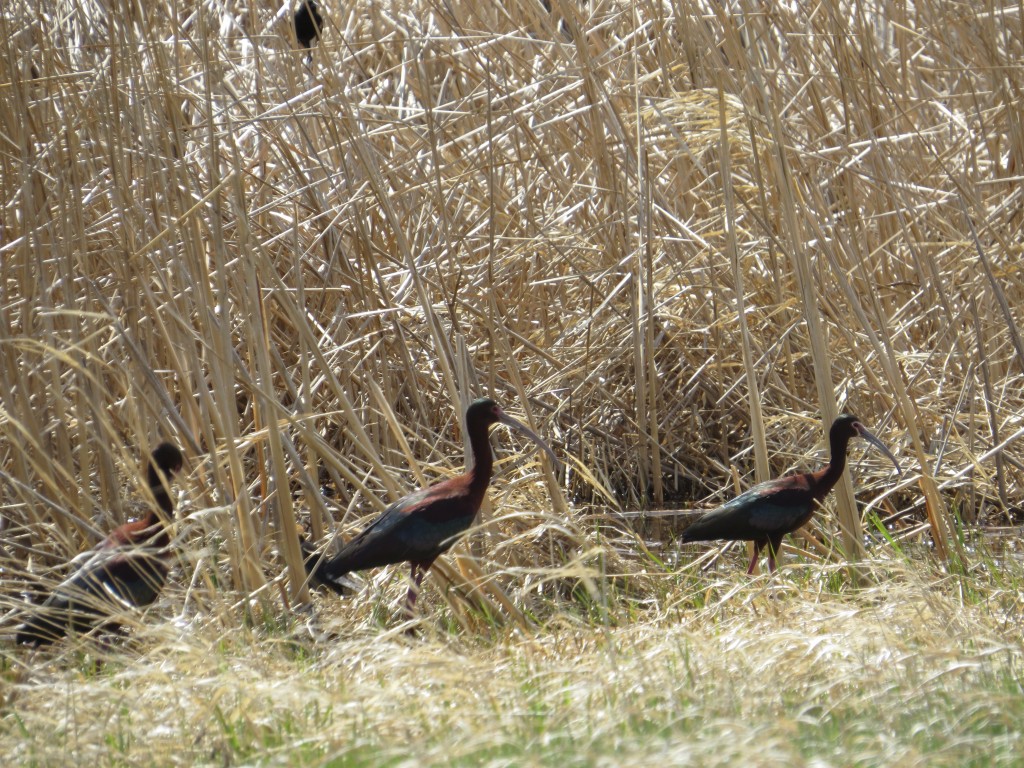
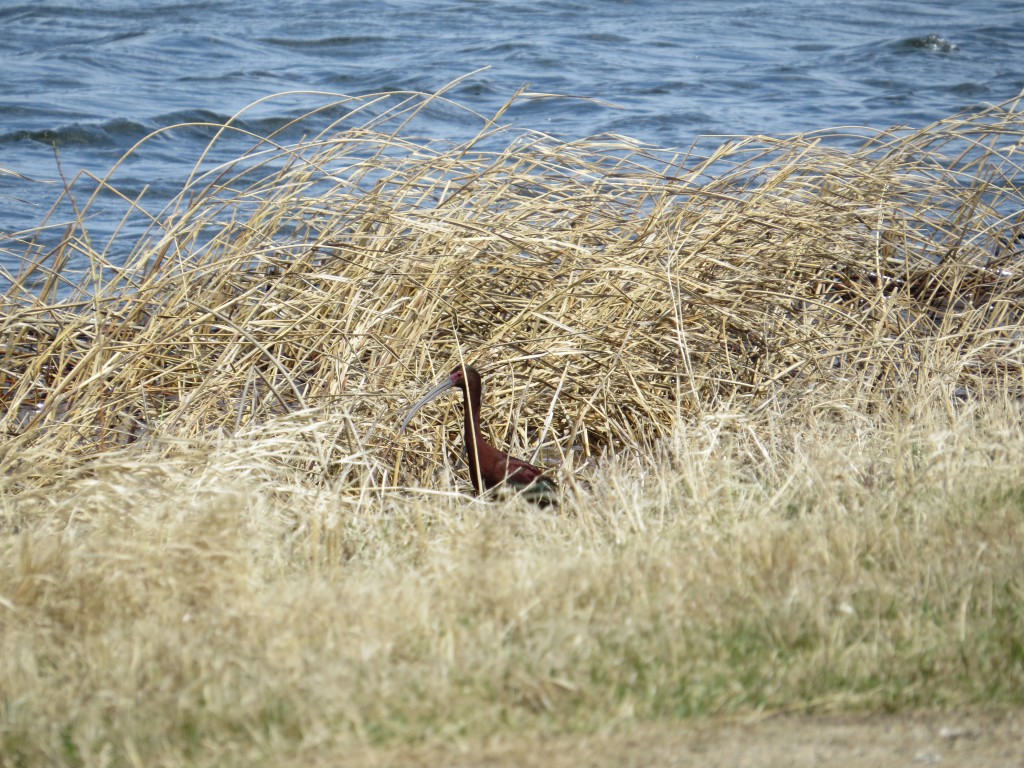 We spent a good deal of time driving up and creeping on these birds only to have them flush a short distance and always together as a group of five.
We spent a good deal of time driving up and creeping on these birds only to have them flush a short distance and always together as a group of five.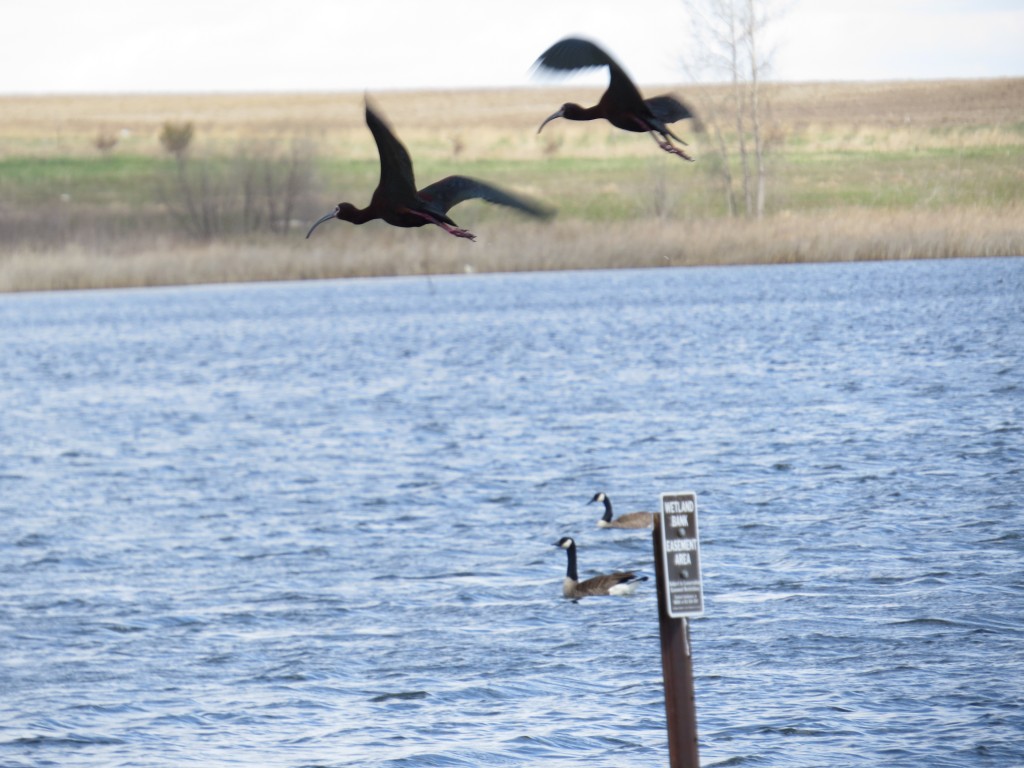
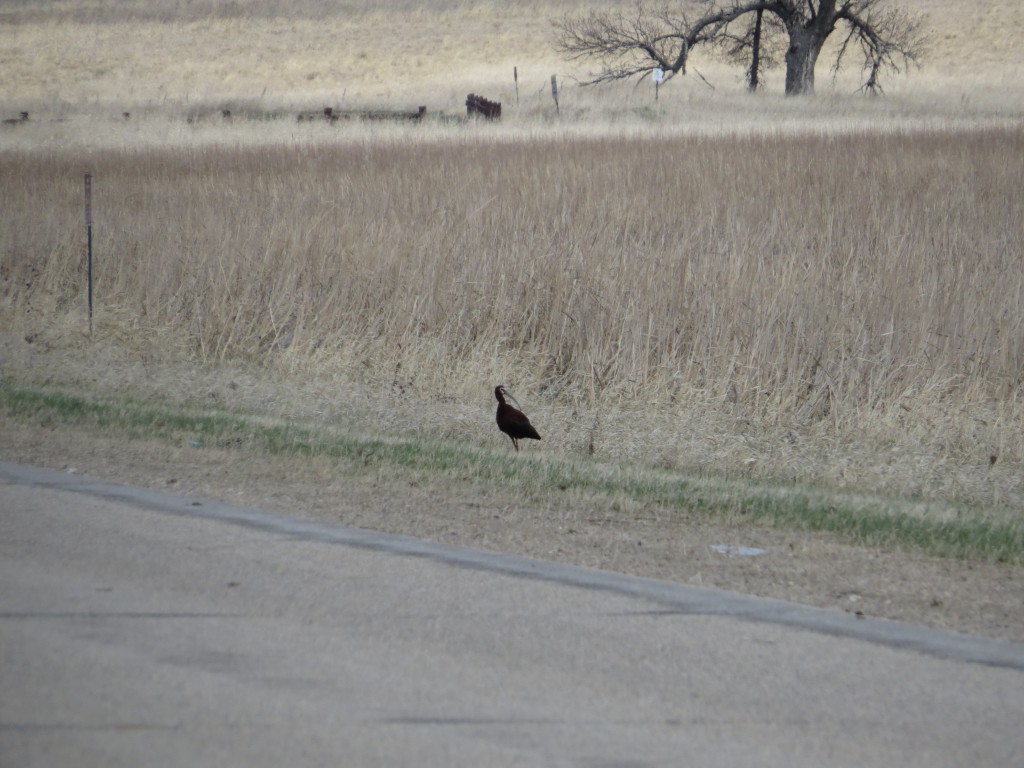 What a life bird this was. A small colony of them nest in South Dakota, so we do get them as scarce visitors every spring in Minnesota. I remember thinking last year what a strange bird this was and even more strange that it can be seen in our state.
What a life bird this was. A small colony of them nest in South Dakota, so we do get them as scarce visitors every spring in Minnesota. I remember thinking last year what a strange bird this was and even more strange that it can be seen in our state.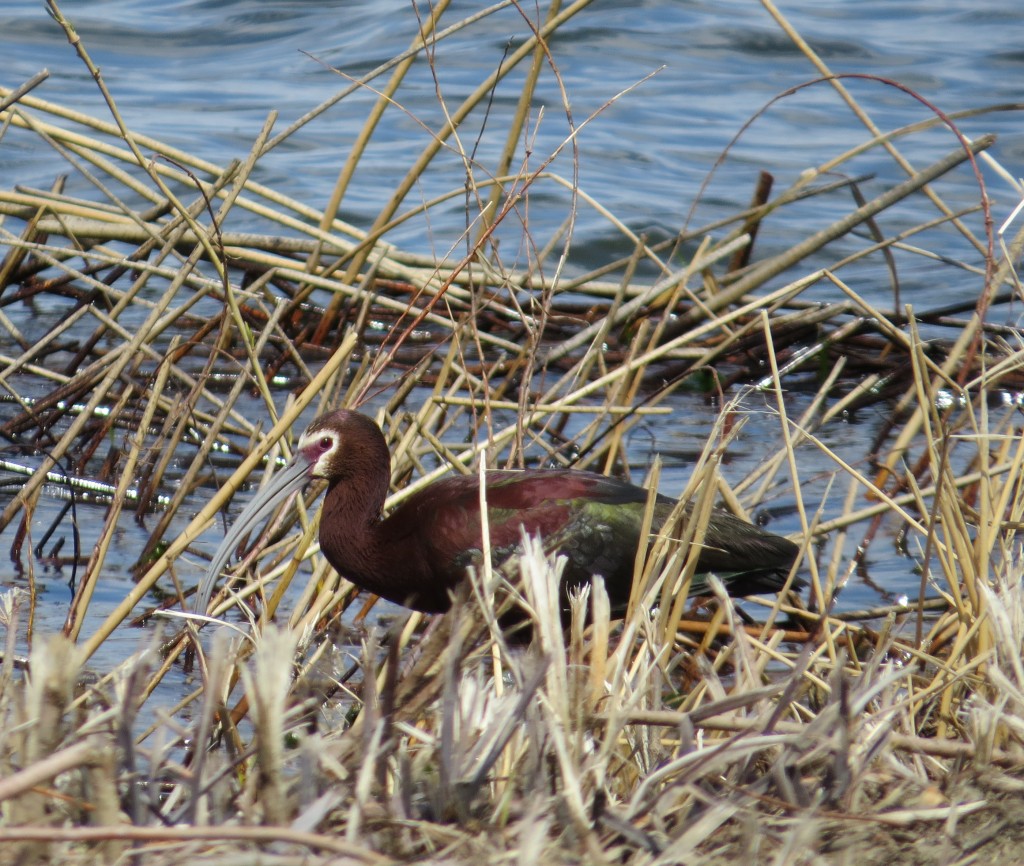
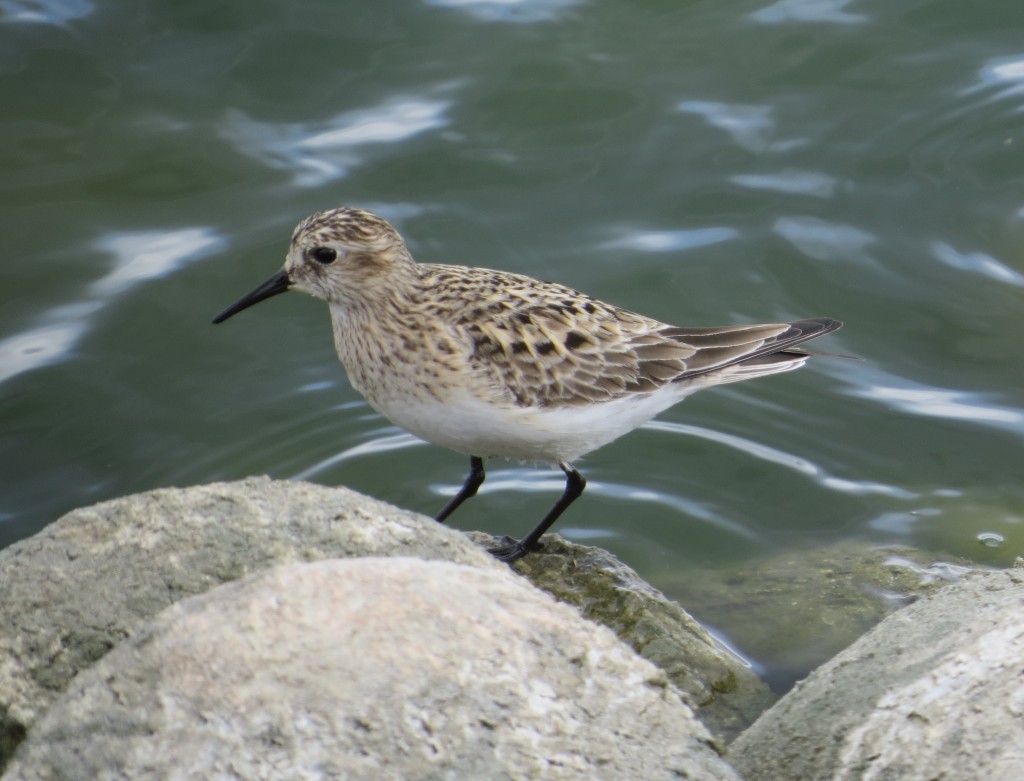
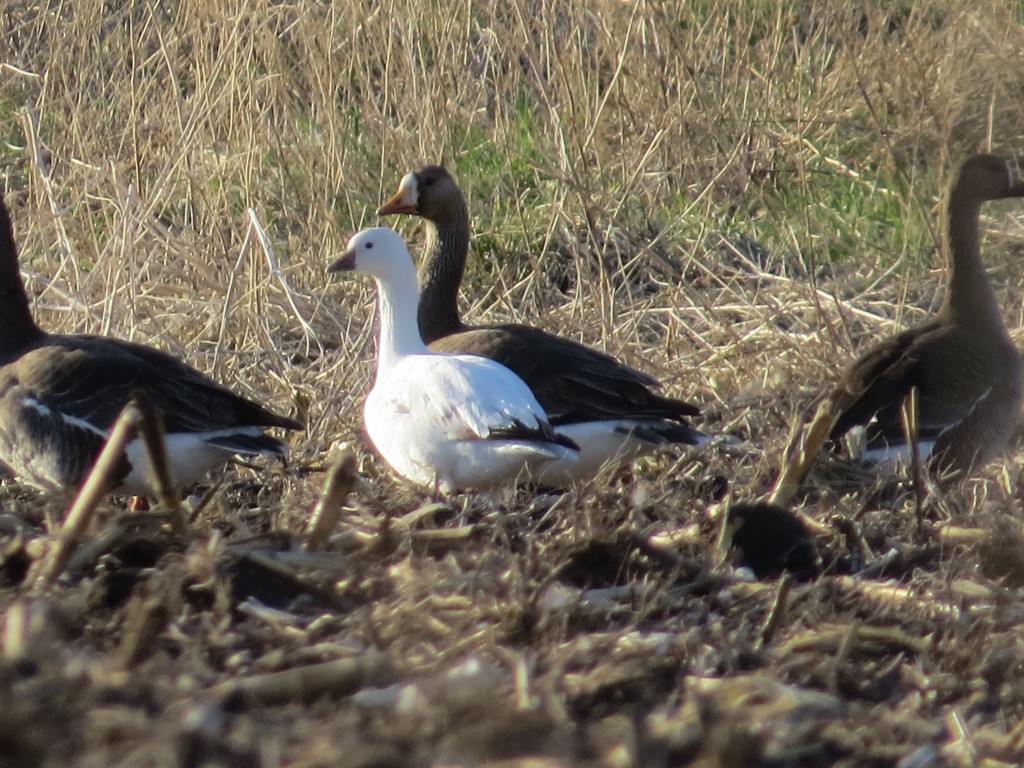
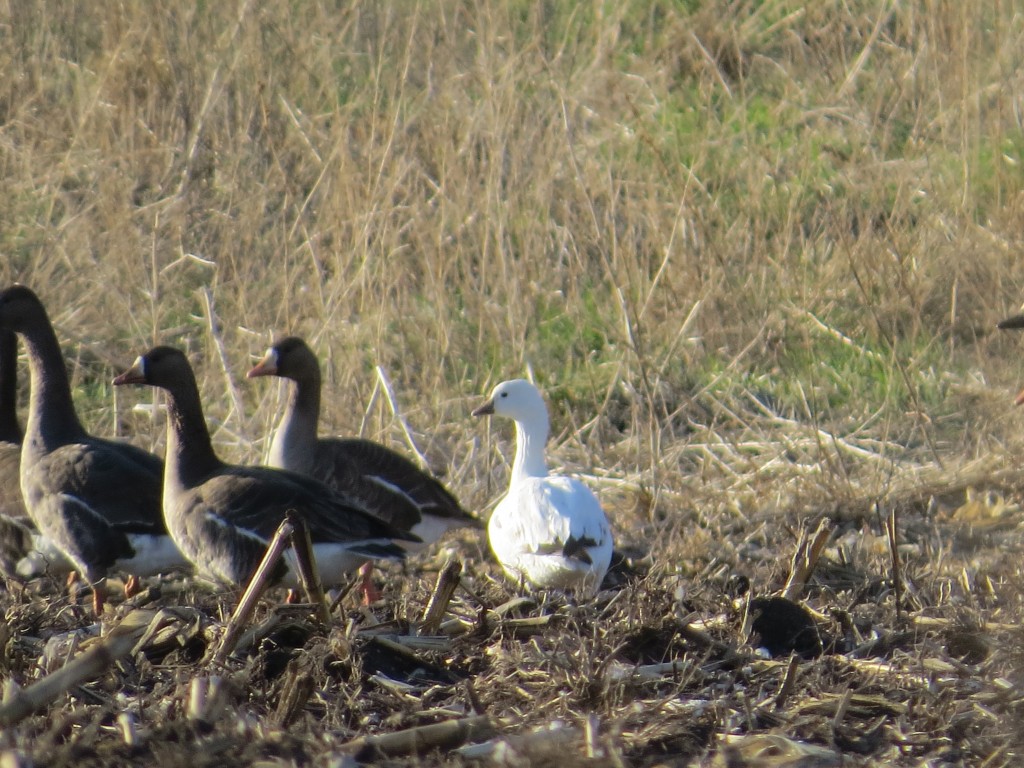 This is one of those life birds that is expected in our area. We just hadn’t turned one up yet. They are quite scarce in relation to the other goose species. I always thought this one would be easy to get since Randy, the wise Yoda birder of Kandiyohi County, had said all you have to do is stand in your yard during migration, find a flock of Snow Geese going over your house, and look for the goose that’s 25% smaller than the rest. Seemed easy enough. Except we don’t get nearly the fly-over flocks that Randy does even though he’s just 5 miles to the west. And I’ve learned that Randy downplays how rare or scarce a bird is. I mean, he’s had a Lazuli Bunting and Yellow-crowned Night Heron in his yard, so why would a Ross’s Goose be so hard to him? I started to get clued in when I’d see people report Ross’s Geese on the listserv and get all excited about them on Facebook.
This is one of those life birds that is expected in our area. We just hadn’t turned one up yet. They are quite scarce in relation to the other goose species. I always thought this one would be easy to get since Randy, the wise Yoda birder of Kandiyohi County, had said all you have to do is stand in your yard during migration, find a flock of Snow Geese going over your house, and look for the goose that’s 25% smaller than the rest. Seemed easy enough. Except we don’t get nearly the fly-over flocks that Randy does even though he’s just 5 miles to the west. And I’ve learned that Randy downplays how rare or scarce a bird is. I mean, he’s had a Lazuli Bunting and Yellow-crowned Night Heron in his yard, so why would a Ross’s Goose be so hard to him? I started to get clued in when I’d see people report Ross’s Geese on the listserv and get all excited about them on Facebook.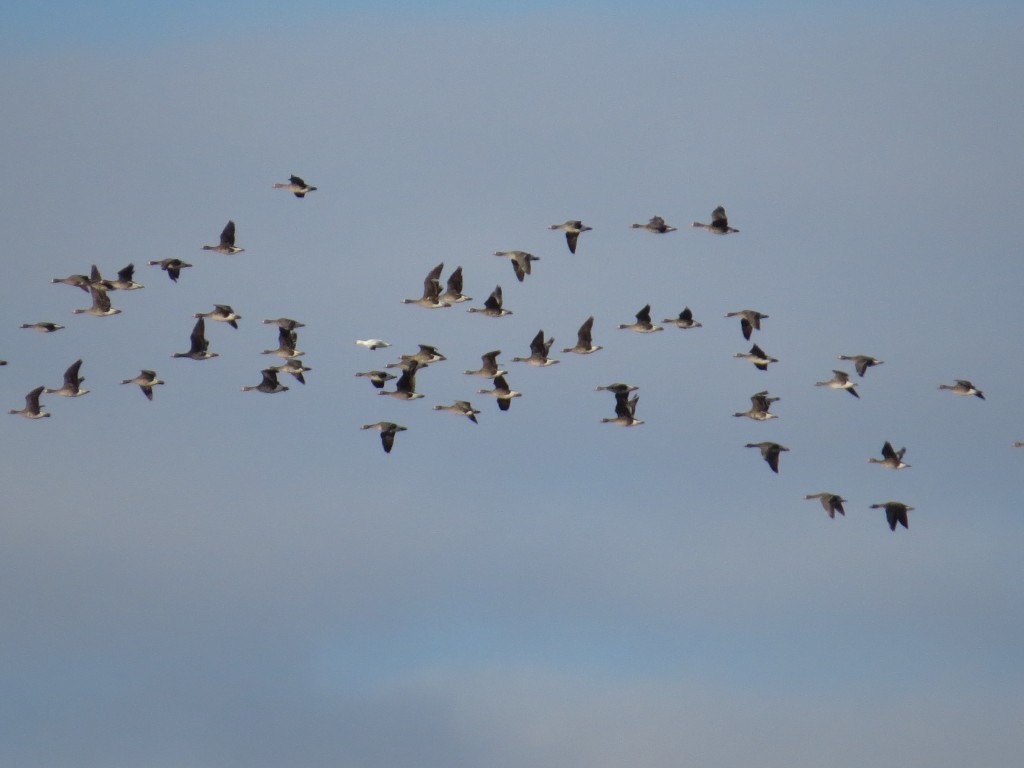
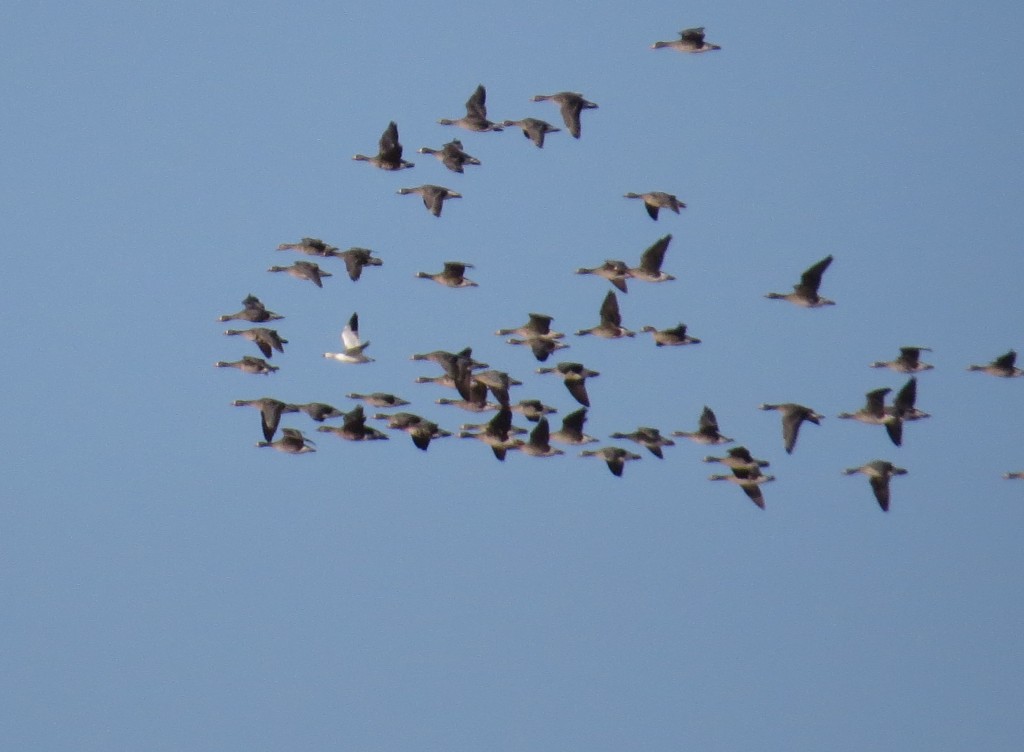
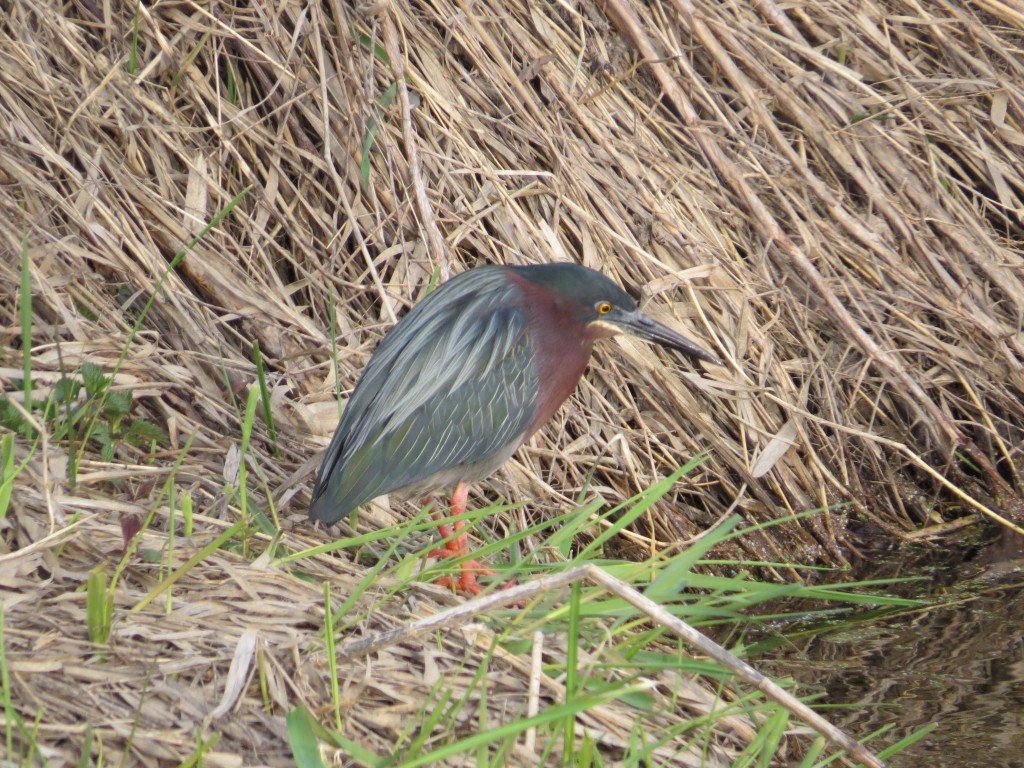
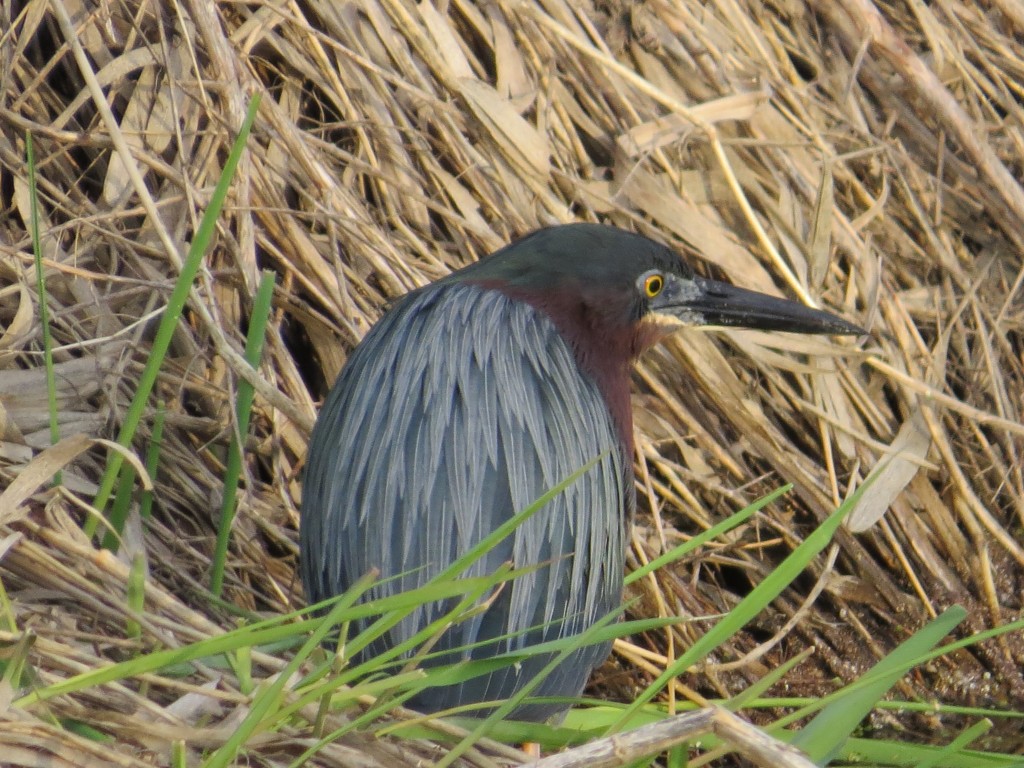 Nice eye, Evan. We ended up seeing two more of these guys after this. It’s always a fun bird to see.
Nice eye, Evan. We ended up seeing two more of these guys after this. It’s always a fun bird to see.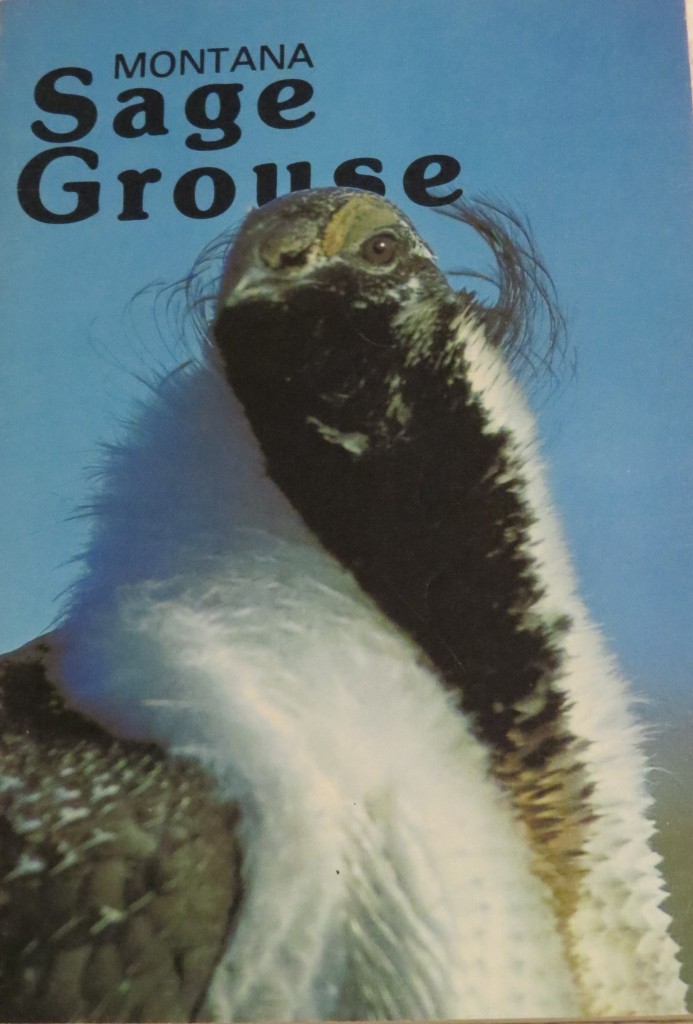
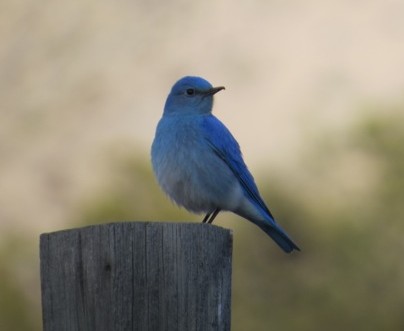
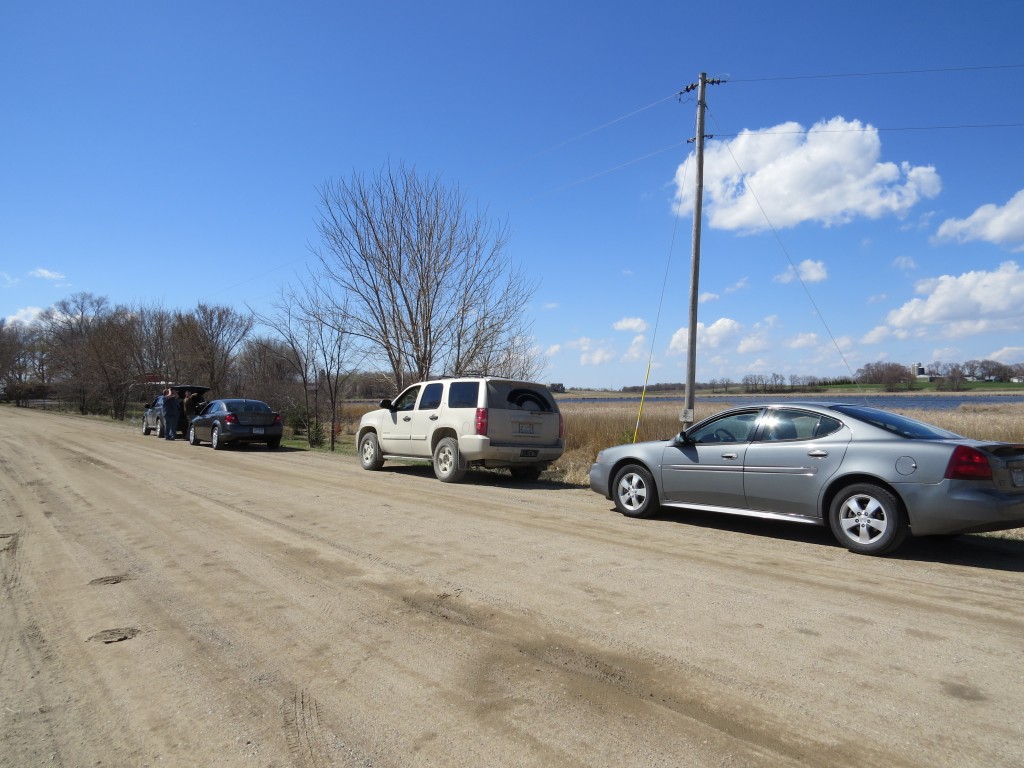
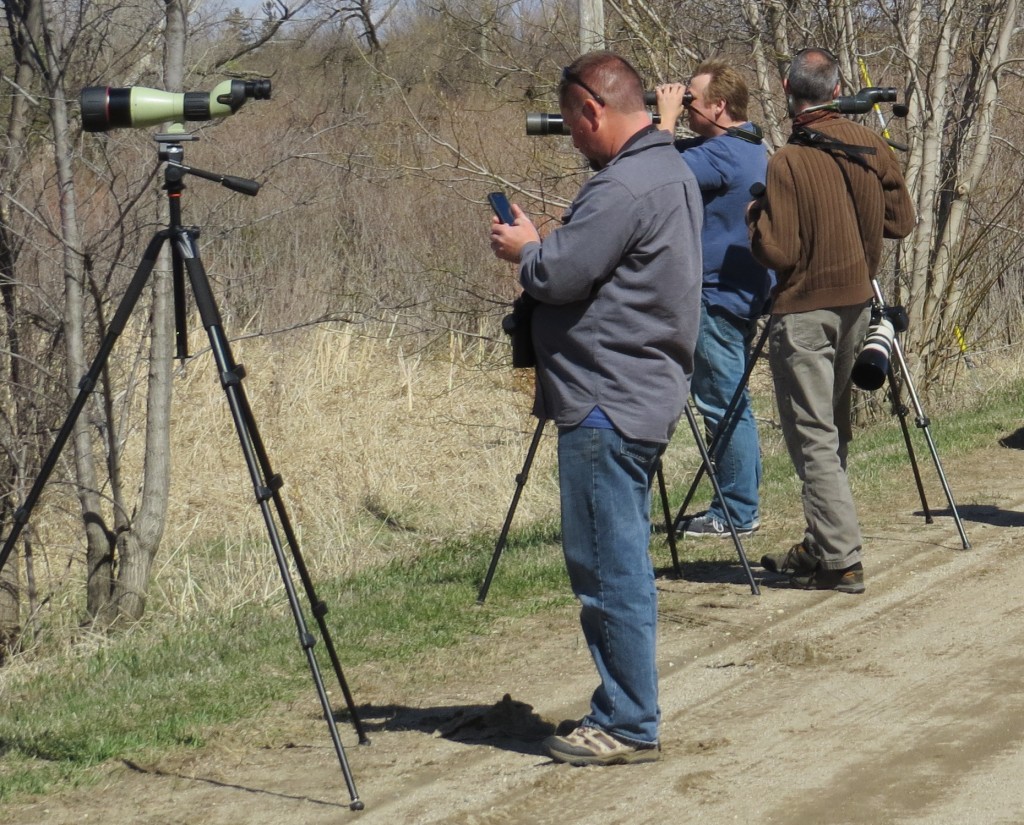
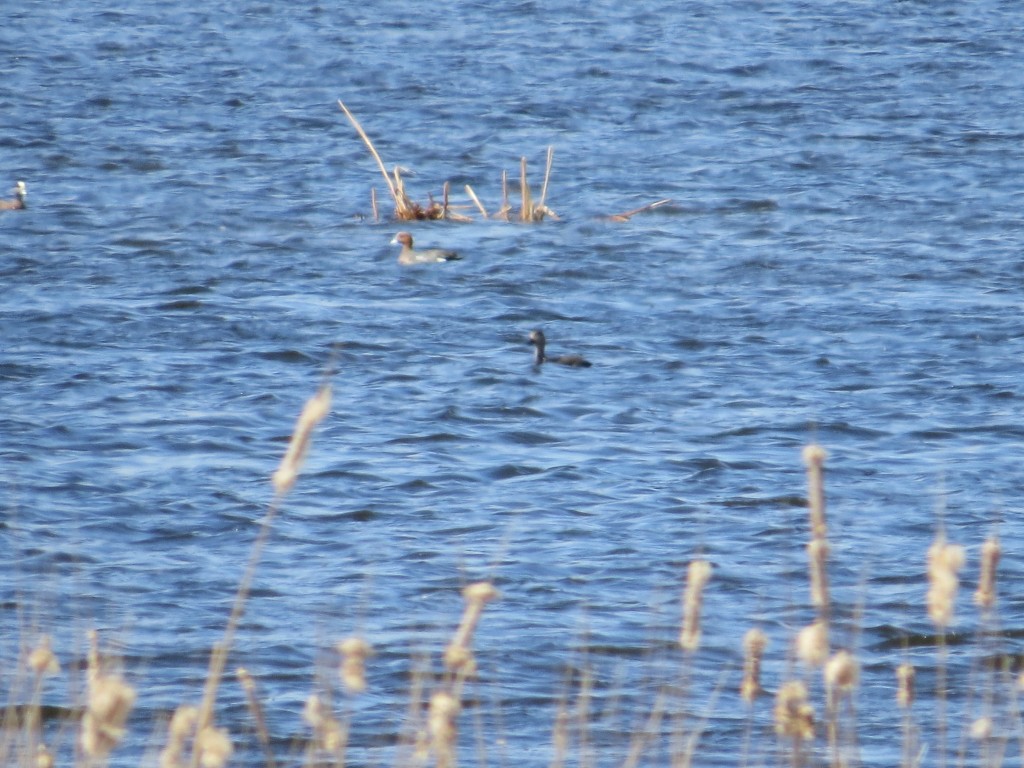
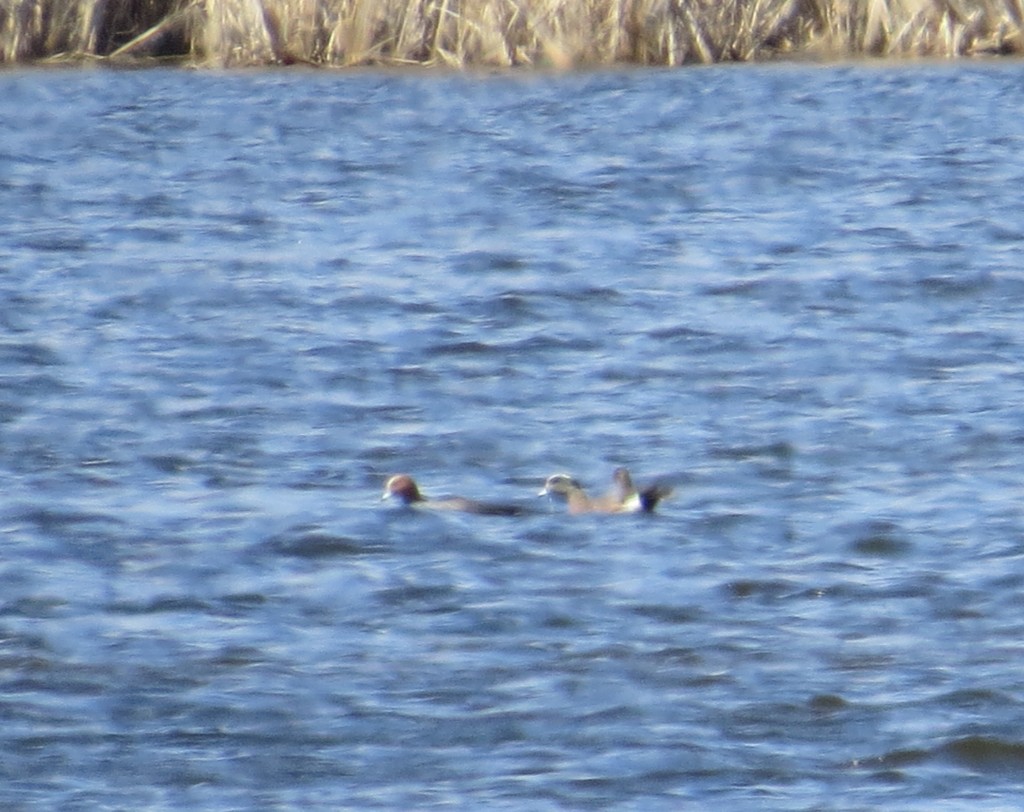
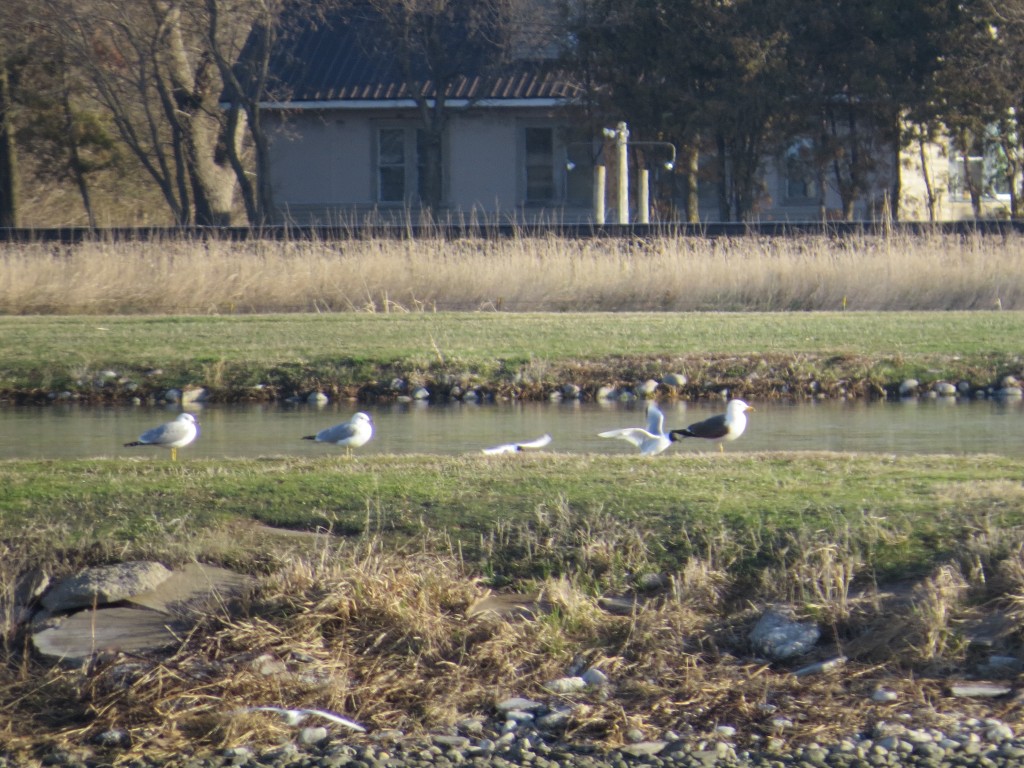
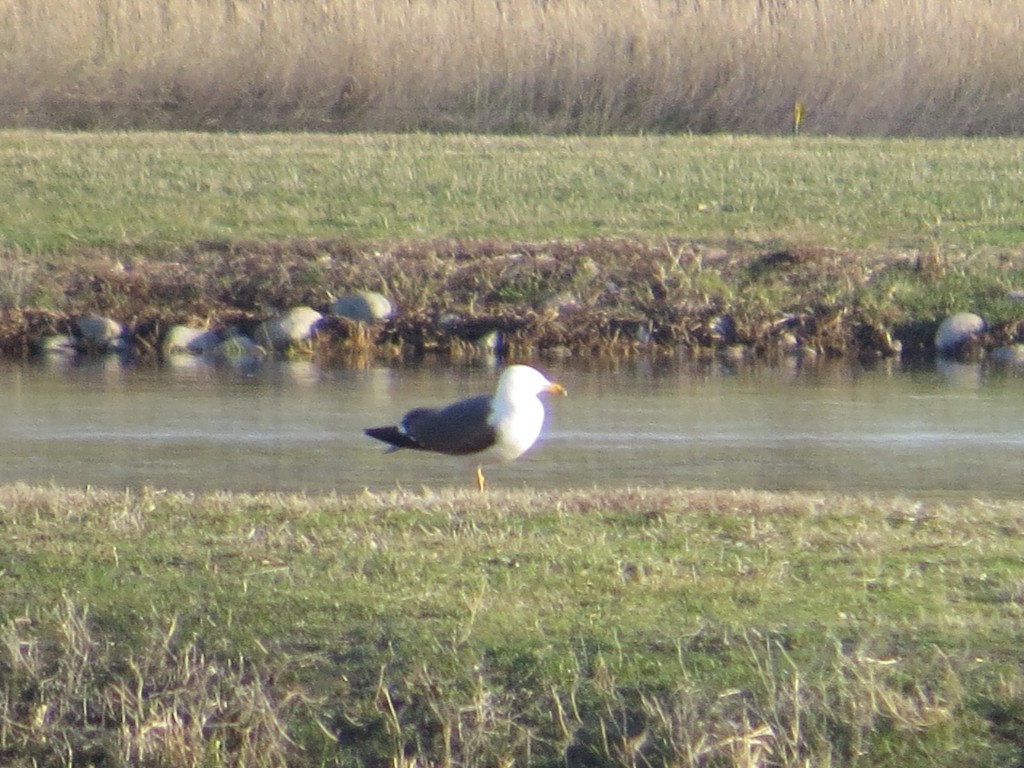

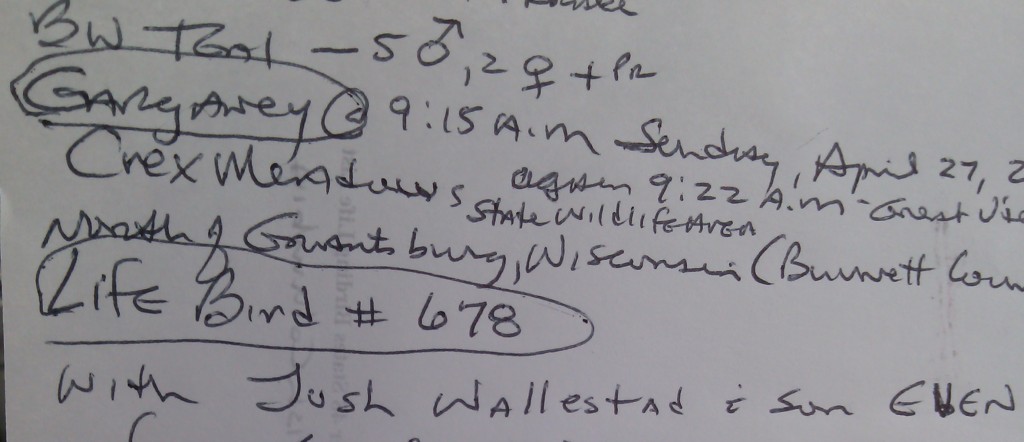
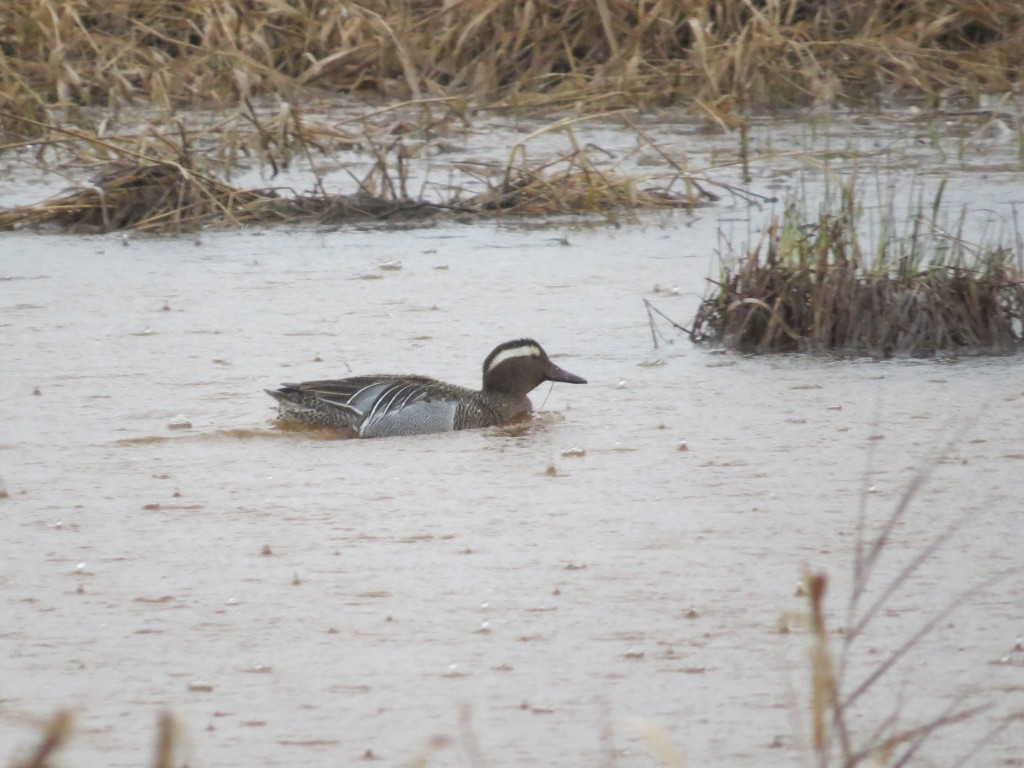
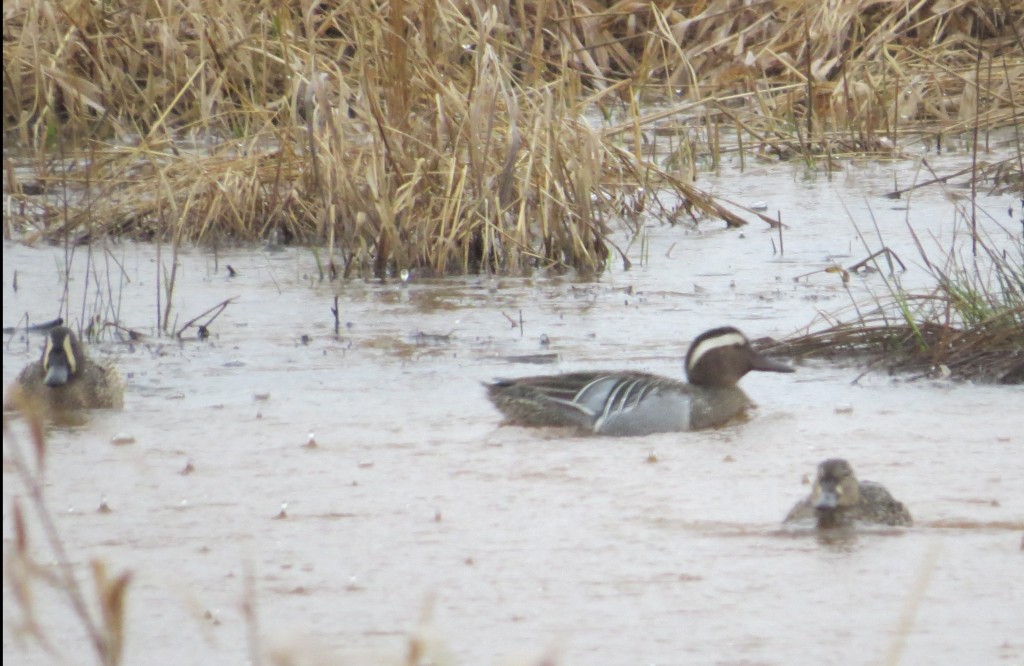
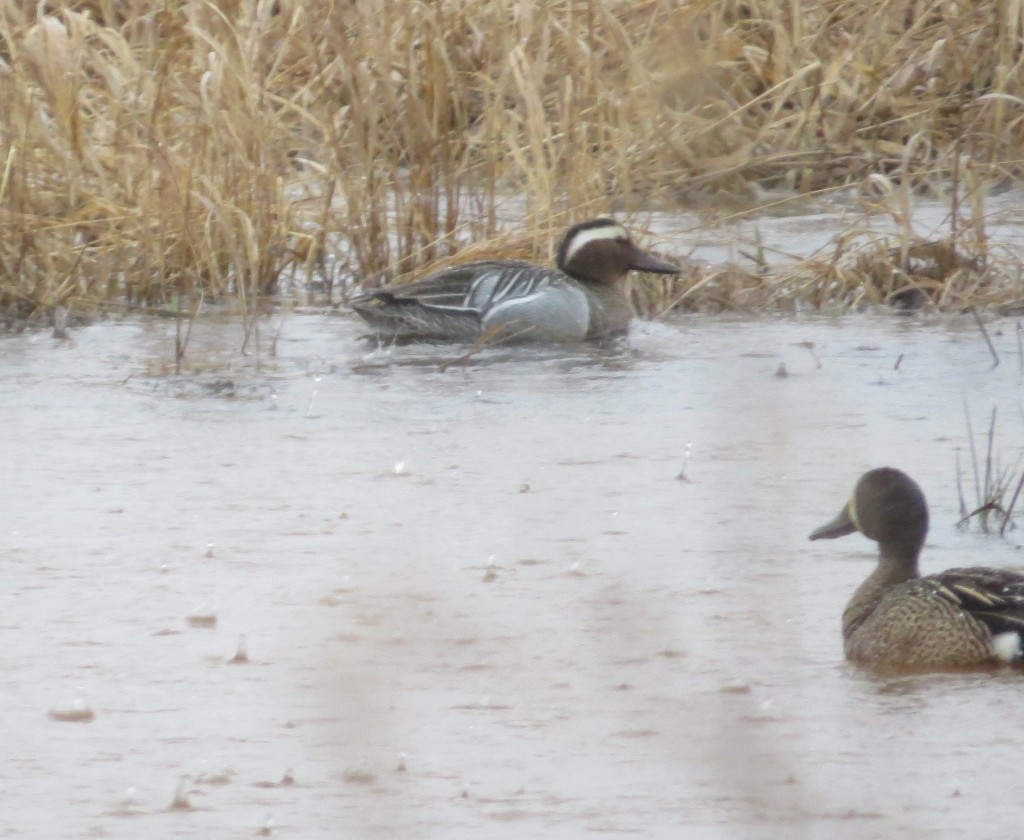
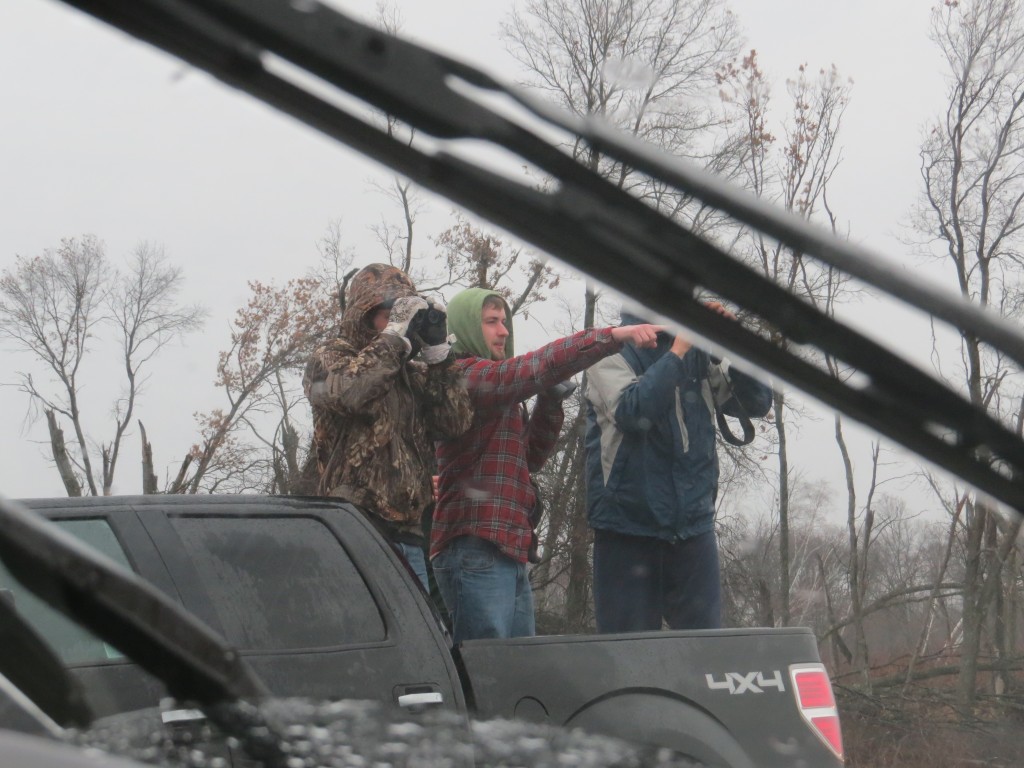
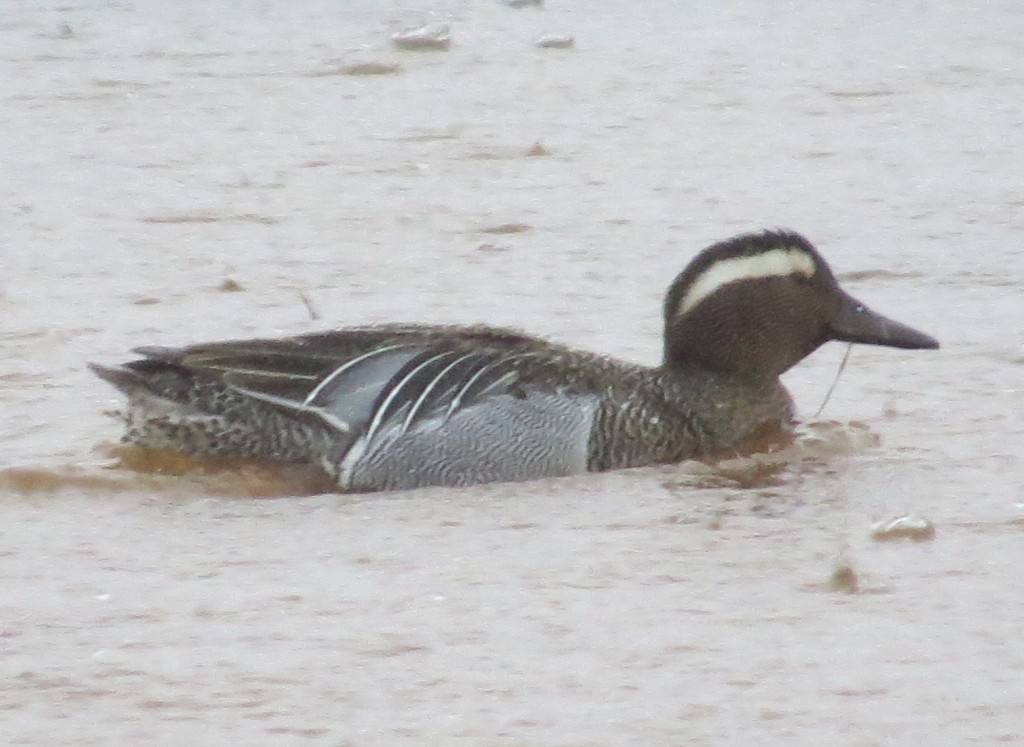

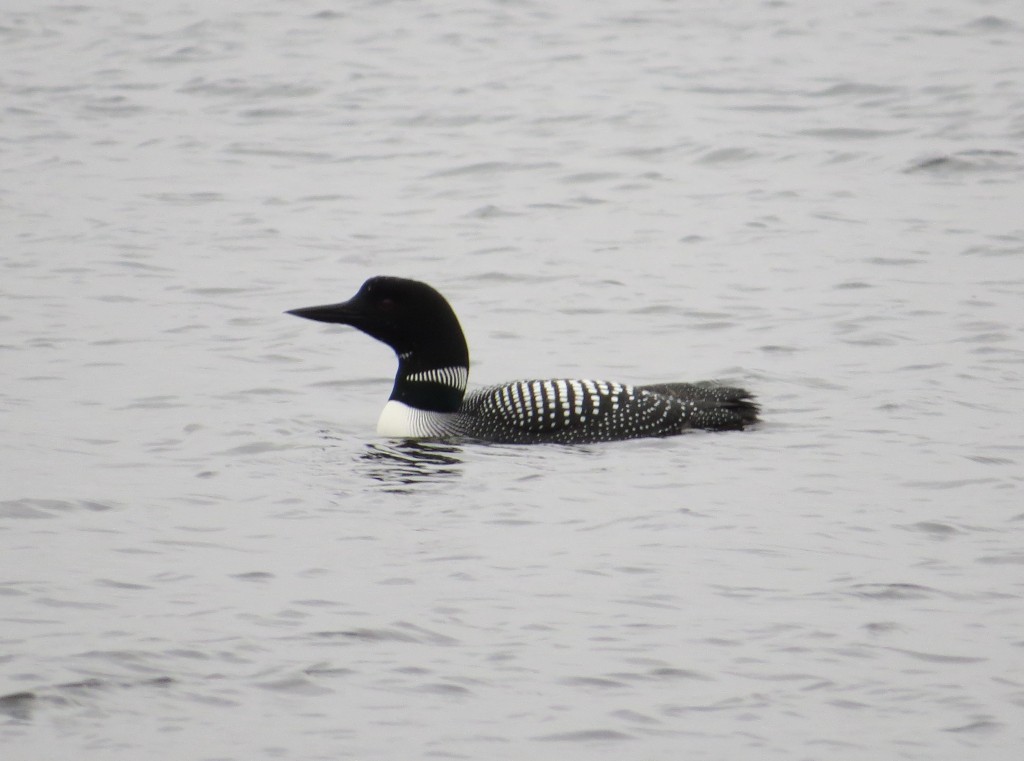
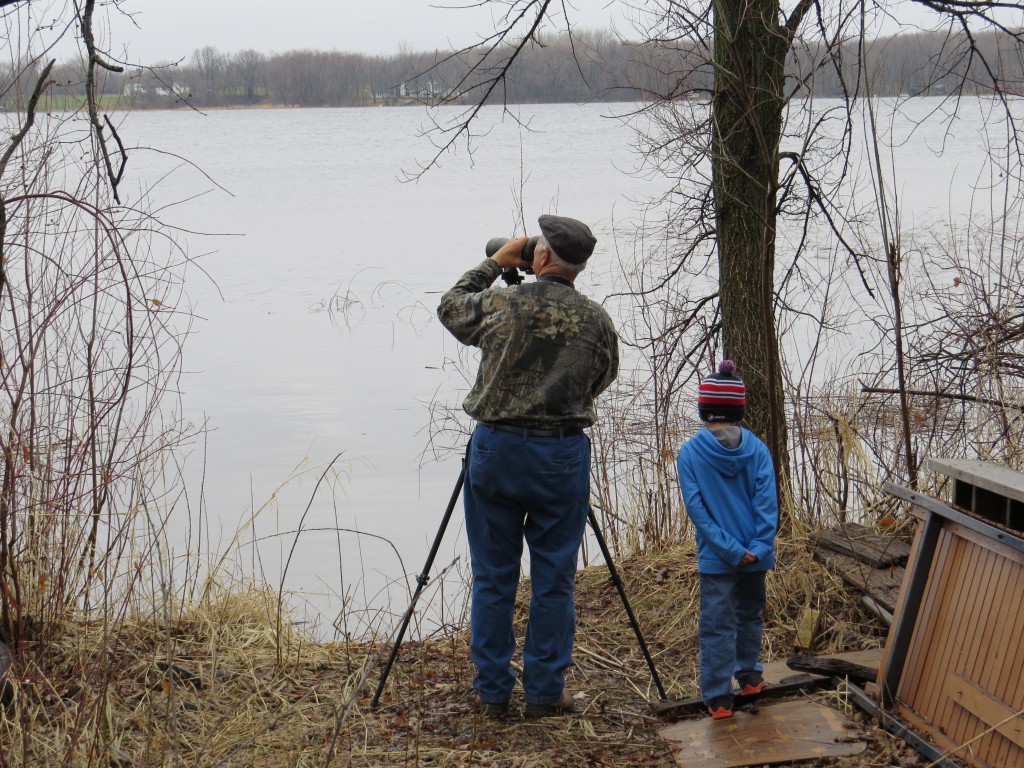 After several more stops, a lot of bird talk, and some very hazardous driving in the Cities in the downpour, we eventually made it home. I could only be so lucky to see the Garganey again. It was a bird and a trip of a lifetime. What a pleasure it was to get to know Ron a little better and go on a thrilling Garganey chase.
After several more stops, a lot of bird talk, and some very hazardous driving in the Cities in the downpour, we eventually made it home. I could only be so lucky to see the Garganey again. It was a bird and a trip of a lifetime. What a pleasure it was to get to know Ron a little better and go on a thrilling Garganey chase.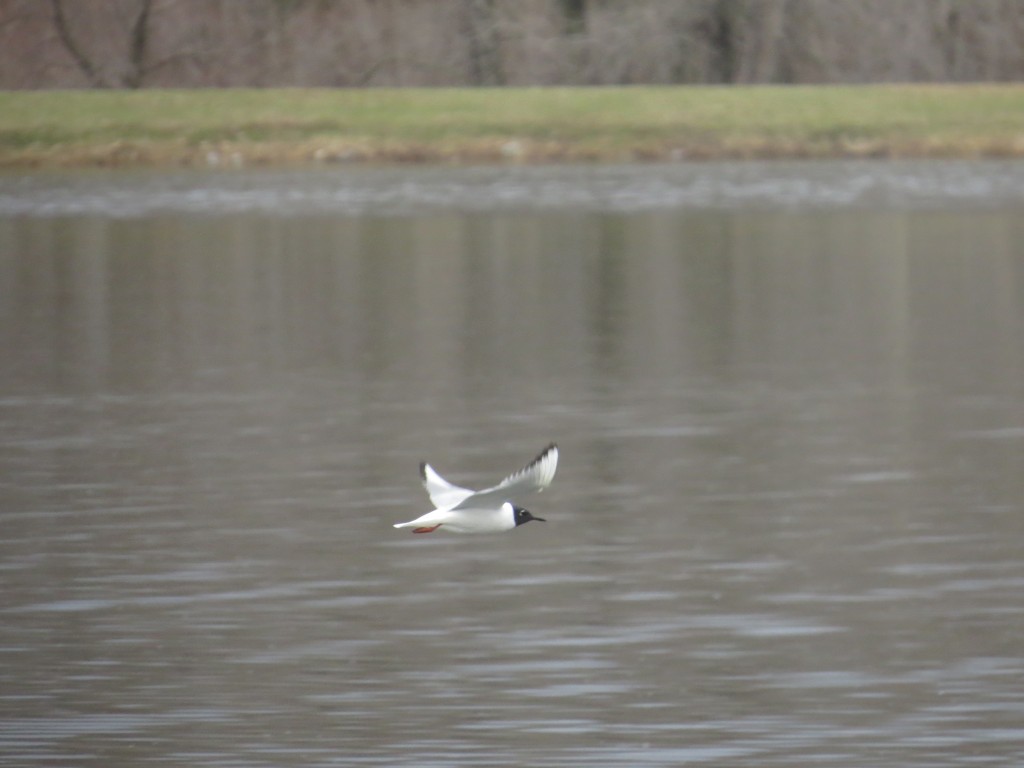
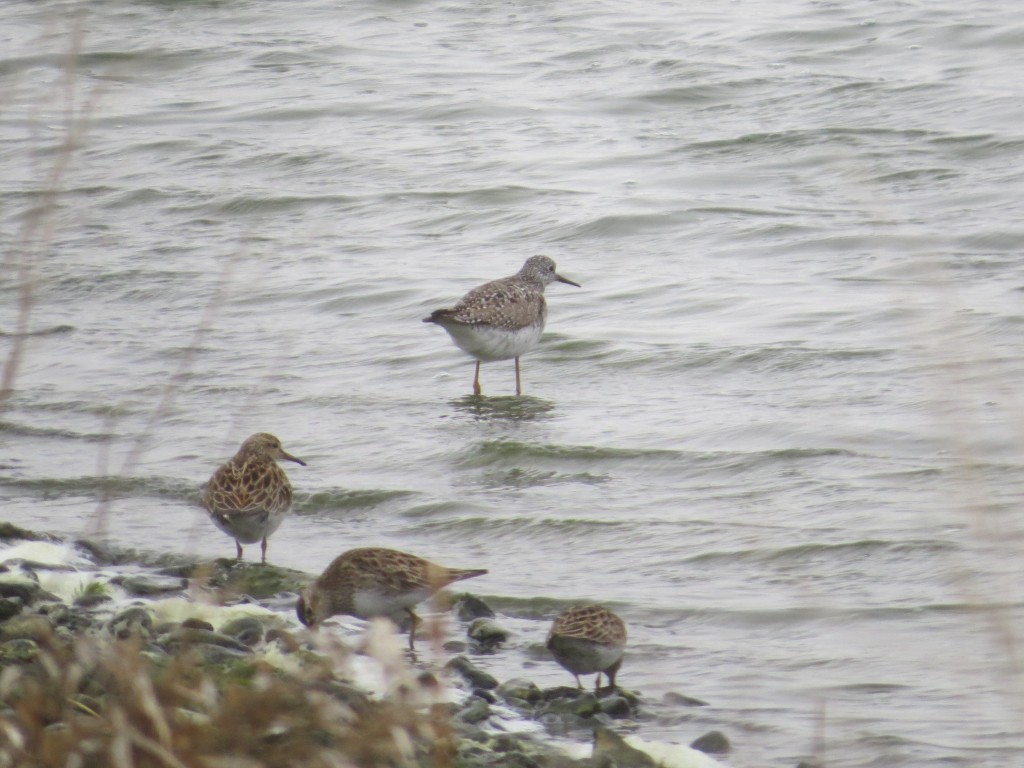
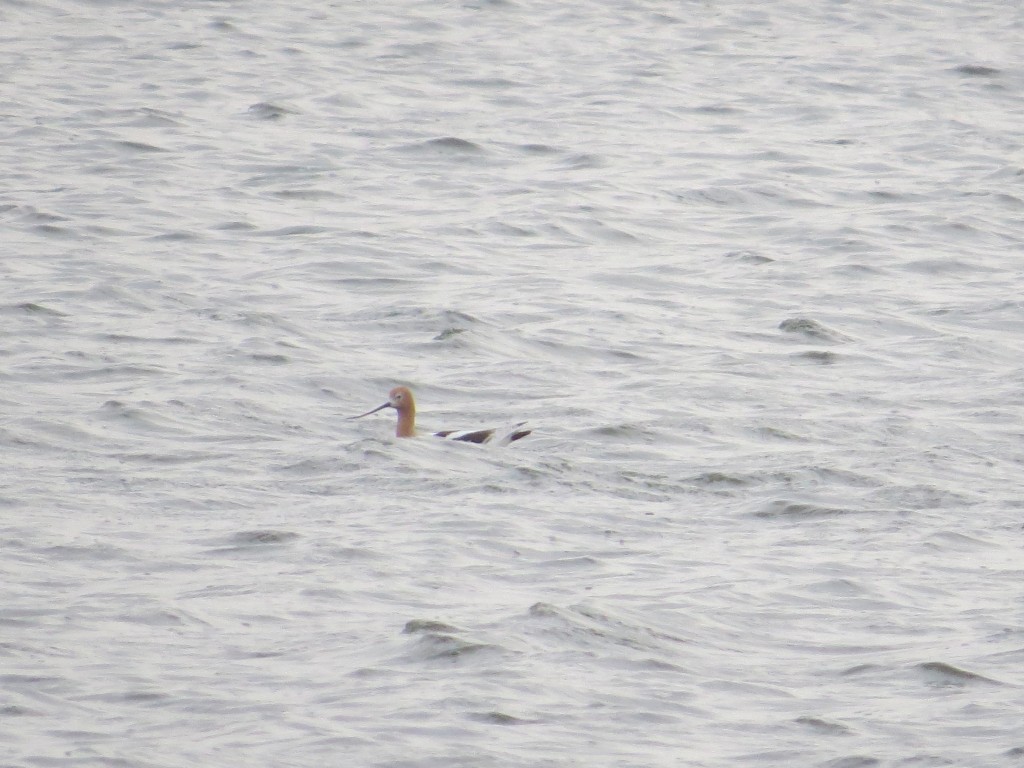
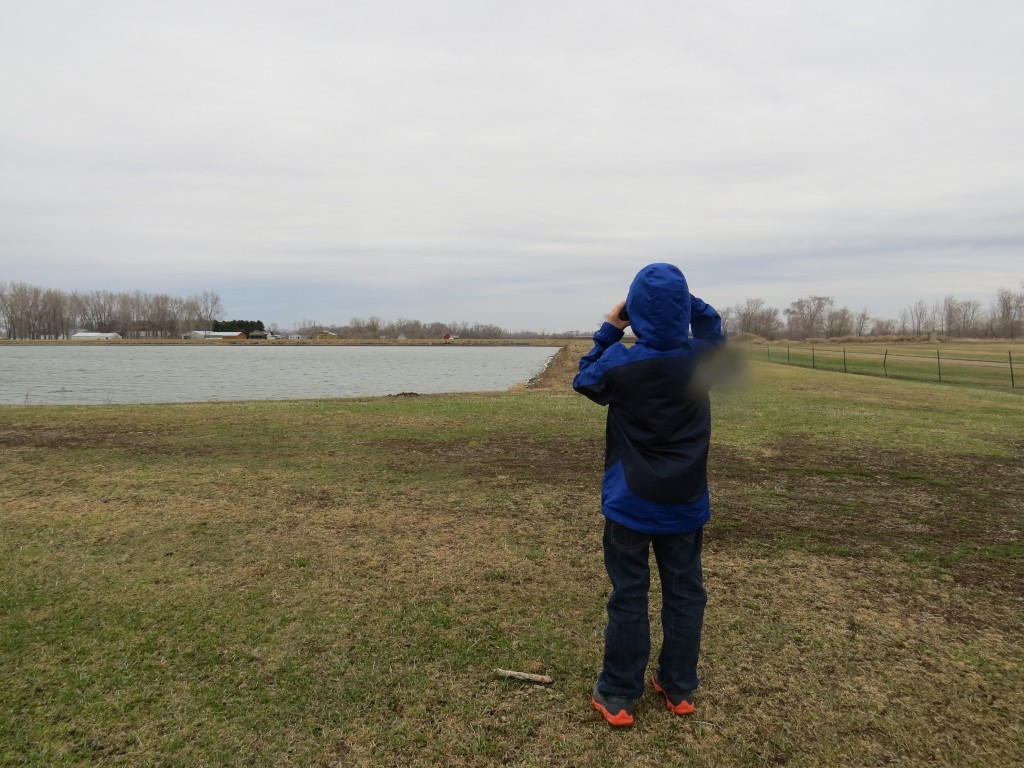
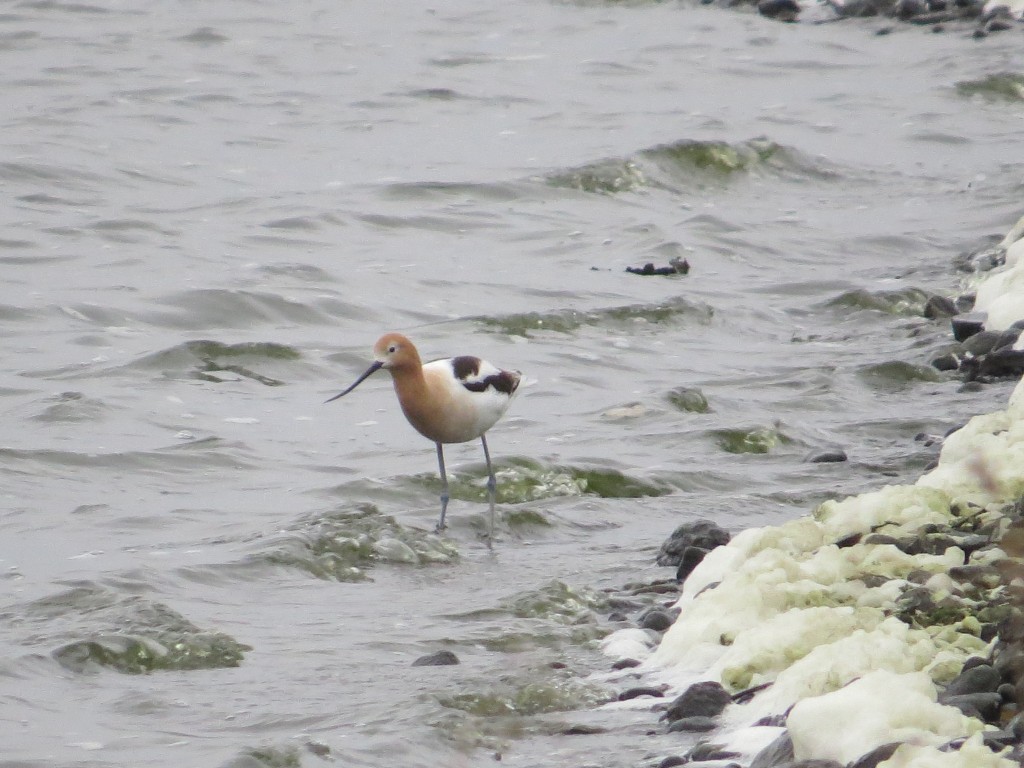 I had texted Steve and got him on the road right away. I knew that he’d probably want this one for his county list. While we waited for Steve, Evan and I kept trying to get good looks and photographs of this bird. I knew Evan was digging this new bird since he was with me the whole time in the chilly 42 degree weather of wind and spitting rain. A couple times we went back to the vehicle to warm up. When my fingers would thaw, I’d head back out again to try for better photos. I figured Evan had his fun and would just stay in the car, but when I was out doing my sneaking, I’d look back and see that he had left the comfort of the car for just one more look.
I had texted Steve and got him on the road right away. I knew that he’d probably want this one for his county list. While we waited for Steve, Evan and I kept trying to get good looks and photographs of this bird. I knew Evan was digging this new bird since he was with me the whole time in the chilly 42 degree weather of wind and spitting rain. A couple times we went back to the vehicle to warm up. When my fingers would thaw, I’d head back out again to try for better photos. I figured Evan had his fun and would just stay in the car, but when I was out doing my sneaking, I’d look back and see that he had left the comfort of the car for just one more look.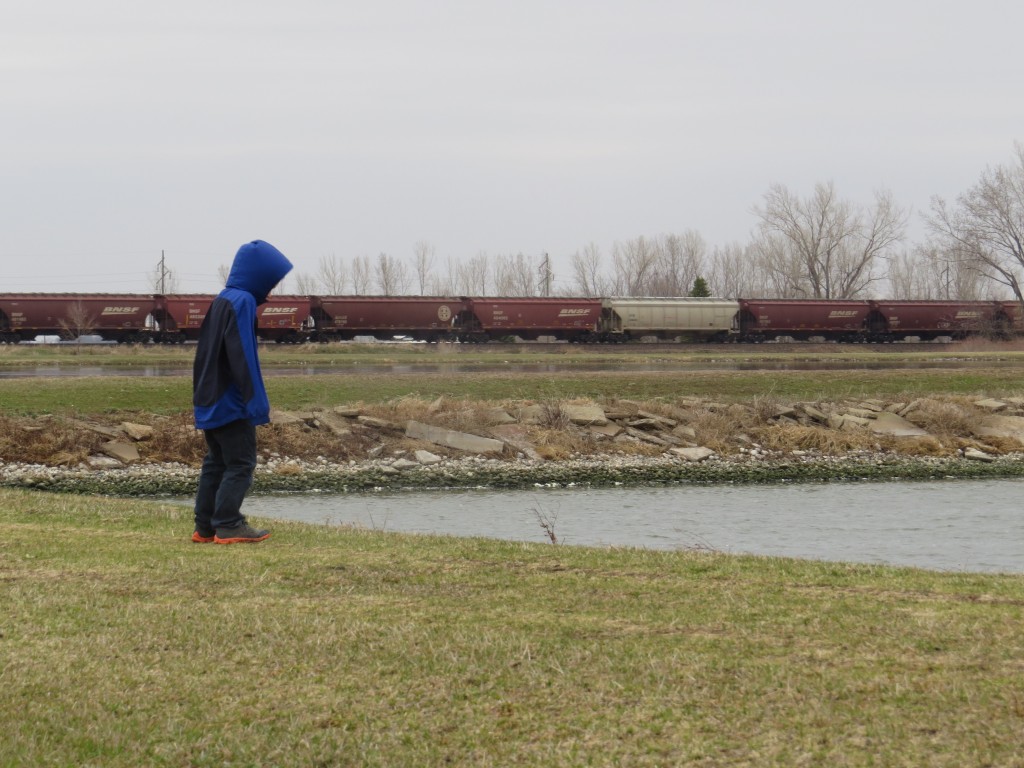 Who could blame him with a bird like this?
Who could blame him with a bird like this?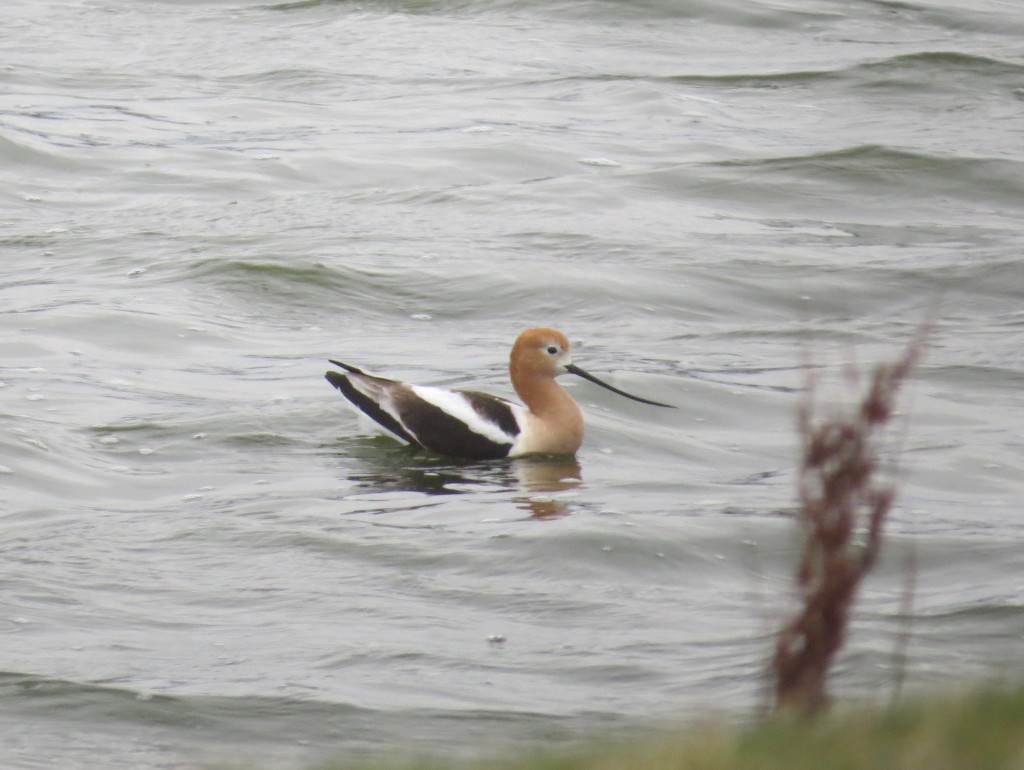
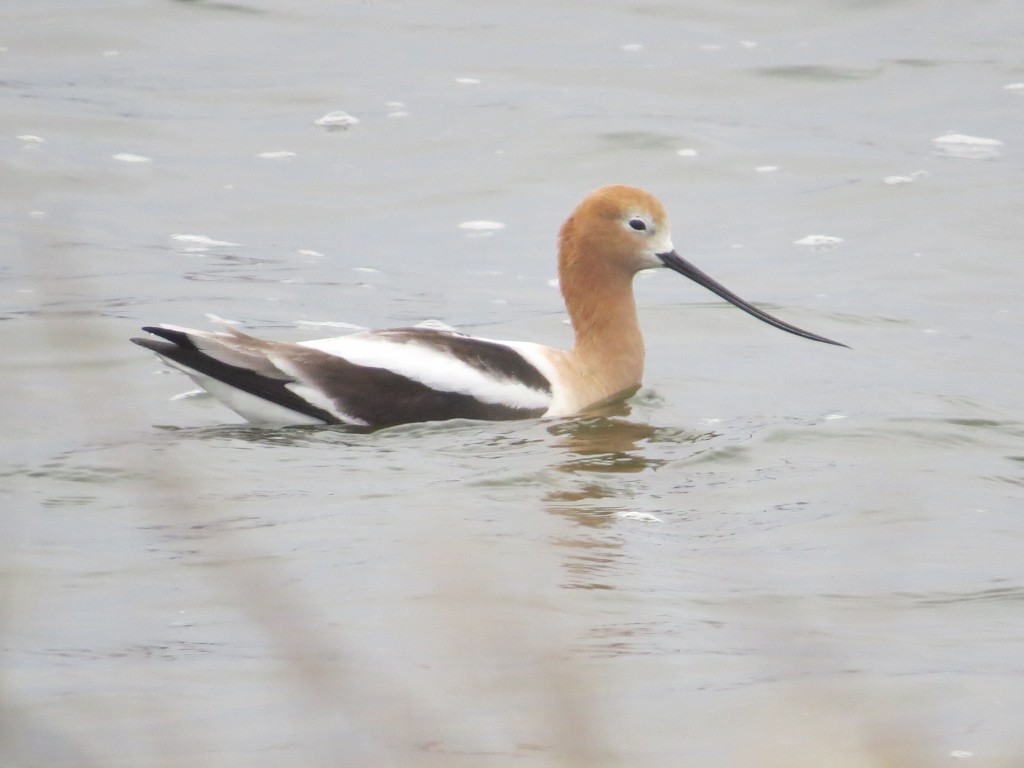 Several times I would sneak over the dike to try to get good photos. The bird would spot me, vocalize an alarm, and then fly out and land in the water about 20 feet from shore. It would then feed and work its way back to the shore.
Several times I would sneak over the dike to try to get good photos. The bird would spot me, vocalize an alarm, and then fly out and land in the water about 20 feet from shore. It would then feed and work its way back to the shore.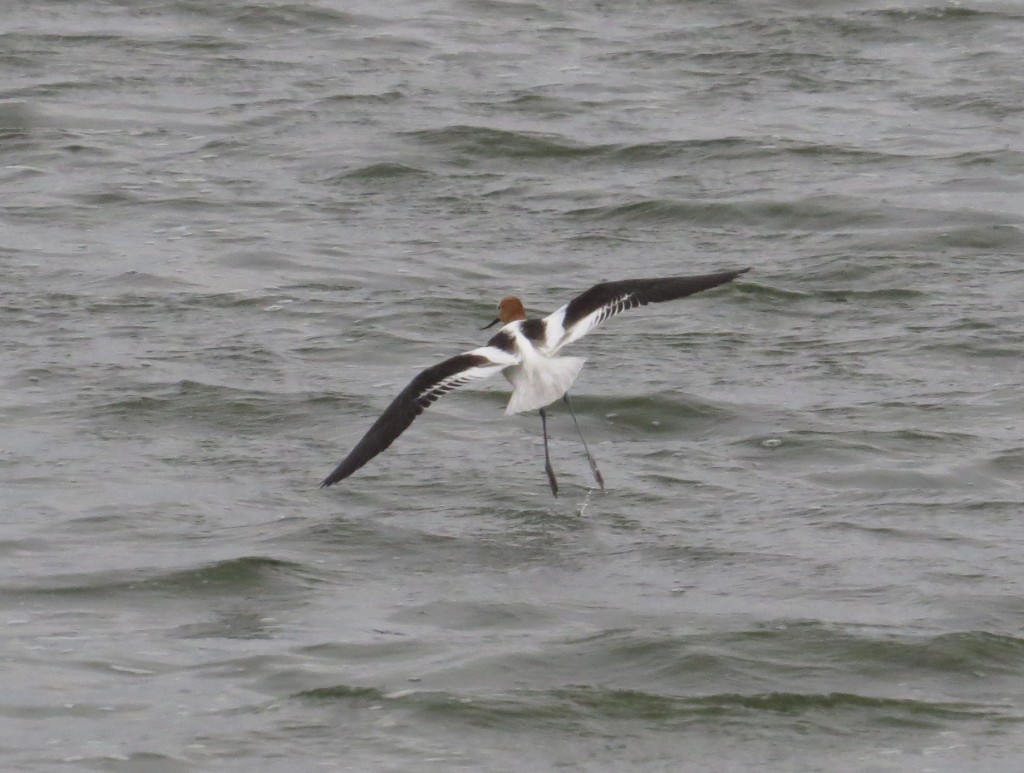
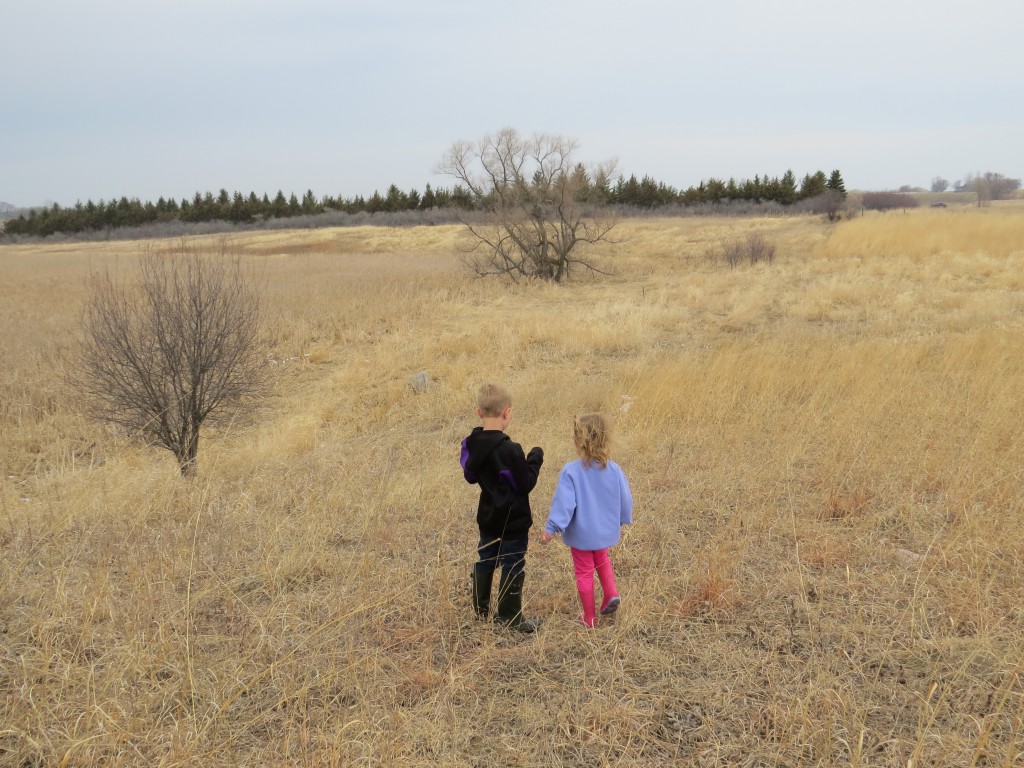
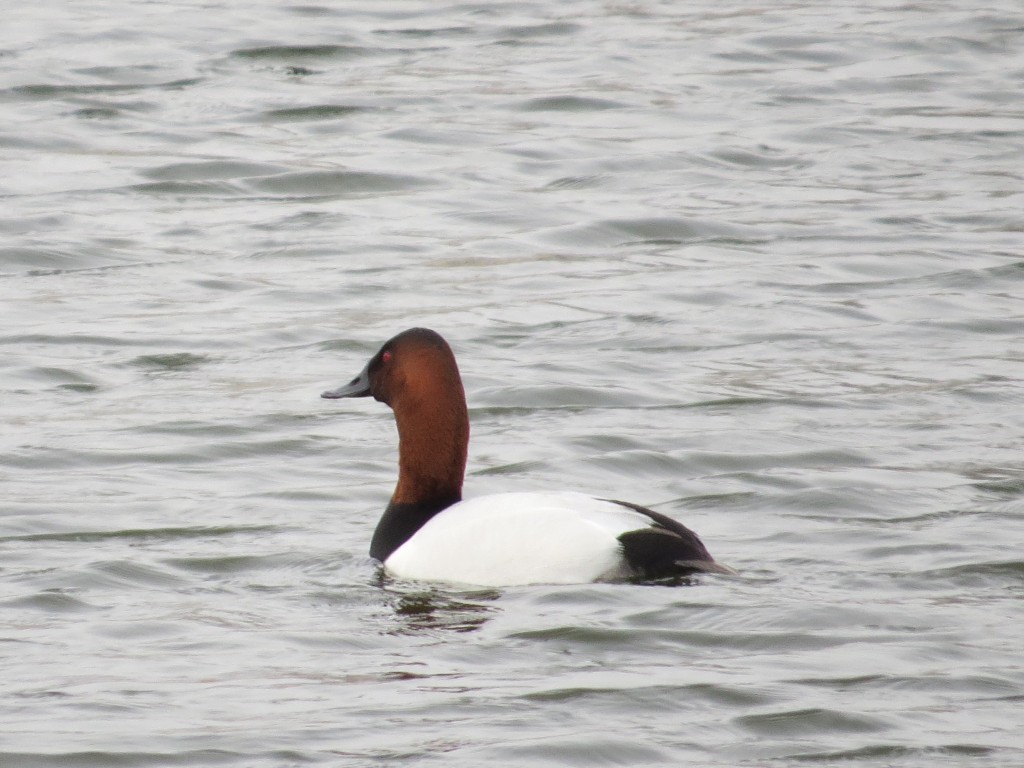
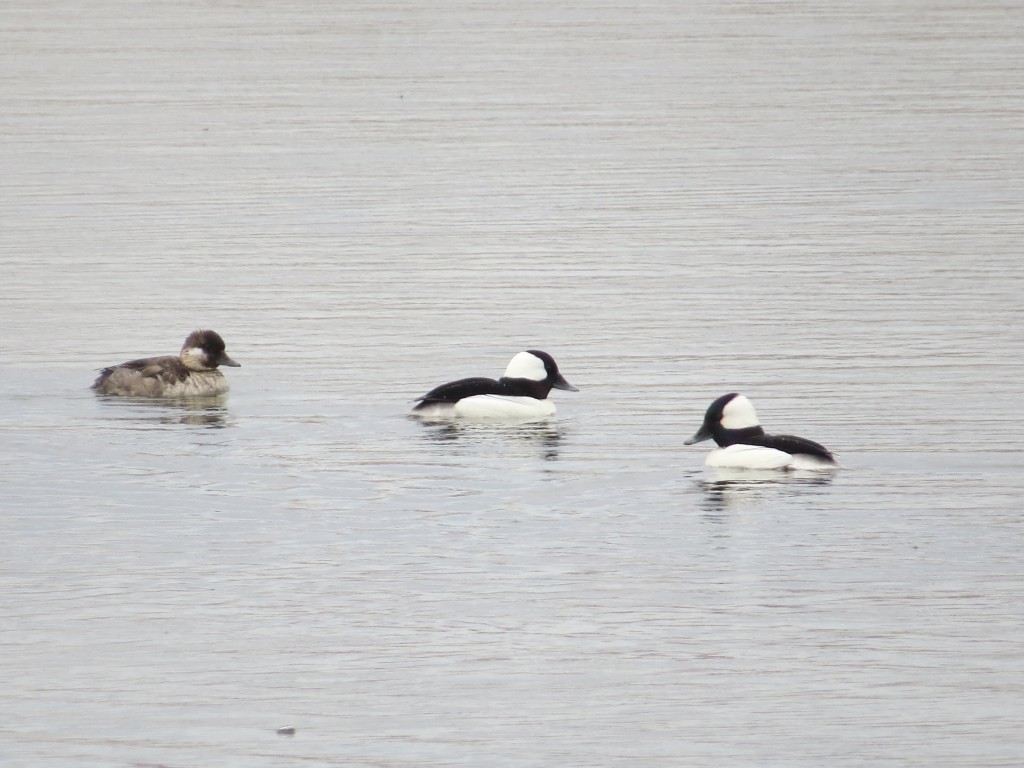
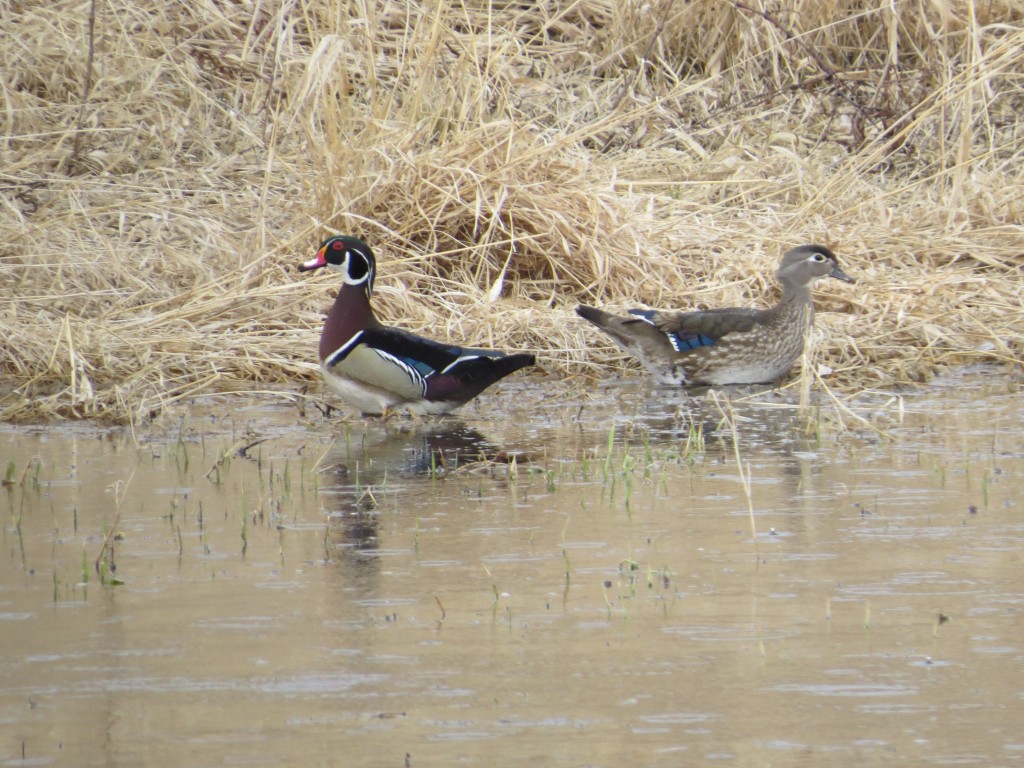
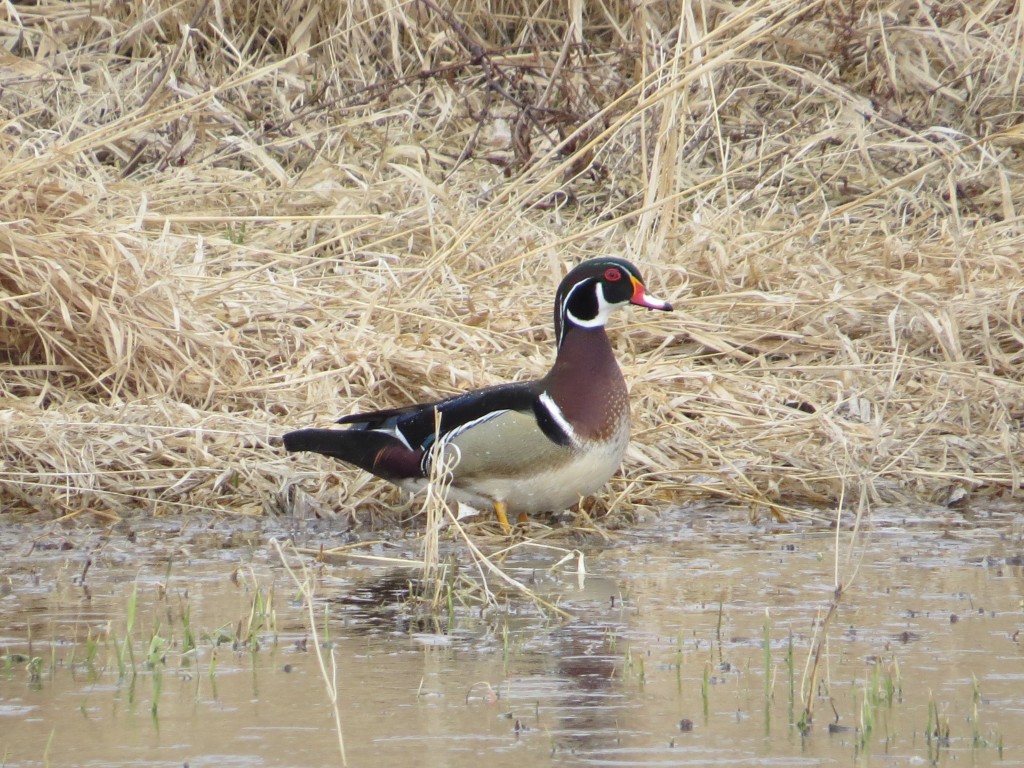 As we drove on, Evan spied his own pair of Wood Ducks in a marshy little puddle on his side of the road. The kids and I watched them for quite a while as they tried to evade us in the thin cover. These two were more in sync with each other than the previous pair as they were at least heading the same direction in life.
As we drove on, Evan spied his own pair of Wood Ducks in a marshy little puddle on his side of the road. The kids and I watched them for quite a while as they tried to evade us in the thin cover. These two were more in sync with each other than the previous pair as they were at least heading the same direction in life.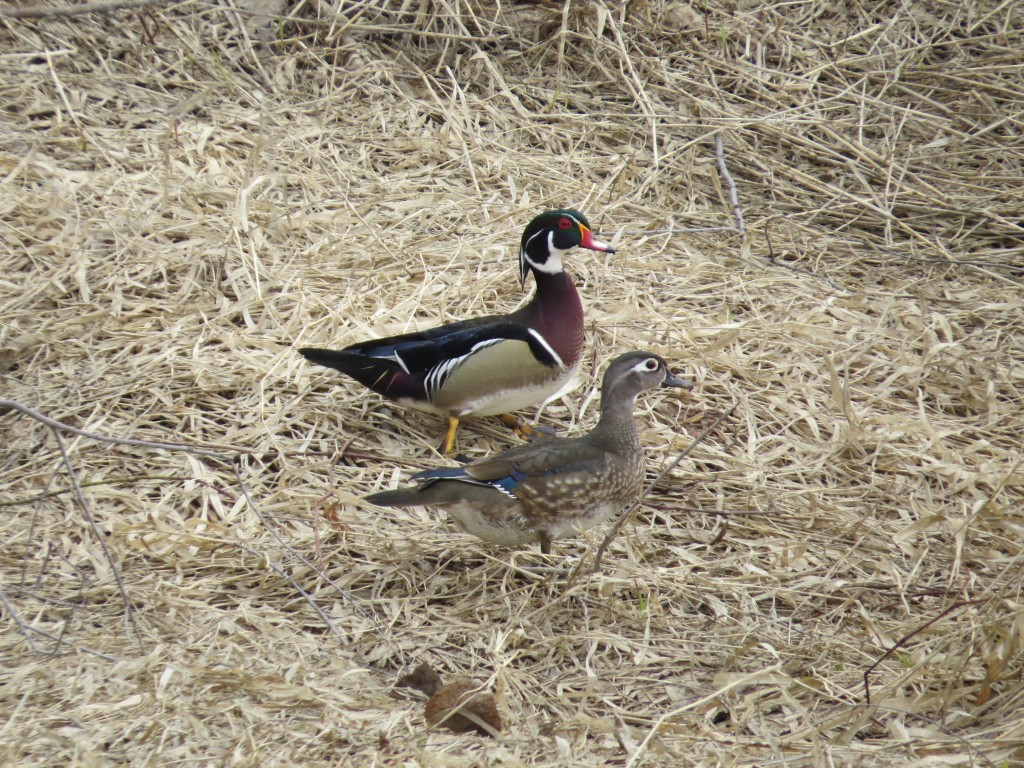 Once we got home, the kids hopped out of the car to go play with the neighbor girl. As I was unloading my things I heard an awful noise, like a cat being murdered. It had been nearly a year, but I knew the sound and I can assure you that, indeed, a cat was not losing its life. It was the disturbingly cool croaking sound of a Yellow-headed Blackbird! In the yard no less. It didn’t take me long to locate it at the top of one of the trees.
Once we got home, the kids hopped out of the car to go play with the neighbor girl. As I was unloading my things I heard an awful noise, like a cat being murdered. It had been nearly a year, but I knew the sound and I can assure you that, indeed, a cat was not losing its life. It was the disturbingly cool croaking sound of a Yellow-headed Blackbird! In the yard no less. It didn’t take me long to locate it at the top of one of the trees.